.webp)

Deo Tibba Peak Expedition
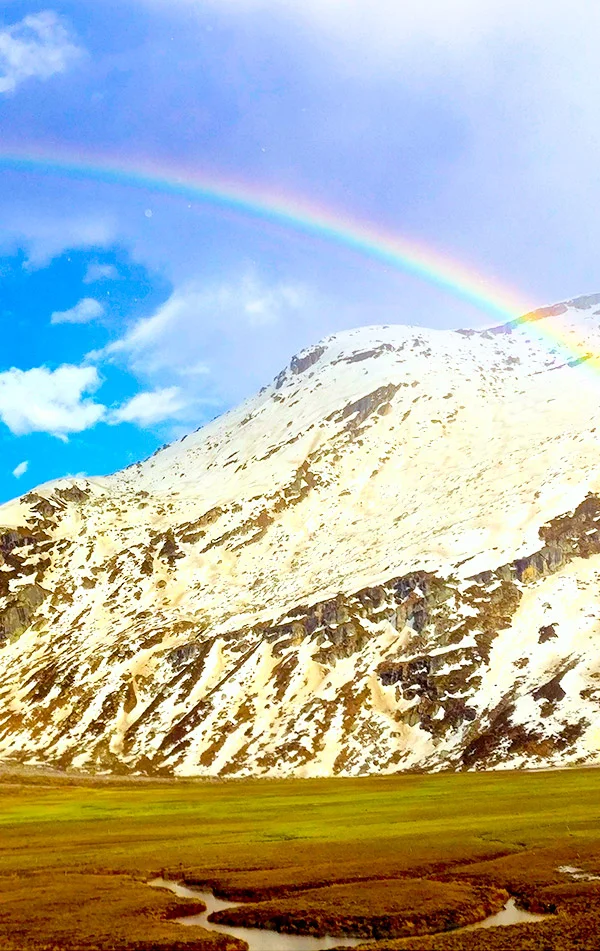
Himachal Pradesh |
Himachal Pradesh | India
Max Altitude
Trekking Km
Help & Support
64500 /person $ /person.
- +5% GST (goods and services tax)
- Services Manali to Manali
For more information. Please complete this form.
Help & Support
Trek Name: Deo Tibba Peak Expedition
Adventure Type: Mountaineering
Base Camp: Manali
Season: Summer | Monsoon |
Month: June | July | August | September |
Country: India
Altitude: 19700 Ft.
Grade: Difficult
Rail Head: Pathankot is the nearest rail head to the base camp
Stay: Camping (Twin sharing) & Hotel/Guesthouse
Food: Meals while on trek (Veg & Eggs)
Location: Himachal Pradesh
Distance: 60 Km.
Trail Type: Summit, Point to point | Scale a peak, Camping at the same location upon returning.
AirPort: Bhuntar, which is 52 km away from Manali
Why Deo Tibba Is A Must-Do Trek:
Deo Tibba stands as a prominent 6000-meter peak, ranking as the second-highest in the Pir Panjal Mountains.
Unlike traditional pointed ridges, Deo Tibba's summit surprises with a snow dome, resembling an ice cap.
The trek unfurls the diverse beauty of Himachal Pradesh, traversing through Jagatsukh village, dense forests, Birch trees, meadows, and glaciers.
- Scenic elements include lakes, waterfalls, and rockfalls, showcasing the rich tapestry of the Himalayas.
- Despite being a 6000-meter peak, Deo Tibba demands mountaineering-style climbing with technical equipment like fixed ropes, crampons, and ice axes.
- Recommended only for seasoned trekkers possessing technical expertise.
- Deo Tibba is a challenging trek, demanding more strength and endurance compared to easier treks.
Deo Tibba is a 6000-er peak and is the second-highest peak of the Pir Panjal Mountains. It is in the Kullu valley and the trek to Deo Tibba starts from Manali. There is a local belief that Gods assemble on the top hence the name Deo Tibba. The peak is climbed during many Mountaineering Courses expeditions by the ABVIMAS institute because it has technical importance. However, the peak is
suitable for trekkers starting in the mountaineering field.
The peak is exceptional in a way that the summit is not a pointed ridge but a snow dome just like an ice cap. The trail to the summit goes through the beautiful Himachal Pradesh. First comes the beautiful Jagatsukh village near Manali and all along the trail, you will be greeted with many scenic sights. Right from the beginning of each day, the trail keeps changing, starting with the dense forests to Birch trees to meadows to a glacier, showcasing every element of the Himalayas. It also never shies from showing lakes and waterfalls including rockfalls!
Even though it is a 6000-er like Stok Kangri the peak requires mountaineering-style climbing. It requires a load ferry, crossing technical terrain difficulties, using fixed ropes, crampons, ice axe, etc. Therefore, Deo Tibba is a proper mountain expedition. It is recommended only for experienced trekkers having technical knowledge.
About The Trek
One of the most beautiful yet challenging treks in Manali, Deo Tibba takes you through lush forests of coniferous collective like pine, spruce, oak, fir, and silver birches with beautifully changing landscape to the top of the Deo Tibba summit.
The trek starts from Manali and on the first day of trekking, you will trek up to Chikka, crossing the beautiful village of Jagatsukh. It is one of the most beautiful Himalayan villages and was once the capital of Kullu. Chikka is a beautiful campsite where you will stay the night and the following day, you will head to Seri from Chikka. Seri is your next campsite after Chikka and then we will trek to Deo Tibba Base Camp the next day. Since Deo Tibba is a high-altitude trek, we need to take into consideration the fact of acquiring AMS, and as such we take necessary acclimatization measures.
Days 5 and 6 are acclimatization days. On day 5 you will rest and acclimatize yourself to the higher altitudes while on Day 6 we will load a ferry to Camp 1 and back to Deo Tibba Base Camp. The next day you will trek to Camp 1 from Deo Tibba Base Camp and stay the night at Camp 1. We will use the load ferry concept again the next day. You will load the ferry to the summit camp and make it back to Camp 1. The 10th day will be when we will make a summit attempt and then return to Camp 1. The next day you will descend to Deo Tibba Base Camp and the following day to Chikka and on the 13th day, you will head back to Manali ending the wonderful journey.
What Can You Expect At The Trek
The trek offers beautiful views of mighty Himalayan peaks like Deo Tibba (6001 m), and Indrasan (6220 m). You will pass through several scenic destinations along the trek like Chikka, Seri, and Tainta as well as mini Chandrataal. You will also get a glimpse of the rivulet Ravi.
Deo Tibba is a difficult grade trek and as such it requires more strength and endurance as compared to other easy-level treks. It is best if you first gain experience in climbing 3000 m peaks and level up with a 6000-er. However, for beginners who are committed to completing the trek, start preparing at least 3 months before the trek so that you can be physically and mentally prepared for the trek.
Deo Tibba is a high-altitude trek and as such in the early months of the year, there are chances of snow on the higher passes which considerably starts to melt by August. mid-June to October is a good time to do the Deo Tibba Trek. The temperature ranges between 10 to 15 °C during the day and dips to a subzero temperature between -2 to 5 °C at night time. Appropriate clothing to battle the cold is advised. We suggest avoiding trekking in the monsoon because these places see heavy rainfall and the route can be extremely slippery and not to mention roadblocks and landslides due to the rain.
Trek The Himalayas offers transportation from and back to Manali and we also offer professional, mountaineering-certified trek leaders, guides, and support staff to help and assist you at every point of the trek. Also, the climatic conditions at higher altitudes vary a lot from the plains and proper acclimatization is very important. Keeping this in mind, we have included acclimatization days in the itinerary as well as the concept of load ferry, to give your body enough time to adjust to the lack of oxygen at higher altitudes. Meals are provided by us for all days of your trek with breakfast, lunch, and dinner and all the meals are nutritious and healthy.
- Who can Participate
- Important Links
- How to Reach
- Trek Essential
Who Can Participate
Age; 15 years.
Experience of any high altitude trek, at least 1 treks of 5,000m/16,400ft.
The climber must be fit and have sufficient stamina to cover 6 km of distance in 35 minutes without stress.
The climber should be able to carry a 12-16 kg backpack.
Pulse rate at rest must be in between (60 to 90 beats per minute)
Blood Pressure Reading must be in between (DIASTOLIC 70 – 90, SYSTOLIC 100 - 140 mm Hg)
Respiratory rate at rest must be in between (12 to 20 breaths per minute)
Should not have Liver and kidney issues
Should not have Diabetes Mellitus, Bronchial Asthma, Heart problems, Hypertension etc
No pacemaker implant
People with the Sinus issues, Epilepsy please contact to trek coordinator before booking the trek
If your BMI is not normal, Please contact our Trek coordinator before Trek booking.
Medical & Disclaimer Form (Mandatory Documents) Click here to download Medical & Disclaimer Form
- Government Employees can avail the benefit of Special Casual Leave (SCL) when you join us for a trekking expedition. As per the rules of the Pay Commission, Special Casual Leave can be availed for up to 30 days in a calendar year for trekking/mountaineering expeditions through a registered organization. Trek The Himalayas is a registered adventure tour operator by Indian Mountaineering Foundation (IMF) and Ministry Of Tourism (MOT)
- Trekkers have to apply for leave at least 20 days before trek departure date,
- This service is exclusive to Indian government employees and is applicable only for treks within India.
- Do mail at info@trekthehimalayas to apply and mention your booked trek date and trek name.
Junior trekkers (below 15 years) should have a company of parents/guardians.
Trekkers between 15 to 18 years can come solo with the disclaimer form signed by parent/guardian.
- Medical & Disclaimer Form (Mandatory Documents) Click here to download Medical & Disclaimer Form
Exercise For Difficult
Fitness Regime For:
Calculate Your Bmi
Your BMI value is
Congratulations, your body is in good conditions!
Arrival at Manali
- Altitude: 2,050 m/ 6,750 ft.
- Check-in at the hotel (CP Plan) (twin/triple sharing).
- Briefing after lunch approx. 12 pm.
- In the evening go sightseeing.
- Visit Hidimba Devi Temple, Vashist Kund, and other major sightseeing points (avoid Rohtang Pass).
- Note: Only hotel stay included in the cost (food and sightseeing are excluded).
Arrive with excitement in the adventure hub, Manali. Get fresh and be ready to explore Manali. Manali is a town located on the banks of the Beas river. It is completely covered with tall Pine trees; the weather is pleasant throughout the year. This rustic enclave offers a beautiful respite for all the tourists who are looking for a break from the monotony of daily lives and the scorching heat of the summers. The glacial waters of the Beas River flowing down from the slopes of Rohtang Pass offer a perfect destination for adventure activities like white water rafting and rowing. On a clear day, you can also see the DeoTibba peak from Manali. You can roam around on Mall Road or visit Hadimba temple (also known as Dhungri temple), and Vashisht Kund. The Vashist village is a sacred village and the locals have a temple dedicated to the sage Vashisht in this temple. Try not to go far or gain height it may hurdle the acclimatization process. Delay your plans of visiting Rohtang pass after the expedition. At night stay in your hotel, give your body adequate rest to begin trekking the next day.
Manali to Chhikka
- Altitude: 3,100 m/ 10,200 ft.
- Altitude gain: 1,050 m/ 3,450 ft.
- Drive Distance: 15 km | Duration: 1 hr.
- Trek Distance: 5 km, 2 to 3 hrs.
- Drive till the local dam at Khanaul via Jagatsukh.
- Enough natural water sources on the way.
- The first 20 minutes is a steep climb.
- Most of the trek is a gradual ascent in alpine forest.
- The last half an hour is on open grasslands.
- Jagatsukh is the old capital of Kullu.
- Chikka is famous for the temple of Nag Devta.
- Stay in the tent (twin-sharing).
Get all ready to begin the first day of your trek. We will pick you up early in the morning post breakfast and refreshments. First, you start with a ride till Sethan and then followed by a small trek to Chikka. Make sure you actively observe the sceneries during the ride. It is wonderful climbing up passing through Jagatsukh. It is one of the beautiful villages with colorful wooden houses. Jagatsukh was old Kullu capital. The road ahead is not that good with bumpy curves. Look at the greenery around as you slowly move away from Manali. The drive from Manali to Sethan is not long but very scenic.
Right before Chikka, you will cross Sethan. It is another popular adventure site, it is famous for rock climbing and snowboarding. You can see the big tunnel doors of the Hydro Power project at even distances. After you have crossed the Khanaul dam get ready to start your trek. The trek route is through dense forests and uphill and it is also filled with different types of berries and flowers. The first 20 minutes are steep then it is a gradual walk through the valley. You will arrive at your campsite in 2-3 hours of the trek. From Chikka, you will get stunning views of Deo Tibba, Indrasan peak, and Spiti Valley. There’s also a beautiful Nag Mandir at the Chika campsite. Enjoy your blissful stay in tents.
Chhikka to Seri
- Altitude: 3,850 m/ 12,600 ft.
- Altitude gain: 750 m/ 2,400 ft.
- Trek Distance: 8 km | Duration: 5 to 6 hrs.
- Moderate level, gradual ascent till Seri.
- Walkthrough forest, meadow, and big boulders.
- Trek is one of the right banks of Jagatsukh Nallah.
- View of Deo Tibba peak.
- Enough water sources on the way.
- Seri campsite is a big green grassland.
- Seri was once a glaciated lake.
- Hot lunch at campsite.
- Stay in tent.
Wake up fresh to start your hike to Seri. The trail starts with a gradual ascent through dense forest. As you move up slowly you may notice the forest cover getting sparse. The trail is throughout on the right of the Jagatsukh Nallah and it is well-marked with stones and cairns. You may also encounter freshwater springs at Panduropa and Dudu Patthar. An hour into your trek and you will cross a stream and a little further from the stream is a small section with boulders. If it has rained recently or raining during the trek then be very careful as these stones tend to get slippery. Once you cross the bouldered section, the climb gets steep, avoid straining your legs a little too much.
The Birch starts welcoming us through the trail followed by bushes. All of which vanishes to open grounds of meadows all of a sudden. These meadows are the grasslands of Seri but the campsite is a little away from here. After about 3 km of trekking, you will arrive at Panduropa, where you will find another bouldered section. Once you cross the bouldered section, your Seri campsite awaits you. You can see Tainta cliffs on the left and waterfalls on these rocks. This campsite is also pleasantly located on flat grounds. Seri once used to be a glacial lake but now it is a meadow that is drained of icy rivulets and now surrounded by greenery and wildflowers. From the campsite, you can see the neighboring cliffs of Jagatsukh, Norbu, Malana Pass, and a part of Deo Tibba peak. Stay overnight at the campsite.
Seri to Deo Tibba Base Camp
- Altitude: 4,500 m/ 14,800 ft.
- Altitude gain: 650 m/ 2,200 ft.
- Trek Distance: 8 km | Duration: 5 to 7 hrs.
- Seri to Deo Tibba Base Camp via Tainta and Chota Chandratal.
- Gradual and steep mixed ascent.
- Two major steep ascents, both are just before Tainta and Chota Chandratal.
- Till Tianta walk is grassland and after that on the moraine.
- According to Hindu Mythology, Dhomya Rishi did meditation at Chota Chandratal.
- A mesmerizing view of Deo Tibba Peak for the base camp.
Today will be a little tough day compared to the previous two. The trek starts with a flat trail as you walk on the Seri grasslands. Keep walking along the Jagatsukh River and you will come across a waterfall, and somewhere nearby you will see a cairn. Cross the river and continue on the trail and you will begin climbing up. The climb is on the zig-zag trail till Tainta cliff and it is extremely steep for about 2-2 ½ hr. Once you cross the Nala or stream moraines start. You will overcome the boulder field. Another hour\'s walk on the ridge and you will be at the Tainta camp which is the base of the glacier.
As you can imagine henceforth the trail is through loose scree. Take your steps carefully. The climb through such a trail is for two hours until you reach Chota Chandratal. It is a tiny lake in the mountain depression. The entire lake is surrounded by wildflowers and the Deo Tibba peak towers beautifully against the lucid blue skies. Once you reach the top it's a flat walk all the way to the campsite. Your camp will be towards the downside of the lake. Unlike the previous two camps, this camp is in a closed valley. Cross the lake and find a suitable spot where you can pitch your tent.
Rest / Acclimatization day
- An acclimatization day at this height is mandatory.
- Explore and enjoy a campsite surrounded by peaks.
- Technical gear distribution.
- Visit Chota Chandratal After Lunch.
- General Meeting For The Setup Of Camp 1 And Summit Camp.
- Stay In Tent.
Wake up today to chill and rest. Since we have reached 4200 meters in height it is important to give your body the time for acclimatization. On a high-altitude trek, it is extremely crucial to take enough time to acclimatize. If you are rapidly gaining altitude and do not schedule enough time to acclimatize, you put yourself at a higher risk of altitude sickness. This usually happens when a trekker climbs too high too quickly. To avoid such problems, it is essential to slow down and allow your body to adjust. This promotes your body to go through the necessary physiological changes to adjust to the environment and the decreased oxygen intake at higher altitudes. As AMS is not dependent on the age, fitness level, or experience of an individual, it is important for trekkers to take an adequate amount of acclimatization break to adjust to higher altitudes. However, if you do get AMS, our trek leaders are trained to detect and deal with the symptoms of AMS and will provide you with sound advice if you have the symptoms. Also, if you experience signs of AMS, let your trek leader know immediately.
You can roam here and there and explore the campsite. Technical equipment will be distributed and tested by our team. You can try them and clear your doubts. You can visit Chota Chandratal after lunch. In the evening there will be briefing sessions on the summit process and further plans.
Load ferry to Camp 1 (Duhangan Col)
- Altitude: 5,100 m/ 16,800 ft.
- Altitude gain: 600 m/ 2000 ft.
- Trek duration: 4 to 5 hrs.
- Moderate ascent for the first 200 m, steep for the next 300 m, and the last 100 m is gradual.
- Camp 1 is set at the Duhangan Pass.
- Camp 1 is marked by a saffron-colored rock, visible from your base camp.
- The steep slope between 45 to 65 degrees.
- Have to cross Deo Tibba Glacier for set up at Camp 1.
- Glacier is full of open and hidden crevasses.
- Ascent is a mix of snow, rock, and ice, known for rockfalls.
- Load ferry will help participants to be better acclimatized for Day 7.
- Carry enough water.
- Packed lunch for the way.
- Stay in the tent (Deo Tibba Base Camp).
Today will mark your journey into the mountaineering world. In Mountaineering it is important to do a load ferry. It is a term that works on the principle of working at high altitudes and sleeping in low altitudes, where climbers first carry their equipment and gear to the higher camp and rest for the night at base camp. Since the physiological functioning of the body at higher altitudes is different than that on plains, it is important to take the necessary acclimatization measures. The load ferry concept helps for acclimatization and avoids AMS even at higher heights. Today you will be carrying your gear to camp 1 and will come back for the night at the base camp.
The trail is difficult that starts with a moderate ascent for the first 200 m then steep for 300 m followed by a 100 m flat slope. Camp 1 is situated on Duhangan Pass. Uniquely the location of the campsite can be seen from Base Camp also due to saffron-coloured rocks. The slope is between 40 to 65 °C and is filled with snow and rocks. You can see that the glacier starts. There are many crevasses on the glacier so watch your steps. The trail is known for rockfall, therefore, follow your guide and team.
Once you have loaded all the gear have your lunch at camp 1 and get ready to go down. Stay will be in the tents at Base Camp.
Deo Tibba Base Camp to Camp 1
- Altitude gain: 600 m/ 2,000 ft.
- Trek Duration: 5 to 6 hrs.
- The entire team will move to Camp 1.
- Leave the base camp early in the morning.
- Give proper rest to your body and keep warm
- Stay in a tent (Camp 1).
Today will be the actual day when you will shift to camp 1 completely. Follow the same route as you did the day before. Be cautious on the rockfall area, glaciers, and while crossing rocks. The climb will take almost 5-6 hours. Make sure you do not exhaust your body and take enough rest. Stay in tents at camp 1.
Load ferry to Summit Camp
- Altitude: 5,600 m/ 18,400 ft.
- Altitude gain: 500 m/ 1,600 ft.
- Trek distance: 4 km | Duration: 4 to 5 hrs.
- Also known as Camp 2.
- Ascent is full of snow.
- The First 1 hr is a gradual ascent, the rest is a steep ascent.
- Snow clothing and crampons are required.
- Spend some time at summit Camp for better acclimatization and back to Camp 1.
- Packed lunch for the day.
- Carry warm water from the campsite.
- Stay in tents (Camp 1).
It is time to move to the summit camp. But again it will only be load ferry and coming back to camp 1. Since we are gaining quite a bit of altitude in a limited time frame, altitude-related sickness is a possibility, which is why the load ferry concept is incorporated again to prevent altitude-related issues and to help your body adjust to the lack of oxygen. The entire trail is filled with snow in today’s trek. Therefore, wearing all the snow gear and clothing is necessary. Due to the presence of the snow, the trail becomes much more difficult.
For the first one hour, it is a moderate climb which later on becomes a steep climb. Be careful and follow your team. Follow the footsteps of your guide as he breaks the route open for you. Spend little time on the summit camp, and have lunch so that your body starts acclimatizing. Again retrace your steps back to camp 1. Stay the night in Camp 1 and rest your body well.
Camp 1 to Summit Camp
- Altitude difference: 500 m/ 1,600 ft.
- The entire team will move to Summit Camp.
- Leave all the unnecessary things at the Camp.
- Final summit briefing.
- Stay in tents (summit camp).
Today, the entire team will move to summit camp. Carry only minimal items that will be needed and leave the rest at camp 1 only. Follow the same as the day before. Since high-altitude climbing requires a proper acclimatization routine so expeditions usually employ the method of load ferry or making rounds between the camps to better adapt to the conditions. ‘Climb high and sleep low’ is a golden rule in such cases if you want to survive and successfully complete the expedition. For Deo Tibba, we make two rounds of the campsites, first during the load ferry when we move our stuff to Camp 1 and return to the lower campsite and again from Camp 1 and summit camp and back to Camp 1. This has many benefits. First, you divide the weight between two days so that you do not have to carry a massive weight during the trek. Second, it gives your body adequate time to adjust to the high altitude conditions, and lastly, each time you climb the same route, it becomes easier and also refines your techniques and skills.
Once you reach the camp, your team will brief you about the summit attempt. It’s a good time to brush up on the snow and ice skills. The night will be exciting as it will be the summit night. Eat full and rest properly for the summit attempt.
Summit Attempt and back to Camp 1
- Altitude: 6000 m/ 19,700 ft.
- Altitude gain: 400 m/ 1,300 ft.
- Trek Distance: 6 km | Duration 4 to 6 hrs.
- Recheck all equipment.
- Summit attempt at 2-3 am in the morning.
- Fixed rope required through the gully.
- The First 300 m/ 1,000 ft is a steep and technical ascent.
- The last 100 m/ 300 ft is easy to walk on the dome.
- Indrasan peak is clearly visible.
- Summit is a giant snow dome.
- The final ascent to the peak has a few crevasses.
- Just before the summit, the slope becomes. steeper.
- Summit is wide and can accommodate all team members.
- After the summit attempt wind up the summit camp and back to Camp 1.
- Reach Camp 1 in the early evening.
The summit attempt will start at 2 am in the early morning. Wake up accordingly to get all geared up for the summit push. Recheck all your equipment and be prepared. The route starts by crossing a gulley using fixed ropes. The First 300 m is a steep and technical ascent.
Keep climbing up on the snow slopes. You can see the Indrasan Peak as you gain height. The slope gets steeper right before the summit. The summit is actually a big snow dome, open and flat. Hence, the last 100 m to the summit is almost a flat walk. There are also many crevasses towards the end. While climbing to the summit after crossing the gully is manageable but the real challenge is the thinning air as you constantly gain altitude.
The summit is wide open that can accommodate all the team members. When you arrive at the summit you can clearly see Indrasen peaks and a mountain lake. The views are absolutely stunning. If in any cases summit push gets halted then buffer days will be used. After the summit attempt, spend a little time at the summit, bask in your sense of accomplishment and come back to camp 1.
Camp 1 to Deo Tibba Base Camp
- Altitude loss: 600 m/ 2,000 ft.
- Trek Distance: 3 km | Duration: 3 to 4 hrs away.
- Steep descent all the way.
- Reach Base Camp by afternoon.
- Return all the technical equipment given by TTH.
After the summit attempt, it is now time to start the return journey. Follow the same trail to DeoTibba Base Camp. It is a steep descent, therefore, watch your steps. Descending can be a little tough on the knees so be careful and maintain a steady pace. The terrain also has boulders, moraines and rocks so be a little careful. Try to reach the Base Camp by lunchtime. Return all your technical equipment to your Trek Leader. Rest after the strenuous days in your tents.
Base Camp to Chhikka
- Altitude loss: 1,400 m/ 4,600 ft.
- Trek Distance: 16 km, Duration: 6 to 8 hrs.
- Mixed steep and gradual descent.
- Packed lunch on the way.
Start your return journey back home. Retrace your steps through steep trails and moraines. The path is gradual and flat in between. Essentially, you will be walking down the same steps that you came in The trail will be 14 km long hence carry your packed lunch. Enjoy your last tent stay at Chika.
Chikka to Manali
- Altitude loss: 1,050 m/ 3,450 ft.
- Trek distance: 5 km | Duration: 2 to 3 hrs.
- Drive distance: 12 km | Duration: 1 hr.
- Reach Manali by lunch.
- Stay is not included in cost.
The last day of the trek has arrived. The last day is all about tracing your steps down through the same route that you came up with initially. Collect all the memories and say goodbye to the mountains. Follow the same trekking trail, all the way to Khanaul, and then ride back to Manali. The trek and drive included will take a few hours and you will reach Manali by lunchtime. Celebrate the joys of your achievement and have a safe journey home!
Day-1: Arrival at Manali
Day-2: manali to chhikka, day-3: chhikka to seri, day-4: seri to deo tibba base camp, day-5: rest / acclimatization day, day-6: load ferry to camp 1 (duhangan col), day-7: deo tibba base camp to camp 1, day-8: load ferry to summit camp, day-9: camp 1 to summit camp, day-10: summit attempt and back to camp 1, day-11: camp 1 to deo tibba base camp, day-12: base camp to chhikka, day-13: chikka to manali.
.webp)
Medical & Disclaimer Form (Mandatory Documents) Click Here.
How To Reach
It is essential for everyone to arrive at Manali (11:00 am).
Once you have reached the assembly point of the trek in Manali, TTH will manage the rest of your travel arrangements, if you have opted for TTH's pick-up service, you can select this option during the booking process by adding it as an add-on.
Options
1. Take overnight bus to Manali from Delhi or Chandigarh, taking a bus from Chandigarh is the most ideal option.
-Chandigarh to Manali Bus: 10 hours.
-Delhi to Manali Bus: 14 hours is hectic and takes more time.
We always recommend going for the govt. Buses over the private ones outside the bus station as based on the experience we have found that there are very high chances of delay involved with private buses. Also, govt. Buses are always more reliable. Whichever bus you choose, just make sure to reach Manali at 10 am.
3. You can take a flight to Bhuntar Airport (but we would not recommend it because of the high prices of the flight and very high chances of cancellations), Manali is just a couple of hours away and you can easily get a bus or a private taxi till there. If you do plan to come via Bhuntar, make sure to reach at least a day before the trek starts.
4. You can even come via train, Pathankot railway station is from where you can get direct buses to Kullu/Kasol that is 300 km from there and would take an overnight journey. Even in this case, reach a day before at Manali.
If you prefer to travel independently, you can either take a government bus or book a private cab. Your trek coordinator will provide guidance on how to arrange for the bus or cab booking.
Arrive in Manali by 6:00 pm.
The designated drop-off point is Manali Gov bus stand.
Please consider planning your subsequent travel arrangements after 8:00 pm.
TTH offers comfortable transportation through Tempo Traveler, Bolero, or equivalent vehicles. If you wish to upgrade your mode of transportation, please contact your trek coordinator for further assistance.
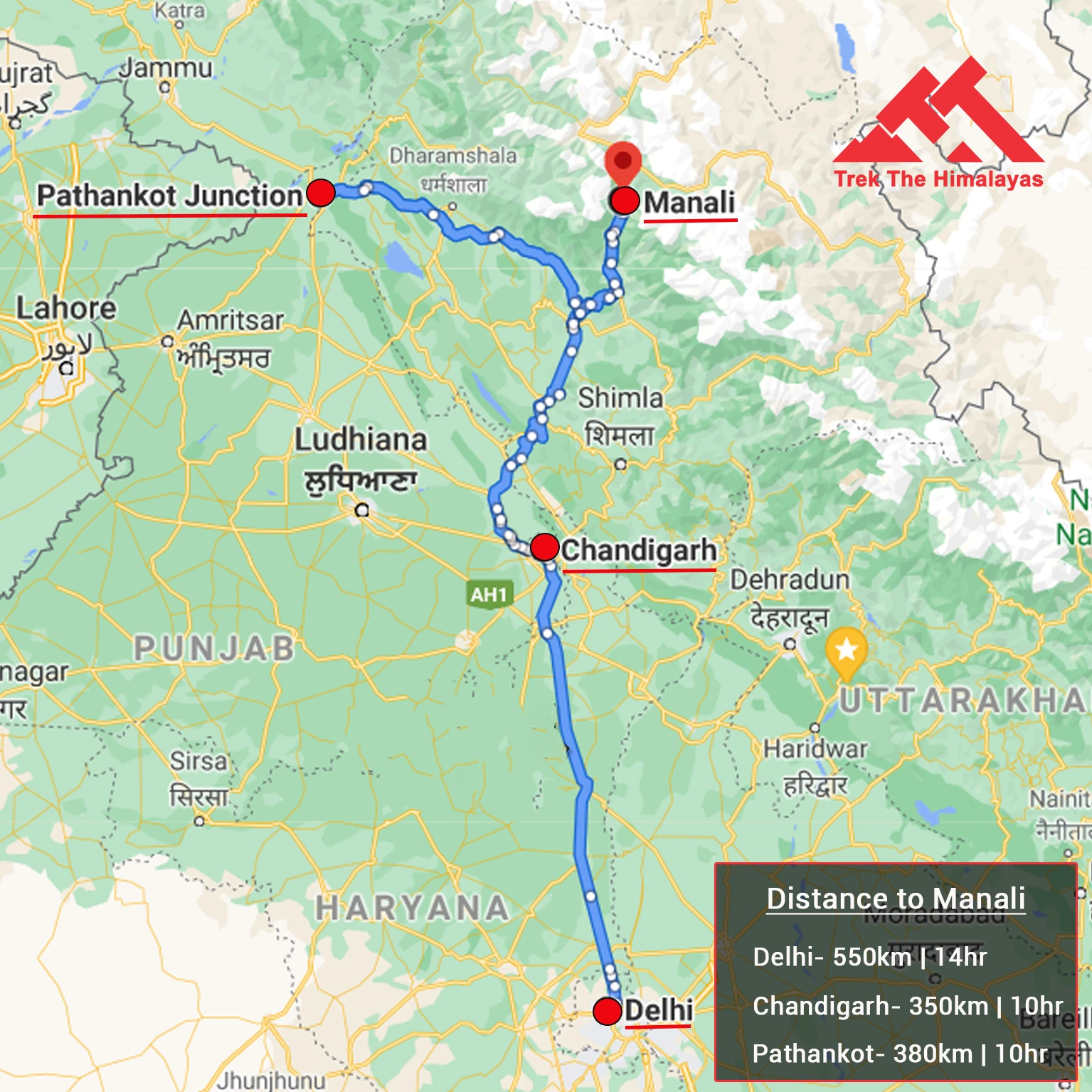
1. Accommodation (as per the itinerary):
- Guest houses on Day 1 (twin/triple sharing basis).
- Camping during the trek (Day2 to Day 12).
2.Meals (Veg + Egg):
- All meals while trekking.
- Day 2 Lunch to Day 13 Lunch.
3.Transportation (as per the itinerary):
- Manali to Khanaul (Day 2).
- Khanaul to Manali (Day 13).
4. Support:
- 1 Versatile base camp manager: handles communication and deploys extra manpower in emergencies.
- 1 Mountaineering & First aid qualified professional expedition Leader.
- 1 Experienced high altitude chef.
- Local experienced guides (Number of guides depending on the group size).
- Enough support staff.
5. Trek equipment:
- Sleeping bag, Sleeping liners (if required), Mattress, Utensils.
- 3 men all season trekker tent (twin sharing), Kitchen & Dining tent, Toilet tent.
- Camping stool, Walkie talkie.
- Ropes, Helmet, Ice axe, Harness.
- Climbing Boots, Gaiters & Crampon.
6. First aid:
- Medical kit, Stretcher, Oxygen cylinder, Blood pressure monitor, Oximeter, Stethoscope.
7. Clock room service at base camp. 8. Mules/porters to carry the central luggage. 9. All necessary permits and entry fees, Upto the amount charged for Indian. 10. Services from Manali to Manali.
1. Insurance (Mandatory). 2. Food during the transit. 3. Any kind of personal expenses. 4. Mule or porter to carry personal luggage. 5. Emergency evacuation, hospitalization charge or etc. 6. Anything not specifically mentioned under the head Inclusion. 7. Transportation (Rishikesh to Sari village & Baniyakund to Rishikesh, if not booked
Things can be provided on demand and availability (participant has to pay extra for these things).
1- Satellite phone/set phone - is a type of mobile phone that connects via radio links via satellites orbiting the Earth instead of terrestrial cell sites like cellphones. Therefore, they can operate in most geographic locations on the Earth's surface.
2- Gamow/PAC HAPO Bag (Portable Hyperbaric Bag) - is a unique, portable hyperbaric chamber for the treatment of acute mountain sickness (AMS), also known as altitude sickness.
3- AEDs (Automated External Defibrillators) - are portable life-saving devices designed to treat people experiencing sudden cardiac arrest, a medical condition in which the heart stops beating suddenly and unexpectedly.
Cancellation terms:
Cancellations prior to 25 days from the start of the Trip
Refund options
- 5% deduction of trek fee
- 100% cash voucher for any trip till one year
- Transfer your trek (any trek, any date) to your friend
Cancellation between 24 days and 15 days to the start of the Trip
- 30% deduction of trek fee
- 100% cash voucher for same trip till one year
- 85% cash voucher for any trip till one year
- Transfer your trek (same trek, any date) to your friend
Cancellation between 14 days and 10 days to the start of the Trip
- 50% deduction of trek fee
- 80% cash voucher for same trip till one year
- 70% cash voucher for any trip till one year
- Book the same trek, in the same season, with any other batch
Cancellation less than 9 days to the start of the trek
- No cash refund
- 20% cash voucher for the same trip till one year
- 10% cash voucher for any trip till one year
- Transfer your trek (same trek, same date) to your friend
Note- If a booking is made using a voucher or discount code, the policies related to vouchers and discounts cannot be modified.
In the unlikely event that TTH cancels a trek prior to the scheduled departure date:
While it is extremely rare for TTH to cancel a trek, we understand that unforeseen circumstances or natural disasters may occasionally require us to do so before the scheduled departure. These circumstances could include continuous rain or snow, thunderstorms, snowstorms, landslides, floods, earthquakes, or any other natural calamity that poses a risk to the safety of our trekkers. Additionally, unforeseeable events such as local riots, curfews, pandemics, lockdowns, government orders, or any similar situations that compromise the safety of the trekking experience may also necessitate a cancellation.
In the event of such a cancellation, TTH will provide you with a voucher equivalent to the amount you paid for the trek. This voucher can be redeemed for any of our treks within the next year, allowing you to still enjoy an adventure with us at a later date.
The issuance of a voucher is not applicable in situations where you are required to descend from the trek for any reason. The trek leader may make the decision to send you down from the trek due to factors such as insufficient fitness level, symptoms of Acute Mountain Sickness (AMS), high blood pressure, exceeding the designated turn-around-time, health concerns, or if you are found smoking, drinking, or violating the rules set for the trek. In such cases, the provision of a voucher does not apply.
In the rare event that TTH shifts a trek:
We would like to emphasize that weather conditions in high-altitude areas are highly unpredictable and can undergo sudden changes at any time, irrespective of the day. Additionally, circumstances beyond our control, such as natural disasters, political unrest, pandemics, and lockdowns, may impact the feasibility of conducting a trek. In cases where we are unable to proceed with an event due to such circumstances that are beyond our direct control, we will make every effort to provide you with an alternative trek that is safer and more suitable.
In such situations, we will issue a voucher to offset the cost difference between the originally scheduled trek and the alternative trek. This voucher can be redeemed at any time within one year from the date of issue. Please note that a refund fee or reimbursement of the cost difference is not applicable in these cases.
- Change of trek batch is dependent on the availability of seats in the batch
- In case of transferring a trek to a friend, he/she should satisfy all the mandatory requirements put forward by TTH
- TTH holds the right to change/cancel the policies, without prior notice
- Cash refund is applicable only in case of bookings made without using any promotional offer code or vouchers
Cash Voucher Terms:
- This is a non-transferable voucher
- The voucher cannot be merged with any other offer of Trek The Himalayas
- The voucher is valid for Trek booked directly with Trek The Himalayas in India
- To avail the voucher please use your register phone number or e-mail id
- All the other Terms of booking a trek with Trek The Himalayas are applicable to the voucher
- Trek The Himalayas holds rights to add/remove any of the Terms and Conditions without prior notice
Itineraries are based on information available at the time of planning and are subject to change. "Trek The Himalayas" reserves the right to change expedition dates, people or itineraries as conditions warrant. If a trip must be delayed or the itinerary changed due to bad weather, road conditions, transportation delays, government intervention, airline schedules, sickness, or other contingency for which TTH or its agents cannot make provision, the cost of delays and/or other changes are the responsibility of the participant. TTH reserves the right to decline, or accept, any individual as a trip member for any reason whatsoever.
Trek Essentials
PDF Of Trek Essential Download
Frequently Asked Questions(FAQ)
How to register/create an account with tth.
To register with TTH, visit our website - www.trekthehimalayas.com and create your account. To create your account you will need to use your email address and fill in all the details, set your unique password and your account is ready to use.
How to book a trek?
- To book a trek with TTH, you first need to register with us and create an account.
- Choose the trek that you want to do and click on available dates.
- You will land at the login page, fill in the required details.
- Add Participants, choose add-on services click on the Pay now button, choose your preferred payment method, and make the payment. TTH accepts multiple payment options, including credit/debit cards, net banking, and UPI.
- You will receive a confirmation email from TTH with all the necessary details about the trek, including the meeting point, transportation, accommodation, and other important instructions.
Made a payment but did not receive any confirmation.
please send an email to us at [email protected] or reach out to the numbers provided in the Help and Support section of your Trek Page. We will ensure that your issue is promptly resolved.
How to book off-load luggage and transportation?
To book services such as off-load luggage and transportation, you can find them listed as add-ons. These additional services can be booked at the time of your initial booking. If you miss booking add-ons during the initial reservation, you can log in anytime and easily book 4 days before the departure date add-ons through the platform.
If I have booked the wrong trek or date, how can I make changes?
In such a situation, please log in to your account and transfer your trek or date to the desired one within 12 hours or drop us an email at [email protected] 10 days before the departure date of the trek. After the initial 12-hour period, any changes will be processed according to the cancellation policy.
I am a beginner and confused which trek to book.
We recommend visiting our "Suggest Me a Trek" page. By filling out the form, our experts will contact you with the best possible trek options based on your preferences and experience level. Alternatively, you can reach out to us via email at [email protected] or give us a call using the numbers provided on our website for personalized assistance and recommendations.
How is family trek different from regular trek?
Family treks differ from regular treks by focusing on ease of difficulty, offering shorter durations for younger participants, Kid-friendly and easily digestible foods, child-friendly activities, maintaining a higher guide ratio for diverse age groups, and implementing additional safety measures for families.
Ideal treks for children.
Family Trek with Kids recommendation Only Dayara Bugyal and Chopta Chandrashila Trek.
Minimum age for children to trek with TTH.
Minimum age for TTH treks is typically 7 years, though this may vary depending on the specific trek.
Can we take children to high altitudes with their guardian?
Yes, you can take a kids to a high-altitude trek with a parent. Discuss with a trek expert before booking a trek.
Can we send kids without Parents/guardian?
Medical & Disclaimer Form (Mandatory Documents) Click here to download medical and disclaimer form
How to prepare a child for a high altitude trek?
Physical Fitness: Ensure your child is physically fit. Engage them in regular exercise, outdoor activities, and hikes to build stamina and endurance. Hydration: Emphasize the importance of staying hydrated at high altitudes. Encourage your child to drink water regularly, even if they don't feel thirsty. Proper Nutrition: Provide a well-balanced diet with sufficient carbohydrates for energy and foods rich in iron to prevent altitude sickness. Adequate Sleep: Ensure your child gets enough sleep in the days leading up to the trek. Quality rest is crucial for altitude adaptation. Educate on Altitude Sickness: Teach your child about the symptoms of altitude sickness, such as headache, nausea, and dizziness. Encourage them to communicate any discomfort immediately. Appropriate Clothing and Gear: Dress your child in layers to adjust to changing temperatures. Ensure they have appropriate trekking gear, including sturdy footwear. Positive Mindset: Foster a positive mindset. Encourage your child, and let them know it's okay to take breaks when needed. Medical Check-Up: Schedule a medical check-up before the trek to ensure your child is fit for high-altitude activities. Consult with a healthcare professional about any potential health concerns.
Kind of food will be served during the trek for children.
TTH takes special care to provide wholesome and nutritious food for children on treks. Here are some of the foods that are typically served for children: Breakfast: For breakfast, TTH serves a variety of options like porridge, cornflakes, bread, butter, jam, honey, boiled eggs, omelettes, and pancakes. Children can choose from these options to fuel themselves for the day's trek. Lunch: For lunch, TTH serves lunch which includes rotis, vegetables, rice, dal, and salad. The rotis are usually made fresh on the trek and are a good source of carbohydrates. The dal and vegetables provide protein and other essential nutrients. Snacks: TTH provides healthy snacks like fresh fruits, dry fruits, energy bars, cookies, and biscuits to keep the children energized throughout the day. Dinner: For dinner, TTH serves a hot and wholesome meal which includes soup, rice, dal, vegetables, and a non-vegetarian dish (if requested in advance). Children can also choose from a variety of desserts like custard, jelly, and fruit salad. Dietary requirements: If a child has any special dietary requirements, TTH can cater to those needs as well. For example, if a child is lactose intolerant or allergic to nuts, the kitchen staff can make arrangements to accommodate those requirements.
How to choose the right trek?
Choosing the right trek for a beginner can be a bit overwhelming as there are many factors to consider such as distance, elevation gain, terrain difficulty, weather, and time of year. Here are some tips that can help you choose the right trek for a beginner:
1. Determine fitness level: Assess the fitness level of the beginner to understand their physical capabilities. This will help you select a trek that is challenging but not too difficult.
2. Choose a well-traveled trail: A well-traveled trail will have more amenities such as signposts, water stations, and shelter. It is also safer as there will be other hikers on the trail.
3. Consider the length of the trek: For beginners, it is recommended to start with a shorter trek that can be completed in a day or two. This will help them get acclimatized to trekking and build their confidence.
4. Look for gradual elevation gain: Choose a trek with a gradual elevation gain rather than steep ascents. This will make the trek easier and more enjoyable.
5. Check the weather: Check the weather forecast before selecting a trek. Avoid treks during the monsoon season or winter when the trails can be slippery or dangerous.
6. Research the trail: Read about the trail to get an idea of the terrain, altitude, and difficulty level. This will help you select a trek that is suitable for the beginner.
7. Consult with an expert: If you are unsure about which trek to choose, consult our trek expert Mr. Nitin (+91 70600 59773) between 10 AM to 6 PM (Tuesday - Friday). Mr. Nitin will provide you valuable advice and guidance.
Overall, it is important to choose a trek that is enjoyable, challenging but not too difficult, and suitable for the beginner's fitness level and experience.
Can a beginner choose a tough trek?
It is not recommended for a beginner to choose a difficult Himalayan trek. Trekking in the Himalayas can be physically and mentally challenging, especially if you are not used to the high altitude, steep slopes, and rugged terrain. Choosing a difficult trek without the proper experience, fitness level, and preparation can be dangerous and put you at risk of altitude sickness, injury, and other hazards.
If you are a beginner, it is recommended to start with an easier trek and gradually build up your skills and experience. This will help you understand the challenges of trekking in the Himalayas, and also prepare you physically and mentally for a more difficult trek in the future. It is also important to choose a trek that matches your fitness level, experience, and interest.
What is the age limit for a beginner trekker?
There is no specific age limit for a beginner trekker. However, it is important to consider your physical fitness, health condition, and personal interests before embarking on a trek. Trekking in the Himalayas can be physically and mentally demanding, and requires a certain level of physical fitness and endurance.
If you have any pre-existing medical conditions or are above a certain age, it is recommended to consult with a doctor before embarking on a trek. It is also important to listen to your body and take breaks as needed during the trek to prevent exhaustion or injury.
If I am solo, can I join the trek in a group?
Yes, you can join the trek. We have fixed departure groups where you can simply book your trek and we will take care of curating a group.
How does my family get updated about my Trek?
Before you start the trek, it is recommended that you make all the necessary phone calls as during the trek you may or may not receive network coverage, once you come back to the Base Camp, you can reconnect with your family via phone once again. You can share your trek coordinator contact detail with your family members to get the latest updates about your trek batch.
What food can I expect?
At TTH, we provide wholesome and nutritious meals during the trek. The food is vegetarian and includes a variety of dishes such as rice, dal, vegetables, chapati, paratha, pasta, noodles, and soup. We also offer snacks such as biscuits, and salty, and dry fruits during the trek. Special dietary requirements such as vegan, gluten-free, or Jain food can also be arranged if informed in advance.
I am allergic to some foods.
If you are allergic to some foods, you need to let us know in advance so that we can make arrangements accordingly.
How safe is trekking with TTH?
TTH is a trekking company that prioritizes the safety of all its participants, including women trekkers. They have a comprehensive safety system in place, which includes a dedicated team of experienced and trained trek leaders and support staff who are equipped to handle emergency situations and provide first aid.
TTH also takes specific measures to ensure the safety and comfort of women trekkers. They have a separate tent accommodation for women trekkers, female trek leaders, and support staff. They also provide separate toilet facilities for women and encourage a safe and respectful environment for all trekkers.
Moreover, TTH has a strict policy against any kind of harassment and has a zero-tolerance policy towards such incidents. They have a designated Internal Complaints Committee (ICC) to investigate and address any complaints related to harassment or misconduct. Overall, TTH has a good reputation for safety and responsible trekking practices, and women can feel comfortable and safe while trekking with them.
How TTH will manage if I am the only woman in the group?
In case you are the only women in the group, we provide a single sleeping arrangement. Also, during the trek, the trek leader will always remain by your side to provide optimum safety and reassurance.
How can I know that other women are in the batch?
You can reach out to the trek coordinator to inquire about the number of female trekkers and their respective states who have booked the trek. Please note that the trek coordinator cannot disclose personal details of any trekker. Once you've confirmed your booking, a WhatsApp Group will be created for all the trekkers in your batch. This allows you to connect with fellow trekkers before the trek begins.
Can I know in advance, which trek is led by a women Trek Leader?
While many of our treks are led by female trek leaders, however, it is not possible to know which trek leader is assigned to which group. But nonetheless, whether the trek leader is male or female you can be completely assured of your safety and security with us.
Can I trek with periods? If yes, then where can I dispose of the sanitary pad?
Yes, it is possible to trek with periods. However, it is important to take some extra precautions and preparations to ensure a comfortable and safe trekking experience.
Here are some tips that can help you trek during your period:
1. Use menstrual hygiene products that you are comfortable with, such as tampons, pads, or menstrual cups. It is recommended to carry enough supplies for the entire duration of the trek.
2. Pack wet wipes, hand sanitizer, and plastic bags to dispose of used hygiene products.
3. Wear comfortable and breathable clothing that allows for easy movement and reduces friction. Avoid wearing tight or restrictive clothing that can cause discomfort.
4. Carry pain relief medication, such as ibuprofen or acetaminophen, in case of menstrual cramps.
5. Stay hydrated and maintain a balanced diet to support your energy levels and overall health.
6. Take breaks as needed and listen to your body. If you feel uncomfortable or experience any unusual symptoms, seek medical attention immediately.
It is also recommended to consult with a doctor before going on a trek during your period, especially if you have a pre-existing medical condition or are taking medication. By taking necessary precautions and being prepared, you can have a safe and comfortable trekking experience even during your period.
We provide proper disposal facilities for sanitary pad disposal during the trek.
How will the accommodation be during the trek?
We offer three person tents with twin-sharing for optimum comfort. A woman trekker will share a tent with another woman trekker and if you are the only woman in the group, you will be given a single accommodation for your comfort and privacy.
Are trek poles, Jackets and other equipment available for rent from Trek The Himalayas?
Yes, we do provide gears on rent. You can book it using you TTH account directly.
Who will be with us on the trek from Trek The Himalayas?
Mountaineering qualified Experienced and first aid certified Trek Leader, First Aid Certify local guide, Cook, helpers and supporting staff.
Who can not join the trek?
People suffering from Bronchitis, Asthma, High blood pressure, Epilepsy (got faints), TB , Heart problem or on higher BMI side are strictly not allowed to go on any Himalayan trek. Apart from this if you had any medical history, please let us know.
When it gets really cold can I consume alcohol?
No. Alcohol and smocking isn’t allowed while on trek. It is totally misconception that it will keep you warm. Your body need to acclimatize properly and for that eat properly and drink enough water; these things will keep you warm.
What type of toilet facility is TTH providing at the trek?
Toilet tents provide a convenient solution for answering nature's call in the great outdoors. Dry toilets, in particular, offer a highly sanitary approach. By digging a pit and utilizing mud and a shovel, you can easily cover up your waste. This method ensures cleanliness and hygiene while camping or exploring in the forest.
Remember to pack essential toiletries to complete your outdoor bathroom kit and maintain proper personal hygiene during your adventures. With these practices in place, you can enjoy nature while also respecting it.
How do I manage the negative temperatures on the trek at higher camps? Do I need special jackets?
Layer Up From Head To Toe Eat Full Meals, never sleep empty stomach You can keep warmee (if you’re more susceptible to cold). Use sleeping bag in right way and don’t leave free space in sleeping bag.
For upper body – Thermal layer – T-shirt (full-sleeves) – Fleece T-shirt (for extreme colds) – Fleece layer – Thick Jacket/Down Jacket – Waterproof or Windproof layer (outermost layer, when it is snowing or raining) - For Lower Body – Thermal layer – Hiking pants (normal) or Winter hiking pants
Based on how warm you feel you can skip any of the above layers. Your outer later should be windproof since it is windy at high altitude. The idea behind layering is that the more insulation you have the less cold you feel, and instead of wearing a very thick jacket if you wear multiple layers, your body will be better insulated against the cold.
Do you provide crampon/micro spikes and gaiters?
Yes, we provide micro spikes and gaiters, if required.
What documents need to carry on trek?
Mandatory documents: 2 xerox of ID having address (addhar card/driving license), 2 Passport size photographs, hard copy Medical form signed & sealed by doctor, disclaimer form sign by trekker and high altitude insurance.
If we come prior the trek date, Do you provide accommodation?
No. We don’t but we can suggest you good hotel/Stay nearby pick up location.
Do we get enough water for drinking?
Yes, trekker must carry 2 water bottles 1 litre each so they can refill it at campsite for drinking and keep themselves hydrate.
What kind of shoes we should buy for the trek?
You should buy shoes which has these three features –Good grip, Ankle Support and additional water resistant layers. Generally, we advise Quechua Trek 100, MH 500 and MH 100.
How do we get back after the trek?
Your return transport is also included in trek fee if you're opting for service Dehradun to Dehradun ; we use Tempo Traveller/ Tata Sumo/Max/Boloero kind of vehicle.
What happens if some members of the team need to turn back before the summit?
No one is forced to go on. There is always enough staff to split the party according to need and regroup later at the camp. Most people have no trouble reaching the highest campsite. If some members decide not to climb the final distance they can wait for the climbers to come back down the same way or take a lateral path to the descent route.
What kind of help is available in case of emergency?
We always have a first aid kit close at hand. Serious injuries are rare. Porters will assist injured climbers to the base of the mountain and onward to a clinic or hospital. Kilimanjaro International Airport is very near Marangu Gate if evacuation to the US or Europe is advisable.
What is the duration of the Deo Tibba Peak Expedition?
Deo Tibba Peak Expedition is a 13-day long trek.
What is the best time to go for the Deo Tibba Peak Expedition?
The best time to embark on the Deo Tibba Peak Expedition is during the pre-monsoon and post-monsoon seasons, which typically fall between May and June and September and October , respectively. During these months, the weather is generally clear and dry, and the skies are blue, offering excellent visibility of the surrounding mountain ranges.
What is the difficulty level of the Deo Tibba Peak Expedition?
Deo Tibba Peak Expedition is a difficult grade trek.
What is the route for the Deo Tibba Peak Expedition?
Our Deo Tibba Expedition itinerary goes through the following route: Manali - Chhikka - Seri - Deo Tibba Base Camp - Camp 1 - Summit Camp - Summit - Camp 1 - Deo Tibba Base Camp - Chhikka - Manali.
What are the essential items to carry for the Deo Tibba Peak Expedition?
Here are some of the essentials you should carry for the trek:
1. Trekking shoes: A good pair of trekking shoes is essential for a comfortable trek. Make sure your shoes are well-fitted, sturdy, and provide a good grip on the trail.
2. Warm Clothing: The weather can be unpredictable in the mountains, so it's important to carry warm clothing, including thermal innerwear, fleece jackets, down jackets, and waterproof jackets.
3. Trekking pants: Carry comfortable and quick-drying trekking pants that are suitable for weather conditions.
4. Backpack: A good quality backpack with a capacity of 40-50 liters is ideal for carrying your essentials during the trek.
5. Sleeping bag: A good quality sleeping bag is essential for a comfortable stay during camping nights.
6. Headlamp/Flashlight: Carry a good quality headlamp or flashlight with extra batteries for trekking during early morning or late evening hours.
7. Water bottle: Carry a reusable water bottle and stay hydrated throughout the trek.
8. Snacks: Carry energy bars, dry fruits, and snacks for instant energy during the trek.
9. First aid kit: Carry a basic first aid kit, including band-aids, antiseptic cream, pain relief spray, and medicines for altitude sickness.
10. Sun protection: Carry sunscreen lotion, sunglasses, and a hat to protect yourself from the harsh sun rays.
11. Trekking poles: Trekking poles can help in maintaining balance and reduce the strain on your knees while trekking.
What is the altitude gain during the Deo Tibba Peak Expedition?
In this trek, you reach a maximum altitude of 19,700 ft .
What is the cost of the Deo Tibba Peak Expedition?
Deo Tibba Peak Trek Expedition costs 64,500 INR per person.
Is it safe to do Deo Tibba Peak Expedition?
Yes, it is safe to do Deo Tibba Peak Trek Expedition with an expert organization. However, it is always advisable to take necessary precautions and follow safety guidelines issued by the Trek Leaders and guide while trekking in the mountains.
Is a permit required for Deo Tibba Peak Expedition?
Yes, a permit is required for the Deo Tibba Peak Expedition . The peak is located in the Pir Panjal range of the Himalayas in the Indian state of Himachal Pradesh , and the expedition is regulated by the Indian Mountaineering Foundation (IMF). However, if you trek with us we obtain all the necessary permits for you.
Which age group participates in the Deo Tibba?
The trek is suitable for people over 18 years of age.
- Date and Price
Rent A Gear
Trek Articles
Quick Links
Trekking & Hiking
Mountaineering
Multi Sports
Himalayan Pilgrimage
Website Privacy
Terms & Condition
Contact Info
Get in touch with us. E-mail us Monday-Saturday (10 AM to 6 PM)
Address: Trek The Himalayas, Kaintura Plaza, Badrinath Road Tapovan, Rishikesh - 249201 Uttarakhand
Phone: 8191004846
Email: [email protected]
2010 Trek The Himalayas. All rights reserved

Deo Tibba Expedition
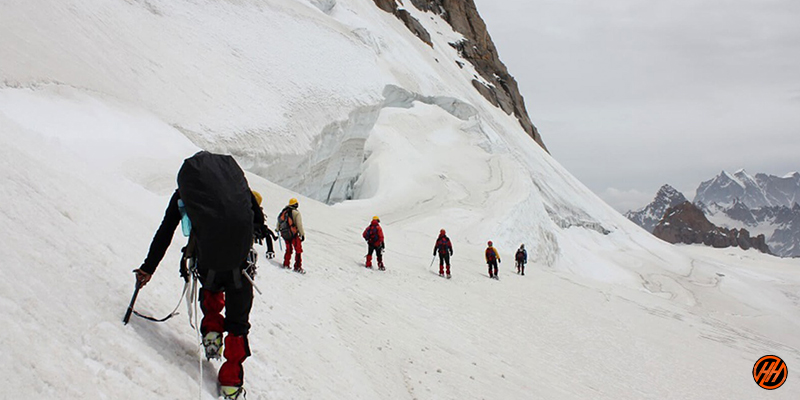
Description
Reviews (0), things to take, available dates, include / exclude.
Deo Tibba Expedition is a mountain in the Pir Panjal Range of Himalayan Mountains in Kullu District, Himachal Pradesh , India. At a height of 6,001 meters, it is a popular trekking destination among enthusiastic trekkers. The peak is distinctive in how the summit is a snow dome, similar to an ice cap, with a flat summit plateau rather than a pointed ridge. Per the local legend, Deo Tibba is a gathering place for the gods. According to Hindu mythology, the dome-shaped peak of Deo Tibba is where the gods sit, hence the names Deo (Gods) and Tibba (Hill).
The trek is strenuous, and it aims to cross many experienced hikers’ “To Do” list. Climbers will face difficult terrain on their way to the peak’s summit, including steep ice passes, crevassed glaciers, a rock fall area, and a ridge. Owning to its difficulty this trek only invites trekkers with valid experiences. Steep snow covered trails with ferry loading demanding a thorough knowledge of hiking equipment’s will surly come handy. This peak is less travelled and is generally compared to Stokkangri in Ladakh.
- Experience the best of Deo Tibba peak
- Get a panoramic view of many snow covered peaks visible form the top.
- Test your endurance limits both physically and mentally
- Snow dome in the ending parts of this trek is an achievement of and itself
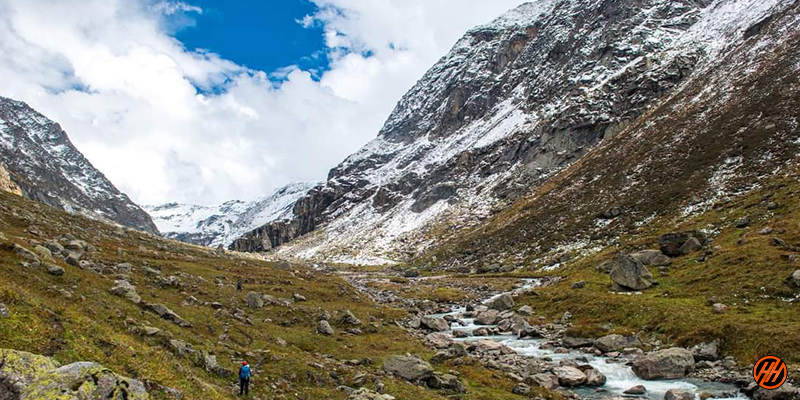
Key Points of Deo Tibba Expedition
Must known points of deo tibba expedition.
- Level: Difficult (so first-timers trekkers should avoid)
- For this expedition, it is important to follow the Guideline and Rule of the IMF. Without this, it will not be an expedition
- Proper conditioning & training of body required
- Group size minimum of 05 maximum of 10 people
- Need proper Expedition gear & clothing for sub-zero temperatures?
- Shoes are the single most important equipment
- High Altitude requires proper acclimatization
- Post monsoon or pre-monsoon is the best time. During rains the region is prone to landslides
- Phones don’t work on the trek, we are provide to you Radio Walkie Talkie for Communication
- Beautiful landscape so carry good photo gear (I couldn’t carry my best equipment)
- Travel light (my backpack was heavy at about 12 kg to 15 Kg )
- Keep an extra day in your itinerary for attempt to summit account for bad weather
- If you choose Good and local trekking company Himalayan Hikers than it is better for you because Himalayan Hikers is local company our mission is safe treks, growth of locals. Some groups come with us for the Expedition, like the N.C.C Group, Navi Force, Army force, Etc
- Alcohol and smoking is not allowed during the Expedition
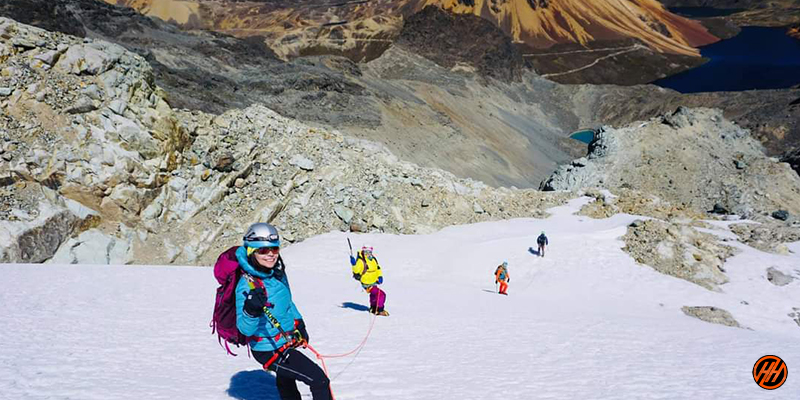
Some of the Trek Highlights
The trek commences from chika which will be reached from Manali via Bara bazaar. Trekkers will be covering forests of rhododendrons and pine which opens to grand and majestic meadows before reaching Seri. A beautiful stream of river will be our local guide towards next destination of base camp.
On their way to Deo Tibba Base Camp, trekkers will pass through many remote valleys and villages, including Jogidugh, Panduropa, Setan, and Hampta Pass, to name a few. In addition to Deo Tibba, the trek takes expeditors to the grazing pastures of the local shepherds. Trekkers’ views of high and mighty Himalayan peaks become more clear as they approach the summit.
Owning to its name as popular tourist destination Manali in it provides a variety of attractions to explore. Sites like Hidimba Devi temple and Vashist Kund can surely make trekkers to extend their stay.
Things to look out for
- The trek is certain to provide unrivalled feelings of accomplishment.
- Explore the enthralling forest of cedar and pine.
- Souviners form Manali is great for memories.
- There are countless photogenic vistas, so we recommend that you prepare yourself for any aesthetic shoots. The best pictures are those taken under a blue sky with snow-covered peaks in the background.
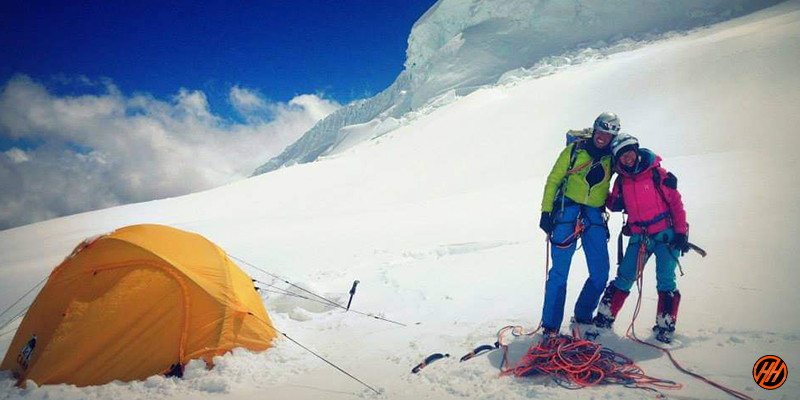
The Altitude covered in Deo Tibba Expedition
- Manali-2050m
- Bara Bazaar-
- Chika-3100m
- Base camp-4500m
- Camp 1-5100m
- Summit camp-5600m
- Summit-6000m
Best Time to Visit Deo Tibba Expedition
Both the ascent and the descent of Deo Tibba are challenging as the trekkers hike upwards. The best time to hike these paths is during May, June, October and November. The unfavorable temperatures and precipitation make this trek a pre and post monsoon season trek. Temperatures typically range from 13 to 18 degrees Celsius during the day, with substantially colder nights.
Is it safe?
Set amidst the high altitude ranges, concerns regarding Deo Tibba Expedition safety are indeed very valid questions. We have all the possible probabilities calculated if anything goes off the schedule.
All of our professionals strive to provide the best experience possible for trekkers, so a collaborative contribution of a relaxed mindset and morally communicative behavior with fellow trekkers will be greatly appreciated.
Difficulty level in Deo Tibba Expedition
Because the top is relatively high in elevation, we strongly recommend a reasonable level of physical fitness. The arduous journey of Deo Tibba Expedition with longer distances and ascending elevations to be covered in a short span of time would require acclimatization. We advise trekkers to physically and mentally prepare themselves prior to this trek. Throughout the course, all groups will be guided by our experts for trekking equipment and any impending terrain.
Any medical assistance that is required will be provided at any point of the journey; however, trekkers must consult their professional care before beginning any trek. We also strongly advise trekkers to learn about altitude sickness and to notify our teams as soon as any symptoms appear.
Weather conditions in Deo Tibba Expedition
Weather conditions depend on the time of the year trekkers are travelling. Months from pre and post monsoon experience moderate temperatures during the day with substantially colder nights. As elevation increases the weather conditions can become challenging hence trekkers are advised to contact us for a briefing.
Things to carry in Deo Tibba Expedition
1) Because nights at elevations tend to be considerably colder, we suggest having well-graded, warm and comfortable clothing along with good quality shoes.
2) Despite the fact that we handle medical crises, we urge individuals to keep their emergency kits at hand in any case of personal underlying illnesses.
3) Since the journey provides you with a picturesque view of many peaks, don’t forget to bring your camera along with extra batteries.
4) Our staff will consult with fellow trekkers about their luggage and, if lacking, will assist trekkers in obtaining any necessary equipment. Only the relevant luggage should be brought, as a result.
Other trekking Essentials-
Connectivity and Transactions
1) Because connectivity along the route is unpredictable, we urge people to do all of their work ahead of time.
2) Trekkers will be provided with walkie- talkies beforehand in case of emergency
3) Last ATM transactions available will be at Bara bazaar but we recommend travelers to collect cash beforehand or while in Manali as ATM available at other places might not dispense cash at times.
How to Reach in Deo Tibba Expedition
If you are travelling from any metropolitan city in India or from outside India, getting to the capital city of Delhi may be the first and most important step. All major modes of transportation, such as air, road, and rail, can take you to Delhi.
Manali is connected to most major cities in India via all chief modes of transportation. Trekkers could perhaps conduct extensive research for their direct mode of transportation to ensure a much smoother arrival.
How to reach Manali from Delhi
By air – Manali Airport is the nearest airport to Manali. It is well connected to Delhi and many chief cities with daily flights.
By road -Delhi have direct road routes to Manali. Trekkers will have to book either a bus or private cabs. Prior booking for cabs and bus are easily available at various sites.
Delhi>Manali>Nauradha
By railway – Nearest Railway station to Manali will be Manali Railway station. Since Manali is connected to all major railway routes, trekkers can opt for a direct route or via Delhi.
Some important points to note-
- Please note that we don’t provide timings schedules for transportation before Manali. Subjected to various conditions the scheduled timings and availability of particular rides may differ. We recommend trekkers to reach out our teams for any queries. You can drop an email or call us for an initial guided session.
- Our teams will be collecting trekkers at fixed points of airports, railway stations and bus stands.
- It is recommended that unless any delay arrives, trekkers are advised to reach the destinations at least 2 hours prior.
Things Himalayan Hikers Recommend
As previously stated, a camera, as well as spare batteries and memory cards, are recommended. We can assure and guarantee that you will be stopping frequently along the trail to observe the grandeur of the trekking experience.
We strongly recommend trekkers to prepare beforehand for the journey ahead. Regular practicing physical fitness and mental endurance will surely assist trekkers in great time.
After the trek, we strongly encourage trekkers to tag us on social media when they post any memories from the trip; this will not only prove invaluable to us with our work, but will also serve as a motivational example for all of our experts.
Why you should choose us
We’re here to give you the greatest experience possible through the eyes of highly skilled and qualified specialists who have a passion for adventure sports. We are community members attempting to promote our favorite adventure sports while also supporting local businesses. We, at Himalayan Hikers, dedicate ourselves to providing you with an unforgettable experience.
Day 1- Manali to Bara Bazaar then to Chika
Our teams will pick up the trekkers from Manali Bus Stand and leave early at around 6:00 to 7:00 am in the morning for Bara. Once you reach Bara Hazar, the official trek starts and you will be making your way across the bridge, a trail leading into the woods. After you cross the bridge, be prepared to face steep climb for about 15 to 20 minutes which will then convert into an easier gradual walk. Witness the captivating waterfalls and charming streams as you cross the trail reaching your very first camp base at Chikka. Hike through the meadows you will spot muddy houses, set your camp for the night here.
Day 2- Chika to seri
Wake up to beautiful morning and mesmerizing sunrise. Walk around the meadow and feel the fresh air. Start your day for the next base camp i.e. Seri trail after a straight walk through the forest which is well marked with stones and cairns throughout the way.
After you are done trekking for around 3km, you will come across a meadow called Panduropa. Take some rest and fill up your water bottle before hitting on the trail.
Day 3 – Seri to base camp
This day is going to be an easy start as today teams will be going to the Deo Tibba Base Camp. The trail will be very exciting, as trekkers will walk along the flowing river in the direction of a sparkling waterfall.
As you reach the Base camp, soaking in the realms of nature will give you a sigh of relief embracing you with the beautiful escapade. Set up your camps and retire for the night
Day 4 – Acclimatization day
Acclimatization Day. Trekkers will be exploring nearby places and attending any guided sessions.
Day 5- Load Ferry to camp 1
Teams will be loading ferries to camp site 1. After setting up the camps and loads trekkers will return to base camp.
Day 6- Base camp to Camp 1
Trekkers will move forward with their journey from Base camp to camp 1through the decided route. After reaching enjoy your dinner and retire for the night.
Day 7- Load ferry to summit camp
This day will again require trekkers to load ferry to their desired campsite of summit camp. Depending upon the weather either of the two routes available at the moment will be used to load ferry further up till summit camp.
Day 8- Camp 1 to summit camp
Trail forward to the summit camp. Final briefing regarding the upcoming terrain to summit will be held.
Day 9- Summit attempt and back to camp 1
Attempt to Summit the giant snow dome. Enjoy the views of nearby peaks when you reach the top. Spend some time and take a return route to camp 1 via summit camp.
Day 10 – Camp 1 to Base camp
Trace back to base camp following the same routes.
Day 11 – Base camp to seri and then chika
Following the enchanting route of River bedlines reach seri. Cross the majestic forest to further reach chikka. Attend the farewell dinner and rest for the night.
Day 12 – Back to Manali
Early morning depart for Manali and enjoy your lunch in the mid of your journey.
Note – reaching Manali on the date decided is trekkers’ sole responsibility. We can only offer assistance after their arrival in Manali.
Mandatory Documents
Please carry the documents given below.
Original and photocopy of government photo identity card- (Aadhar Card, Driving License, Voters ID, etc, Passport and Visa important to foreigners Medical Certificate (First part should be filled by the Doctor and Second part by the Trekker) Declaration Certificates
Note: – Many trekkers commit the same mistake of carrying unnecessary items on a trek which only makes the backpack heavy. It is important to know the right items to carry. It differs from season to season if you are trekking in summers then carry less layers of warm clothing and if you are trekking in winters carry enough layers to protect yourself against chilly cold.
Necessary Items for trekkers

Backpack (50 to 60 liters) A strongly built backpack with good support is compulsory for a trek. (Rain cover is important)
Sturdy Trekking Shoes The shoes should be strong enough with good support. The people ask if sports shoes would be comfortable but it is good to bring the right trekking shoes.
The Clothes You Should Bring On a Trek Avoid keeping extra clothes because it only makes you backpack heavy.
Trek Pants – The jeans are never suitable for a trek so you need at least 2-3 trek pants for treks carry more for longer treks.
Jacket – Jackets are very important to carry on a trek it protects you against the chilly weather. So carry 2 jackets on a week long trek.
Layers of warm Clothing Carry warm woolen layers or fleece. Carry more layers during winter season (at least 2 to 3) and less during summer.
Thermals – The Temperature decreases at night so you might be need thermals for Night.
T- Shirts – Bring those t shirts which dry fast.
Poncho –They are needed if you are trekking on a Rainy day to keep you dry.
Hiking Pole
Water Bottle 2
Cap or Balaclava
Woolen and Waterproof Gloves
Socks (Woolen and Regular)
Torch head light
Personal Toiletry Items – (toothpaste, toothbrush, toilet paper, sanitizer etc.)
Carry Personal Medical Kit
Personal Medical Kit (Carry minimum 5 tablets and maximum 10)

Diamox – (Prevents altitude sickness)
Digene – (It cures discomfort in stomach, acidity)
Crocin Advance – (Cures fever and headache)
Aspirin/Combiflam – (Pain reliever)
Disprin – (Cures headache)
Avomine – (Prevents motion sickness)
Avil – (It treat allergies)
Norflox TZ & Lomofen – (Prevents Diarrhoea)
Ranitidine – (Reduces the amount of acid in stomach)
Volini/Moov spray – (For sprains)
Betadine/Savlon – (Antiseptic cream)
Stretchable/Elastic bandage
Note:- Use medicines only when prescribed by the doctor. In case you face any problem during your trek, discuss and take advice from the Professional guide.
Sorry! Here are no Available dates right now. For Any Queries you can Email us with [email protected] and Call Us +91 9756197558
What is included in this Expedition?
Forest Permit and entrance fee including camping charges.
Accommodation in tents on twin share basis.
All meals: breakfast, packed lunch, tea, coffee, snacks, soup and dinner.
Expertise Trek Leader, fluent in English and Hindi certified in basic and advance, Search & Rescue , Method of Instructions mountaineering courses from NIM, IMF or Hanifl Centre outdoor Education.
Experienced local guide and Sherpa, permanent technical guide.
Kitchen team
High quality camping tents, sleeping bags, mattress liner etc
Dining Tent
Gaiters, Koflach Climbing shoes
Ice Axe, Screw gate
Carabineers, rock pitons, ice pitons, snow stakes
Rescue Ropes, Climbing Ropes, Snow bar
Harness, Descended, Ascender, figure of 8, Ice Screw
Radio Willkie Talkie for Communication
Medical Kit
Oxygen Cylinders
What is not included in this Expedition?
There are no reviews yet.
Your email address will not be published. Required fields are marked *
Name *
Email *
Save my name, email, and website in this browser for the next time I comment.
Related Tours
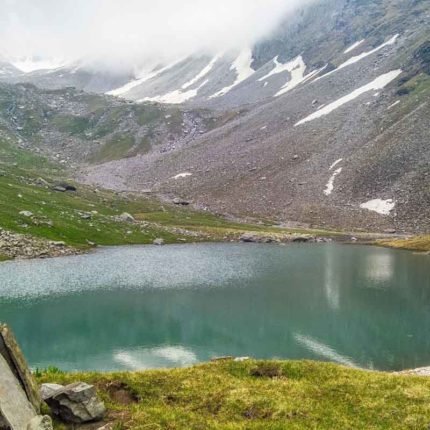
Chandranahan Lake Trek
CHANDRANAHAN LAKE an Alpine Lake in Himachal Pradesh
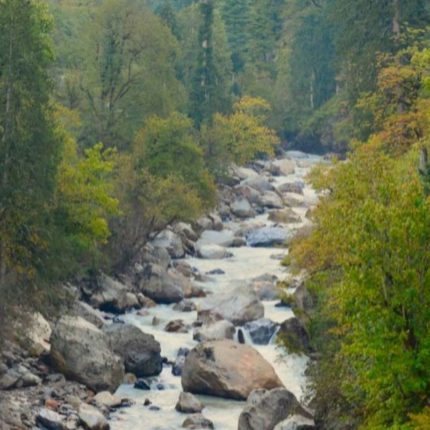
Kheerganga Trek
Kheerganga Trek Nestled In Parvati Valley in Himachal
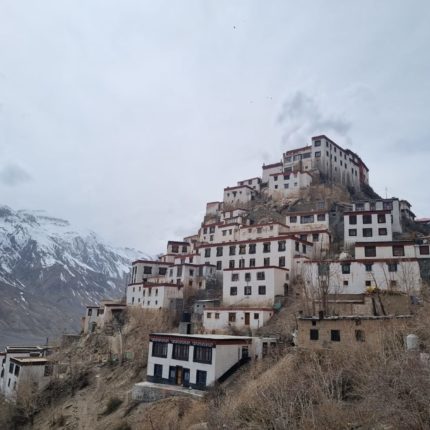
Spiti Valley Trek
Spiti Valley Trek is a stunning and remote region located in the Indian state of Himachal Pradesh.
Price: ₹ 65,000.00
Send a quick enquiry
- Overview Itinerary Dates Include/Exclude
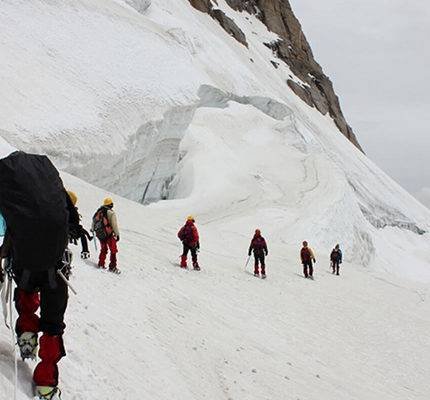
.png?w=auto&h=400)
Deo Tibba Base Camp Trek
Deo tibba base camp trek overview.
Deo Tibba is the second largest peak in the Pir Panjal range and is quite famous as one of the most fascinating treks in Himachal Pradesh. The enthralling natural beauty and the dazzling landscape of the region attract trekkers from far and wide to conquer this peak. The trekking trail is dotted with various surprising features ranging from lush green forests and meadows to expansive views of lofty snow-capped mountains and exposed rock faces, to hanging glaciers and giant cliffs. The Deo Tibba base camp trek thus provides the participants with a unique opportunity to experience a diverse aspect of nature at every turn, making their trip truly awe-inspiring.
The peak is named so as the locals believe it to be the assembly place of Gods, who sit on its dome-shaped peaks. The trekking trail commences in Manali and covers some of the most beautiful and scenic sights of Himachal Pradesh. The trail keeps changing constantly and enables the participants to witness almost every aspect of the majestic Himalayas. Despite being a relatively off-beat trekking trail, Deo Tibba promises a magical journey that takes the participants through the mystical wilderness of the Himalayas where they are surrounded by its pristine natural beauty and the comfort it offers.
Quick Facts of Deo Tibba Base Camp Trek

Maximum Altitude: The Deo Tibba trekking takes participants 4480 meters above sea level.
Grade: Medium to Difficult
Duration: 6 days and 5 nights
Trekking distance: 35 km
Trail type: High altitude with scenic landscape and awe-inspiring views of constantly changing terrain and the trail is steep and stony.
Railhead: Jogindernagar Railway station which is at least 5 hours away.
Airport: Bhuntar airport in Kullu, which is located at a distance of 52 km from Manali.
Snow Season: The snow season starts in November and continues till Feb or even March.
Service from: Manali
Base camp: Jagatsukh, located at a distance of 11 km from Manali.
Best season: From May to October.
Region: Himachal Pradesh
Who can participate: Physically fit adults over the age of 18 years and with basic mountaineering experience.
Short Itinerary for Deo Tibba Base Camp Trek
Day 1 - Upon their arrival in Manali, the participants are straightaway driven to Khanol, from where they start trekking to Chhikka.
Day 2 - After overnight camping at Chhikka, the participants trek to Seri where they spend the night.
Day 3 - The next day, the trekkers undertake a steep climb to Tainta and enjoy the first views of the massive Deo Tibba and Indrasan peaks.
Day 4 - On the fourth day, the participants climb uphill from Tainta to Chandratal and back.
Day 5 - On the fifth day, the trekkers descend back to Chhikka and spend the night there.
Day 6 - On the final day of the trek, the participants descend to Khanol and then drive back to Manali.
Deo Tibba Base Camp Trek Detailed Itinerary

Drive from Manali to Khanol village and trek to Chhikka
The participants of the Deo Tibba trek reach Manali and take a bus ride to Jagatsukh.
From Jagatsukh they hire a vehicle to Baara Hazar and find the trail located to the left of Duhangan Dam Control Room.
The trail leads into the woods and features a bridge connecting to the left of the valley.
The moderately difficult trek is 5 km long and takes around 2 to 3 hours.
The gradual climb following the first 15-20 minutes of steep climb ends at Chhikka located at an altitude of 3200 meters.

Trekking from Chhikka to Seri
As the participants start trekking along the banks of Jagatsukh Nallah they are led into the brilliant forests.
The forests give way to a beautiful landscape of soft velvety grass and vibrant wildflowers and paths strewn with boulders.
The climb across the beautiful meadows of Seri commences just beyond the tree line.
The moderate ascent takes the participants to an altitude of 3900 meters.
The trek requires the participants to cover a distance of 6 km and is completed in 5 to 6 hours.
Trekkers can enjoy the mesmerizing beauty of the region before retiring for the night in their camps.

Trek from Seri to Tainta
As part of the day’s trek, the participants walk across a flat meadow and wade through the streams that feed the Jagatsukh Nallah.
This is followed by a steep climb through the boulders leading to a Moraine field where the participants can enjoy the first view of Deo Tibba and Indrasan peaks.
The moderate to steep trek takes the participants to an altitude of 4171 meters above sea level.
The total trekking distance covered on day three is 4 km and it is completed in 4-5 hours.
The participants get enough time to relax and acclimatize before sleeping in their tents.

Trek from Tainta to Chandratal and back
The participants undertake an uphill climb across moraine fields to arrive at the emerald blue glacial lake called Chandratal.
The participants are left mesmerized by the sight of the countless wildflowers growing on the banks of the lake.
Participants can relax and see the natural beauty of the area before commencing their journey back to Tainta.
This section of the Deo Tibba trek takes the participants to an altitude of 4480 meters above sea level.
The moderate trek covers a distance of 2 km and is completed in 2 to 3 hours.

Descent from Tianta to Chhikka
This is the first day of the descent and will require the participants to trace back their steps to Chhikka.
The descent is quite easy and even enjoyable and takes far less time than the ascent.
However, participants need to exercise control while moving down the steep incline as descending at a fast speed can be risky.
The trekkers will halt for lunch at Dudu Pathar before commencing their downward journey.
The entire trip can be completed in around 6 to 7 hours depending on the weather conditions.
The participants will spend the night relaxing in their tents at the Chhikka campsite.

Descent from Chhikka to Khanol followed by the drive to Manali
On the last day of the trip, the participants trek back from Chhikka to Khanol village and Baara Hazar
Upon reaching Baara Hazar the participants take a ride back to Manali.
The trek back mostly involves walking across the meadows or moving downhill and can be completed in 2-3 hours.
The participants may spend some time in Solang valley before going to Manali.
They can participate in the various adventure activities that Solang is famous for including paragliding and zorbing.
They can also spend time exploring the local markets in Manali before heading back home.
What To Pack for Deo Tibba Base Camp Trek?

Participants should make sure to pack the following things to make sure that their Deo Tibba trek proves to be one of the best experiences of their life.
Backpack: Every participant should carry a backpack with a minimum capacity of 50 to 60 liters and wide and comfortable shoulder straps. The backpack should be able to hold the various items that the participants need to carry along on the trekking trail.
Water Bottle: Staying hydrated during the trek is extremely important and participants should pack two water bottles of 1 liter capacity each as they are easy to carry compared to a single 2 liters bottle.
Clothes: Irrespective of the season they choose to undertake the trekking trip, participants must pack warm clothes including thermals, woolen caps, mitten, scarves, several pairs of socks, and even a fleece jacket.
Personal Medical Kit: Participants should make sure to pack their medical kit with all the medicines they need to take regularly as well as those they might require during the trip including emergency first-aid essentials.
Snacks And Toiletries: All participants must pack their toiletries along with a snacks package comprising energy bars, dry fruits, and ORS packets.
Other Essential Items: The participants should pack a valid id-proof along with its copies, enough cash to pay for any extra services, essential prescriptions, and medical records, as well as mobile chargers and extra batteries. It is advisable to pack these essentials separately and place them at the bottom of the backpack or in a separate compartment.
Know Before You Go for Deo Tibba Base Camp Trek

The Deo Tibba trekking trail presents the participants with countless opportunities to be amazed and enjoy a great trekking experience. However, to get the most out of the trip and avoid risking their safety as well as the safety of their fellow trekkers, participants should follow the important tips given below.
Since the climatic conditions in high altitudes are significantly different from those in plains, participants should arrive at least a day or two early to get acclimatized.
Participants should follow all the guidelines issued by the government as well as their tour operators to complete the trek successfully.
Participants should make it a point to attend the orientation sessions conducted by the tour operators before the commencement of the trek.
Participants suffering from any health issues, irrespective of how minor they may be, should consult a physician before undertaking the trek.
Participants should avoid consuming alcohol or other intoxicants and indulging in substance abuse during the trek.
To preserve the natural environment of the trekking trail, participants should avoid littering it with discarded items or plastic bags and packaging materials.
Trekking at night is not encouraged and participants should not do so unless it is a part of the itinerary and they are accompanied by an experienced guide.
Participants should obtain a comprehensive list of items that they are not allowed to carry during the trek to avoid the cancellation of their registration.
Participants should make sure to get a detailed report of what is included in the cost of the package.

To undertake the trek to Deo Tibba, participants need to reach Manali first as it is the starting point of the trek. The hill station is well connected to all major cities by road, but sadly there is no direct rail or air connectivity. The most common methods of reaching the hill city include the following.
By Train: Participants can travel to Jogindernagar Railway Station, located at least 5 hours away from Manali. Other options include Ambala Cantt Station located 330 km away or Chandigarh Station located 300 km away. In each case, the participants will have to take a bus or taxi to reach Manali.
By Road: Participants of Deo Tibba trek can also take advantage of the numerous private and HRTC bus services operating to and from Manali. Numerous taxi service providers also operate on the route although this would be far more expensive than riding a luxury bus.
By Air: Manali does not have an airport so participants traveling by air need to book a ticket for Bhantur in Kullu. The airport is only 50 km away from Manali and has only occasional Air India flights operating between Kullu and Delhi. Given the lesser number of flights, the airfare is quite high.

The best time for Deo Tibba trekking is between May and October as a major part of the trekking trail remains inaccessible during the remaining months due to the snow season. The participants can plan their trip in advance according to the season they prefer.
Summer Season : The trekking trail opens up with the commencement of the summer season, which is the time preferred by most participants. The weather is generally pleasant and dry during the summer months of May and June which makes trekking relatively easy and enjoyable.
Monsoon Season : Most people avoid trekking during the monsoon months of June and July believing the trail to be muddy and slippery. However, being located in the upper reaches of Kullu Manali, the Deo Tibba trekking trail remains largely unaffected ensuring a great trekking experience for the participants even during the monsoon season.
Autumn Season : The autumn months of September and October are the most preferred time for enjoying a trek in the upper reaches of the Himalayas. Despite the slightly colder weather, the participants get to experience the mesmerizing beauty of nature and enjoy the thrill of conquering a moderate trekking trail.
General Trivia About Deo Tibba Trek

There are several legends associated with the Deo Tibba trek, with the most popular one being from Hindu mythology. According to this legend, the dome-shaped top of the Deo Tibba mountain is where the gods sit when Lord Indra presides over their meetings from the top of Indrasan peak. As per another legend, some 5000 years ago the Takshak Nag was born out of a huge rock located near the Chhikka camping site. The stone referred to in this legend is massive and has a curving line in the shape of a snake’s slither, etched profoundly right through its center.
Locals also believe that the Pandavas, from the epic Mahabharta, traveled through the meadows of Seri and planted rice shoots in the area. Another story supporting this claim is the presence of Arjuna Guffa near the village of Prini, where Arjuna is said to have meditated to get a weapon from Lord Indra. The village Pirni is a beautiful hamlet located quite close to the trekking trail and garners much attention from the trekkers in the wake of its association with Mahabharta. All these legends add a mystical aura to the trekking trip to Deo Tibba and enhance the thrill and excitement of the participants even further.
You May Also Book
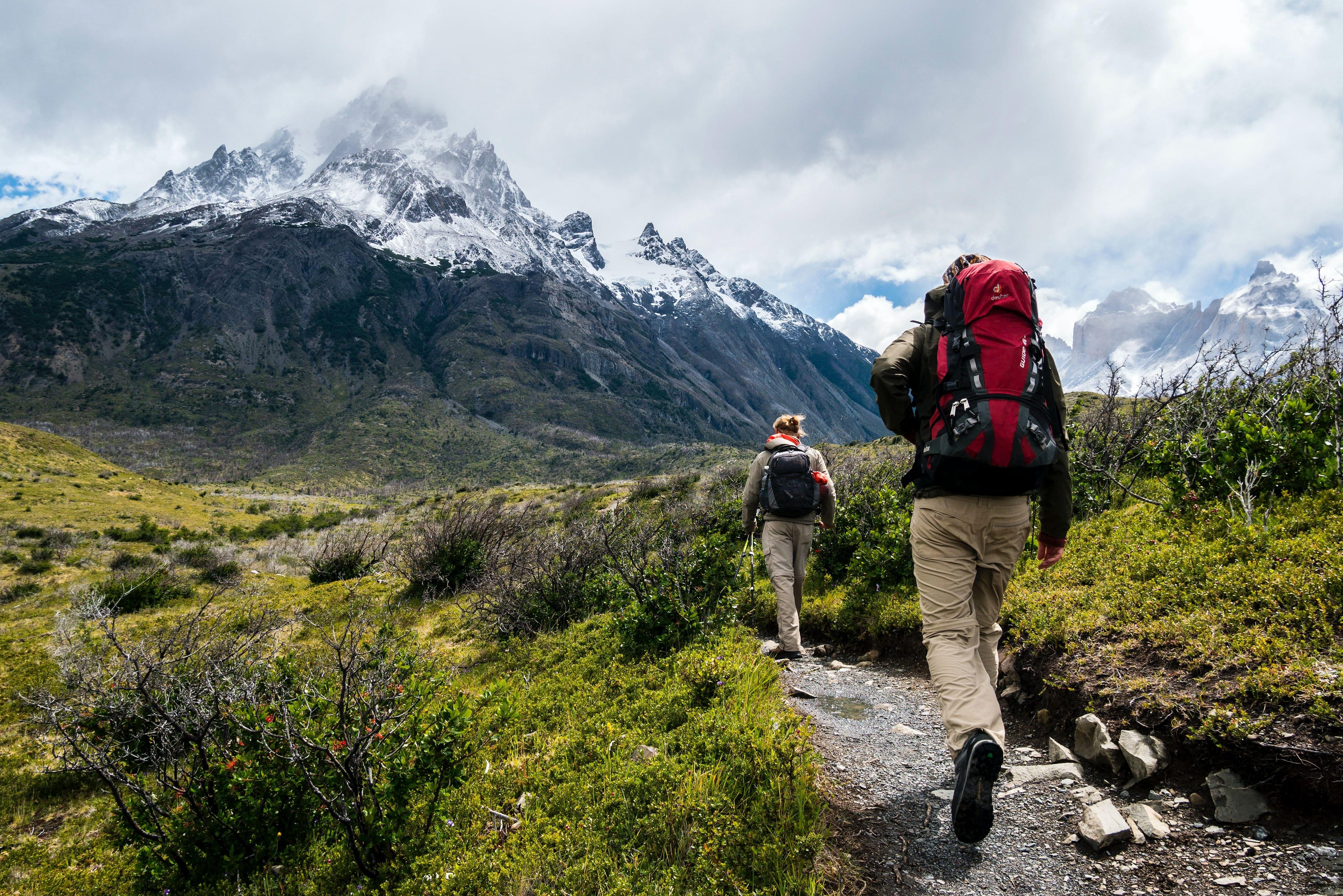
FAQs of Deo Tibba Base Camp Trek
How difficult is the deo tibba trek.
The difficulty level of the Deo Tibba trek is described to be between moderate and difficult depending on the previous experience of the participants. Moreover, some sections of the trek can be quite tricky as the participants need to endure steep climbs or cross over paths strewn with boulders. So people participating in the trek need to have a higher level of strength and endurance. They need to be physically fit and mentally alert and active to complete the trek successfully. While the trek is mostly recommended for people having some prior experience in mountaineering, it is also suitable for beginners, who have prepared for the same in advance. This would require them to start jogging and doing strength training exercises besides following a healthy diet and sleep routine at least three months before the trek. Even experienced trekkers are advised to start preparing for the trip at least a couple of weeks in advance.
How far is Deo Tibba located from Manali?
Deo Tibba is the second largest peak in the Pir Panjal range of the Himalayas and is located at a distance of 35 km from the Manali bus stand. Participants of the Deo Tibba trekking expeditions can drive up to the last motorable point of Jagatsukh, located at a distance of 6 km from Manali.
What is the temperature on the Deo Tibba trekking trail?
Deo Tibba is a high-altitude trek which means that the temperature is generally quite cold across the entire route. The temperature may range anywhere between 10 and 15 degrees during the day and drop to -2 to 5 degrees at night. The daytime temperature may even drop to 8 degrees in July and August.
What is the expected level of physical fitness required for Deo Tibba base camp trek?
The trek is open for all healthy adults above the age of 18 years, although participants should have the strength and the stamina to cover a distance of 7 km in 35 minutes to complete the trek successfully. Interested participants should start preparing for the trek in advance accordingly and as per their current physical condition.
What kind of accommodation will be provided to trek participants?
The Deo Tibba trekking trail is a remote trekking trail that passes mostly through wilderness untouched by man. The participants will be accommodated in tents at the various designated campsites located on the trail as there are no options of hotels, guest houses, or even homestays available on this route.
Is it possible to undertake the Deo Tibba trek alone?
There is no prohibition on undertaking the Deo Tibba trek alone although doing so is not advisable. Given that the trekking trail is off-beat and passes mostly through forests and meadows with a scarce human population, trekking alone on this route can be potentially dangerous, especially for people who are unfamiliar with the terrain.
Treks in Himachal
Treks in uttarakhand, treks in ladakh, treks in nepal, treks in north-east, treks in kashmir.
.png?w=auto&h=400)
The content and images used on this site are copyright protected and copyrights vests with the respective owners.
© 2024 www.heyhimalayas.com All rights reserved.

- +918879421532
- +919869765955
- [email protected]
- Winter Trek
- Summer Treks
- Our Team Members
- Do's & Don'ts

Deo Tibba Base Camp Trek
- Best Price Guaranteed
- Instant Confirmation
- Secure & Easy Booking
Region: Manali
Deo Tibba is a beautiful 6001 m. high peak situated in the Pir Panjal range of mountains in the Manali valley of Himachal Pradesh. It is located at Duhangan Nalla and Malana glacier. Deo Tibba consists of an extensive ice cap the actual climb being a snow hump accessible once the edge of the ice plateau is reached. It also has the beauty of being just over the 6000 m. high mark which is a great achievement for any climber. Trekking to the base of mighty peak is an ultimate experience. The base of this peak is about 4500m. At this height one can feel the low level of oxygen in the air, which can cause dizziness and distress while climbing to the base camp. The base is near to a lake called Chota Chandertal. Above the small lake there is located another lake similarly called Chandertal but with larger magnitude. One can have a sight of the Highest Peak in the Pir panjal rage. The atmosphere up here is incredible and unpredictable. You will feel like floating on the clouds as the fog come across the camp and pass above the valley below. The conditions are harsh with freezing temperature at such height realizing one with the effects of altitude and adverse weather. The further route can be seen from this point, mostly the Duhangan col. which is clearly visible from the Chota Chandertal, is the toughest test for the climbers at initial climb after the base camp. The route to base camp is magnificent. One would be splendid by the views that site across the trek. The waterfalls, beautiful meadows, big vast fields of pastures, meandering streams and the lush green wild forests on the trail are unmatchable experience.
This astonishing trek starts from Khanool village just 6 kms far from Jagatsukh. From Jagatsukh to Khanol by taxi and then trek starts from Chhika. In couple of hours we reach at Chhika, a holy place for the locals where one can see the Nag devta (Snake deity) engraved naturally on the stone lying near to the place. The figure of the Nag Devta on the stone seems as it is actually climbing up to the forest. After all rest of the area offers great atmosphere. After Chhika we hike up leaving treeline behind treading over the moraines till Pandu ropa. The Pandu ropa is also meant as a holy place. According to Hindu Mythology that Pandavas used to grow paddy at this point, as the name Pandu Ropa Suggests. One can see paddy field on the way to the base camp. After Pandu ropa we reach Seri in 4-5 hours. Seri is a huge pasture ground surrounded by the peaks and waterfalls. Seri is a magical place where one will forget all the fatigue felt earlier on the trek. The vast green field has torrents and streams flowing along to it, creating a spectacular meandering landscape. The sunsets and the sunrises are often colorful here. Seri to Tenta is about 3-4 hours. As climbing up to Tenta one has to cross the stream once and follow the stream on the left till Tenta , a grassy field below the lake. The scenery of valley below reminds one that how high they had come. After climbing hours one would feel less oxygen as approaching to the Tenta. The air gets thinner as we get near to Chota Chandertal. It is a 3 or 4 day approach walk to base camp, till now one would have become well acclimatized to the atmosphere . The base camp is located near a glacier lake called "Chandra Tal" close to the main glacier that falls off the south-east face of Deo Tibba. This is at an altitude of 4500m/14850ft. It is quite a high base camp with the mighty Deo Tibba peak in the north and the Duhangan col. in front from the base. It is a decent trekking experience reaching up to the 4000m. altitude without any special efforts made. So one should do this trek and have a glimpse of the highest peak located in the Pir Panjal range.
Things to Pack:
Rucksack, cotton clothes, good trekking shoes, a warm jacket, Gloves, warmer, woolen or monkey cap covering head and ears, UV rays protected sunglasses, raincoat, extra socks, water bottle, torch, cold cream, sunscreen, toilet soap, towel, Walking Stick and medicines that you usually use.
How To Reach Manali
Distance by road:-
Manali is well connected to Delhi. Take an overnight bus from Delhi and you will reach Manali in 12 ‐ 14 hours(approx 540 KMS). Tickets can be booked online at www.redbus.in or www.hrtc.gov.in Tip : Since Delhi Manali is a long journey most Volvo private buses leave Delhi between 5 pm and 6 pm. The last govt bus leaves at 8.30 pm from ISBT Kashmere Gate. Volvo buses charge between Rs.1,000 to 1,400 per sector from Delhi to Manali and vice versa. Manali to Delhi: Like the onward journey, buses leave from Manali to Delhi between 4 and 5 p.m. Your tentative arrival at Delhi may be anywhere between 6 a.m and 10 a.m. Plan your onward journeys only post noon giving enough buffer for bus delay.
How to reach Naggar:
From Manali, Naggar is 18 km. far and there are multiple buses running in every 15 minutes or one can get off at Patlikuhal which is 5 km. far from Naggar on the right bank highway. Patlikuhal lies in the middle of Kullu Manali. You can club a taxi or travel by a local transport from Manali or Patlikuhal to approach Naggar.
Nearest Railway Station:-
Nearest Railway station is Ambala (350 kms) and Chandigarh (310 kms). Tip: Regular Volvo and Buses are available from Chandigarh to Manali in the evening. Volvo buses charge between Rs.800 to Rs.1,200 per sector from Chandigarh to Manali and vice versa.
Nearest Airport :-
Nearest Airport is Bhuntar is 60 Kms. Bhuntar, which is 52 km away from Manali, is the nearest airport. Taxi services are available from Bhuntar to Manali, which costs about Rs.1000‐ Rs.2,000. Bhuntar is well connected to Delhi by air. The airliners that take you to this Airport are Indian Airlines, Kingfisher airlines, MDLR Airlines and Jagson Airlines, operating flights from Delhi and Chandigarh to Kullu.
Fix Departure tariff 8,999/- excluding GST of 5%
Tariff For Customized Group Per Person
9,500/- (above 15 Participant)
10,500/- (11 – 15 Participants)
12,000/- (8 – 10 Participants)
14,500/- (4 – 7 Participants)
17,000/- (2 – 3 Participants)
Departure Dates : 10th June,15th July,15th August, 21st September 2018
Trek Line up:
Day 1: Reporting Manali. (2050m.)
Day 02: Manali/ Jagatsukh/ Khanool – Chhika(3000m/9000 ft; 6 to 7 hrs) Approx 8-9 kms
Day 03: Chikka – Seri (3600m/11800ft ; 6 – 7hrs) Approx 10– 11 kms
Day 04: Seri- -Tenta. (3900m/12800ft ; 6 – 7hrs) Approx 9– 10 kms
Day 05: Tenta- Chota Chandratal (4480m) -Tenta (3900m; 4 to 5 hours) Approx 5-6 kms.
Day 06: Tenta – Chhika (3000m/9000 ft; 5 to 6 hrs) Approx 8-9 kms
Day 07: Chikka – Jagatsukh - Manali. (8 to 9hrs) Approx 16– 17 kms
Detailed Itinerary:
Reporting – Acclimatization – Orientation & Briefing of the trek – Trek Preparation & window shopping
(Sufficient time would be given for visiting market and nearby places)
Day 02: Manali/ Jagatsukh/ Khanool – Chhika (3200 m/10498 ft. 6 to 7 hrs) Approx 8-9 kms
Travel by taxi till Khanool. The trek goes moderately into the woods. Trail takes you into wild forests, lush green meadows and to the spiritual place called Chhika. A figure of a snake engraved naturally on a stone near to the place, belongs to Hindu Snake God Nag Devta. It is truly a piece of art made by the Mother Nature, which really looks like a snake climbing towards the mountain. A Nag temple is also located in the vicinity of Chhika. There are also shelters to stay for the night.
Another mind blowing day with picturesque landscapes streams and waterfalls has to come. Today’s trail is gentle which passes by the Pandu Ropa in between and keeps going moderately. Seri is an outstanding place to camp with broad landscape, streams and waterfalls in front. At Seri one can see the huge field of pasture which makes the campsite magical by its beauty. Seri is a vast pasture ground with the waterfall in front, streams flowing by, huge rocky mountains surrounding the sides of the site. Cherish the evening lights from the high altitude valley. Spend night gazing the stars at Seri.
The day starts with moderate walking followed by a stream. Then the trail consists of steep climb through boulders and leads to moraines. After the steep climb trail is moderate with gentler gradient. In between a stream has to be crossed and following the stream will lead to Tenta. At Tenta majestic Deo Tibba can be seen with all its glory. The campsite has a picturesque landscape that one might be amazed of it. Spend a night at campsite.
Our trekking today is steep at initial, which will take us as higher as 4500m. , so the level of oxygen in the air decreases as altitude goes above 4000m. The base camp is at 4500m. So one might caught by mountain sickness. (dizziness, sensation of vomiting, headache etc ). After a steep climb reach at high altitude lake with emerald blue water. Spend some time watching mighty Deo Tibba and explore around the Mini Chandratal then return back to the campsite at Tenta.
Retrace the way back to Chhika through beautiful meadows of Seri to boulders of Dudu Pather. Stay overnight in camps at Chhika.
Trek back to the road head via same route. The vehicle would be waiting to drive us back to Manali. After arrived at Manali, one is free to depart to their destinations.
What is included in the tour
- Transport required in the trek.
- Highly advanced & certified mountaineering guide from Himalaya Destination.
- Skilled Guide who has ample knowledge of the route.
- Vegetarian meals on the trek (Breakfast/Lunch/Dinner)
- Cooks/Helper and other requisite staff.
- Porters/mules for carrying common equipments (like rations/tents/utensils)
- Equipments – Tents on sharing basis / Sleeping bags / Sleeping Mats.
- Basic First aid Kit.
- Forest Permits and camping charges.
What is NOT included in the tour
- Personal Porters for carrying trekker’s backpacks.
- Personal trekking equipments – like trekking poles or sleeping bag liners.
- Personal insurance or cost of emergency evacuation.
- Purchases of personal natures (like mineral water bottles/bottled or canned beverages/chocolates/dry fruits etc)
- Food to/from the trail head.
Where is Deo tibba Base trek?
What is the best time to trek deo tibba base, how difficult is deo tibba base trek, what clothing i have to carry, do i need special shoes for the trek, how much height we will attain, are there toilet facilities, how much distance we will trek each day, what kind of food is provided during the trek do i have to bring lunch box, do i have to carry medicines is medical certificate mandatory, who will be with the group, can i offload my sack, can i have liquor or smoke during the trek, is mountain water safe to drink, how many people would be in a group, what are the accommodation facilities, is this trek safe for girls, can i make calls while on the trek, what if any emergency occurred.
- INCLUSIONS/EXCLUSIONS

OTHER POPULAR TOURS

Harihar Fort Trek

Sagargad Fort Trek

Vikatgad Trek
OTHER ACTIVITIES

- Cancellation Policy
- Privacy Policy
- Work with us
MUMBAI ADDRESS
Shop no 4/5, Jaywant Estate, Jangal Mangal Road, Bhattipada Junction. Bhandup (W), Mumbai - 400078
MANALI ADDRESS
Near pnb bank, Village Naggar, Dist and tehsil Kullu, H.P - 175130
LEH ADDRESS
First floor Palace view Guest house near polo ground, Leh - 194101
Online booking system by Vacation Labs | © 2024 Himalayan Destination

- Your cart is empty
- Himachal Pradesh
Deo Tibba Base Camp Trek, Himachal Pradesh
from 0 review
5 Nights 6 Days
No Cancellation
English, Hindi

Description
Deo Tibba Base Camp Trek is a beautiful and challenging trekking destination located in the Kullu district of Himachal Pradesh. The trek takes 6 days to complete and provides stunning views of the Himalayan mountains.
The trek begins in the beautiful town of Manali and takes you through lush green forests, meadows, and glacial streams. On the first day, drive from Manali to the picturesque Khanol village, renowned for its stunning views of snow-capped mountains. On the second day, trek from Chikka to Seri, discovering a beautiful meadow surrounded by mountains. The Chikka to Seri section of the trek is around 5 kilometers long and takes about 3 to 4 hours to complete. On the third day, you will reach the Deo Tibba base camp, which is located at an altitude of 14,000 feet.
The fourth day is reserved for exploring the area around the base camp, and you will get to see some stunning views of the Deo Tibba peak. On the fifth day, you will trek back through Seri and take a halt at Dudu Pathar for lunch. On the last day, you will trek back to Manali, where the trek will end.
The trek is challenging, and it is recommended for experienced trekkers. The base camp provides basic facilities like tents, sleeping bags, and food. Local guides and porters are available to make the trek more comfortable. The best time to visit Deo Tibba base camp is from May to September when the weather is pleasant, and the trekking trails are accessible. Overall, Deo Tibba base camp is a must-visit destination for anyone who loves adventure and the great outdoors.
Quick Facts:
Region: Manali, Himachal Pradesh
Start/End Point of Trek: Manali
Duration: 5N/6D
Distance: 60 Km
Height: 14,435 ft
Temperature: Day (10°C to 20°C) & Night (0°C to 10°C)
Best Time to Trek: June to September
Best Time to Visit?
The best time to visit Deo Tibba Base Camp is during the summer months of June, July, August, and September when the weather is clear and dry. September provides the best visibility and lighting conditions, while July and August are monsoon months, with the possibility of heavy rainfall.
How Difficult is the Deo Tibba Base Camp Trek?
The Deo Tibba Base Camp Trek is a moderately difficult trek with a challenging climb to the base camp. The trek involves steep ascents and descents, crossing streams, and traversing through rocky and snowy terrain. Altitude sickness can also be a concern, as the trek reaches a maximum altitude of around 4,400 meters. Proper acclimatization and physical fitness are necessary to complete the trek. Overall, the trek requires a moderate level of fitness and trekking experience.
Renting Equipment for the Trek?
Himtrek does provide easy accessibility to almost all types of equipment required for the trek on a rental basis with reasonable prices and extremely good quality. The equipment can be arranged on prior notice.
How is the Weather during the Deo Tibba Base Camp Trek?
The weather during the Deo Tibba Base Camp Trek can vary depending on the season and time of day. Generally, the summer months of May to October offer clear and dry weather, with pleasant temperatures during the day and cooler temperatures at night. July and August are monsoon months, with the possibility of heavy rainfall, while September and October provide the best visibility and lighting conditions. Trekkers should check the weather forecast and pack accordingly to ensure their safety and comfort during the trek.
How to Reach Base Point- Manali?
By Air: Manali can be reached by air via Bhuntar airport, which is about 50 km away.
By Train: The nearest railway station is Chandigarh railway station, about 310 km away, with regular trains from major cities.
By Road: Manali is well connected by road with regular bus services from Delhi, Chandigarh, and other nearby cities. One can also hire a taxi or drive to Manali.
5 Nights 6 Days Available on request
Kindly review the Terms and Conditions before proceeding with your booking.
- The trek takes you through some of the most stunning landscapes in the region, with breathtaking views of snow-capped mountains, verdant valleys, and glistening streams.
- The trek provides an opportunity to experience the local culture of the Kullu Valley and interact with the friendly and hospitable locals.
- The trek involves a challenging climb to the Deo Tibba Base Camp, which is at an altitude of around 4,400 metres. The climb involves steep ascents and descents, crossing streams, and traversing through rocky and snowy terrain.
- The trek passes through dense forests, providing an opportunity to spot a range of wildlife, including musk deer, Himalayan tahr, and snow leopard.
- The trek includes camping at scenic locations, allowing trekkers to experience the thrill of camping in the wilderness and enjoy stunning views of the starry night sky.
- The trek provides panoramic views of some of the highest peaks in the region, including Deo Tibba, Indrasan, and Hanuman Tibba. The trek also offers stunning views of the surrounding valleys and snow-capped mountains, making it a paradise for photography enthusiasts.
Pickup Point
Himtrek Riverside Camps & Hostels, Old Manali, Manali, Himachal Pradesh, India
Day 1: Drive from Manali to Khanol Village & Trek to Chikka
The trek to Deo Tibba Base Camp starts with a scenic drive from Manali to Khanol Village, which takes around 1.5 to 2 hours. The drive takes you through picturesque landscapes and offers stunning views of the surrounding mountains. Upon arrival at Khanol Village, you will begin the trek to Chikka, which is the first campsite on the trek. The trek to Chikka is a gradual ascent through dense forests of pine, oak, and deodar trees. The trail passes through several small streams and offers scenic views of the surrounding mountains. The trek to Chikka takes around 3 to 4 hours and covers a distance of approximately 8 km. Upon arrival at Chikka, you will be welcomed with hot tea and snacks. Overnight stay will be in tents at Chikka.
Day 2: Trek from Chikka to Seri
After breakfast, the trek continues towards Seri, which is the second campsite on the trek. The trek from Chikka to Seri is a moderate ascent through scenic landscapes of lush green meadows and wildflowers. The trail passes through several streams and offers panoramic views of the surrounding mountains, including Deo Tibba, Indrasan, and Hanuman Tibba. The trek to Seri takes around 4 to 5 hours and covers a distance of approximately 6 km. Upon arrival at Seri, you will be served hot lunch followed by tea and snacks. Overnight stay will be in tents at Seri.
Day 3: Trek from Seri to Tainta
After breakfast, the trek continues towards Tainta, which is the third campsite on the trek. The trek from Seri to Tainta is a gradual ascent through rocky terrain and offers stunning views of the surrounding mountains. The trail passes through several streams and offers an opportunity to spot a range of wildlife, including musk deer and Himalayan tahr. The trek to Tainta takes around 5 to 6 hours and covers a distance of approximately 7 km. Upon arrival at Tainta, you will be served hot lunch followed by tea and snacks. Overnight stay will be in tents at Tainta.
Day 4: Trek from Tainta to Mini Chandratal and return to Tainta
After breakfast, the trek continues towards Mini Chandratal, which is a small glacial lake located at an altitude of around 4,200 metres. The trek to Mini Chandratal is a challenging ascent through rocky terrain and offers panoramic views of the surrounding mountains. Upon arrival at Mini Chandratal, you can spend some time exploring the lake and enjoying the stunning views of the surrounding mountains. You will then retrace your way back to Tainta, which takes around 3 to 4 hours. Overnight stay will be in tents at Tainta.
Day 5: Tainta and back to Seri
After breakfast, you will retrace your way back to Khanol Village passing through Seri. Upon arrival at Seri, you will take a halt for lunch at Dudu Pathar, which is a scenic spot with stunning views of the surrounding mountains. After lunch, you will continue the trek back to Khanol Village. Upon arrival at Khanol Village, you will be served hot tea and snacks. Overnight stay will be in a guesthouse at Khanol Village.
Day 6: Seri to Khanol Village and drive to Manali
After breakfast, you will trek down to Khanol Village, which takes around 1.5 to 2 hours. And then drive back to Manali.
Included/Excluded
- Transportation from Manali to Manali.
- Accommodation on sharing basis.
- All Meals (Veg), including from Packed Lunch on the 1st day to Breakfast on the 6th Day.
- Well Qualified Trek Leader.
- Supporting Staff and cook.
- Forest Permits.
- Basic Medical Kit.
- Accommodation on Tent Stay.
- Camping and Trekking Equipment (Tent, Sleeping bags etc).
- Anything which is not included in the above inclusion.
- Porters or Mule to carry your personal Luggage.
- Any kind of Personal Expenses.
- Personal Medication.
Activity Types
Activity's location, hampta pass : unforgettable adventure at himachal pradesh "},"2":{"id":14593,"name":"hampta pass trek with chandratal: adventure & trekking","post_type":"st_activity","lat":"32.25580509999999","lng":"77.18606679999999","icon_mk":"https:\/\/himtrek.co.in\/wp-content\/themes\/traveler\/v2\/images\/markers\/ico_mapker_activity.png","content_html":" hampta pass trek with chandratal: adventure & trekking "},"3":{"id":14606,"name":"hampta valley snow trek, manali","post_type":"st_activity","lat":"32.25580509999999","lng":"77.18606679999999","icon_mk":"https:\/\/himtrek.co.in\/wp-content\/themes\/traveler\/v2\/images\/markers\/ico_mapker_activity.png","content_html":" hampta valley snow trek, manali "},"4":{"id":14610,"name":"chandrakhani pass trek: exploring the untamed beauty 2024","post_type":"st_activity","lat":"32.25580509999999","lng":"77.18606679999999","icon_mk":"https:\/\/himtrek.co.in\/wp-content\/themes\/traveler\/v2\/images\/markers\/ico_mapker_activity.png","content_html":" chandrakhani pass trek: exploring the untamed beauty 2024 "},"5":{"id":14660,"name":"lama dugh trek, manali","post_type":"st_activity","lat":"32.25580509999999","lng":"77.18606679999999","icon_mk":"https:\/\/himtrek.co.in\/wp-content\/themes\/traveler\/v2\/images\/markers\/ico_mapker_activity.png","content_html":" lama dugh trek, manali "},"6":{"id":14619,"name":"deo tibba base camp trek, himachal pradesh","post_type":"st_hotel","lat":32.25580509999999,"lng":77.18606679999999,"icon_mk":"https:\/\/himtrek.co.in\/wp-content\/themes\/traveler\/v2\/images\/markers\/ico_mapker_activity.png","content_html":" deo tibba base camp trek, himachal pradesh "}}' data-lat="32.25580509999999" data-lng="77.18606679999999" data-icon="" data-street_views="off" data-zoom="20" data-disablecontrol="true" data-showcustomcontrol="true" data-style="normal"> from ₹ 12,000 book inquiry date 04/30/2024 - 04/30/2024 start time adults over 18+ guest name * mr miss mrs book now owner.
Member Since 2023
You might also like

Minkiani Pass Trek, Himachal Pradesh
Himtrek Stays Mcleodganj, Dharamkot Road, McLeod Ganj, Dharamshala, Himachal Pradesh, India
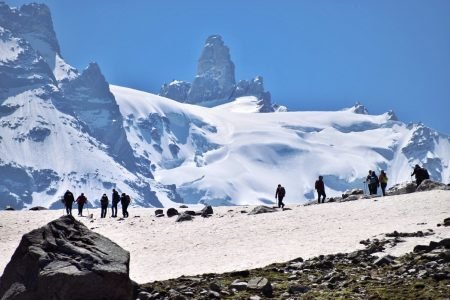
Hampta Valley Snow Trek, Manali
Himtrek's Riverside Camps and Hostel, Manali, Between Clubhouse and La Plage Restaurant, Old Manali, Manali, Himachal Pradesh, India
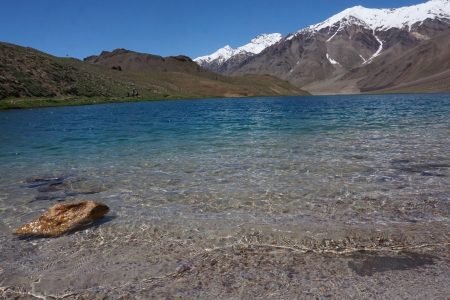
Hampta Pass Trek With Chandratal: Adventure & Trekking

Magnificence of Buran Ghati Trek: 2024- Treks in Himachal Pradesh
Shimla, Himachal Pradesh, India
Select User Type
Enter the e-mail address associated with the account. We'll e-mail a link to reset your password.
You will receive an email containing a link allowing you to reset your password to a new preferred one.
Verification mail has been sent.
Please check your mail to verify your account.
Click Here to Login
- How To Reach

- Deo Tibba Expedition

Inquire Now
Pickup point, minimum age.
- Expeditions
Deo Tibba expedition is an adventurous ride into the mountains. It allows you to experience nature like never before. The trails pass through some of the most scenic landscapes of all time. You get to experience the thrill of traversing through dense forests, moraines, meadows, beautiful waterfalls and equally alluring lakes. However, due to its challenging terrains, that require a certain skill set to trek over, this expedition is best suited for physically fit and well experienced climbers who have sufficient knowledge in the field of mountaineering.
This expedition will take you through lush green forests of silver birches, oak, pine, spruce and fir etc. It will also open into beautiful and snow capped- landscapes that will give you a birdâ??s-eye view of the surrounding landscapes. You will also be able to witness the sky-reaching mountains like Deo Tibba and Norbu Peak as well as reside in base camps set up in some of the remote villages like Panduropa, Setan, Chhikka.
Jogi Dugh and Bhandara Cave
On your way upwards, you will come across the village of Jogi Dugh which is claimed to be the abode of Thakshag Nag and all 18 Nag Gods. Nestled away from the mainland, this village is an epitome of beauty and rich cultural significance. As you ascend higher, you will also cut paths with the Bhandara cave which is another essential highlight in this expedition. The Bhandara cave sits mighty and aloof since time immemorial and is known as the abode of Pandavas during their exile which is why it is regarded with great cultural prominence, especially by the believers of the Hindu religion.
Chota Chandratal Lake
The emerald blue water of Chota Chandratal lake that is situated at the foothills of Mt Deo Tibba is the most sought after site during the expedition and remains as the key highlight of the journey. The Chota Chandratal Lake is a seren picturesque lake that is indeed surreal and absolutely worth the hype.
Considered to be the second-highest peak of the Pir Panjal mountain range, Deo Tibba has an exceptional height of 19689ft. This expedition offers a unique opportunity that provides just about the right kind of experience especially for trekkers who may have recently ventured their way into the mountaineering field. In fact, due to its technical importance, it is also a preferred place for Mountaineering Course expeditions by many institutions across the country. The expedition opens into lush green mountains which are covered with fresh powdery white snow during winters that make this expedition all the more interesting, challenging and exhilarating.
A beautiful village called Jagatsukh village near the city of Manali marks the starting of this exciting expedition. Pull up your socks and tighten your belts as you prepare to traverse through soul-stirring sceneries in the near future. You will be startled to find a variety of terrains on your way to the summit; starting with the dense forests of birch trees, to mesmerizing grasslands covered with snow, milky white meadows, to gigantic glaciers. You will also come across frozen lakes and refreshing waterfalls that will make your journey upwards, merrier. Since the landscape here is tricky, you will have a good opportunity to make use of your mountaineering skills and live your passion to the fullest. Use and polish your skill sets as and when you encounter terrains that need the use of axes or crampons etc. Deo Tibba expedition indeed is a vast treasure of opportunities where you can learn and grow, as well as satisfy your wanderlust at the same time. Be sure to remain prepared for an exciting ride yet a very unpredictable ride, the mighty Himalayas are famous for their unpredictable weather. This can both add thrill to your journey or even require you to step down and descend to a safer campsite. Nonetheless, this expedition can be a great getaway from the chains of the world altogether; not literally yet metaphorically. You will elevate to a height where communication will be hampered and you will no longer be in connection with the world. Enjoy your solitude while you still have it. Observe and admire nature's infinite might, vastness and consuming beauty. Explore the unexplored and give yourself the adrenaline rushes that you looked forward to, all this while.
The best time to visit the famous Deo Tibba peak is either between May to June or between September to October. The magnificent state of Himachal Pradesh is rich with beautiful and mighty mountains that are best suited for trekking and camping. Out of the many expeditions that the state offers, Deo Tibba expedition is one of the most thrilling expeditions that takes you on an approximately 75 km long journey.
The alluring views of lofty mountains, hanging glaciers, exposed rock faces and numerous other spectacular aspects, takes this expedition to every adventure enthusiastâ??s bucket list. Say no more and join us for an enriching, hospitable yet challenging and fun journey to the Deo Tibba Peak as we take you through the eye-catching snow covered terrains that will leave you gasping and overwhelmed and strike that wish off of your bucket list.
It usually takes 14 days of steady and planned trekking to cover this exciting trek. You will pass through many little villages/hamlets such as Panduropa, Setan, Hampta Pass, Chhikka Pass etc that will serve as your base camps at different stretches as you trek to higher altitudes. Some of the notable sites throughout the journey are the Jogi Dugh, Bhanara Cave, the Chota Chandratal Lake, and Prini. The Jogi Dugh is also known as the Abode of Serpent God & all the 18 Nag Gods, and is a famous site for the believers of the Hindu Religion.
Deo Tibba Expedition in Autumn: Autumn is usually considered the best season for an expedition through the Deo Tibba mountain range. From September to October, trekkers generally experience favourable weather conditions. While the day temperature ranges from 12-18 degree Celsius, nights get colder with temperatures in the range of 4-6 degree Celsius. Autumn brings with it a pleasantly cold weather with limited tender snowfall that allows you to experience the dreamy snow covered landscapes yet at the same time feel not freeze or feel the extremities of the winter season.
Deo Tibba Expedition in Summer: Between late May to June, you will be able to find patches of snowfall at high altitudes even during the summer season. However, the snow starts to melt considerably around this time and the lush green grasslands start to become visible. Similar to Lahaul and Spiti, the weather during the day in Deo Tibba remains warm and sunny. The temperature ranges from 12-20 degree Celsius however at night, the temperature falls somewhere between -2 to -6 degree Celsius.
Brief Itinerary
Detailed itinerary, day 1: arrival at manali.
Since it is a 14 day long expedition, the itinerary is drafted keeping in mind the necessary time that is averagely required to acclimatize well. On the first day, you are required to arrive at Manali. Bottle up zest, zeal and energy, you will need plenty of them. Located on the banks of the Beas river is the scenic town of Manali which is exquisite,enthralling and soul-warming place to be in. It is especially known for its weather which remains pleasant for most part of the year. In fact on a clear day, from the right places here, you may even be able to spot the magnificent Deo Tibba peak. After you arrive here, Indulge in a scrumptious and healthy lunch to please your taste buds and set your mood straight. You may preferably use the remaining day to rest and energize for the expedition. However you may hike to nearby places and admire the beauty of this scenic town. Hadimba Temple and Mall Road are some of the famous sites that travellers like to visit, while in Manali. In any case, it is recommended to avoid going to far off place or places at higher altitudes since that can affect your acclimatization process. However, it is recommended to return to the campsite before late evening, you may proceed to have piping hot dinner when its due and then pack up early to get yourself some quality sleep.
Day 2: Manali to Chhikka
This day you will finally begin your trek towards Mt Deo Tibba. Freshen up and proceed to have a healthy and warm breakfast to energize for the day. Gear up and grab yourself a comfortable seat in the vehicles alloted to you that will drive you to the beautiful village of Sethan. Admire the majestic sceneries that will accompany you as you excitingly wait to begin your trek. The landscapes with tiny settlements that you will encounter on your drive to Sethan are indeed surreal and artistic; watch out for them. Upon reaching Sethan you will be overwhelmed by its pleasant weather and beautiful scenery that is sure to take you by a storm. It is from this village that you will begin a short trek to reach Chikka; the final destination of the day. Chikka is a beautiful village resting in the lap of mighty mountains. On your way to Chikka you will come across interesting trails and fresh green surroundings which will most likely be covered with fresh, powdery, white snow during the winter season. Enjoy the emotions of traversing through the valley as you pass through dense oak and pine forests. Halt for a brief lunch break and satisfy your hunger pangs with delicious savoury. Resume the trek and steadily climb uphill, it will take 2-3 hours for an averagely fit person to reach the village of Chikka. Upon your arrival here, you may rest in your camps and spend the remaining day hiking to nearby places. Around dinner time, you may proceed to indulge in a drool-worthy piping hot dinner to fill yourself up and catch some much needed deep sleep.
Day 3: Chhikka to Seri
Wake up to a refreshing morning amidst the mountains and freshen up to kick start the third day of your expedition. As you begin your trek post a deliciously healthy breakfast, you will find yourself gradually ascending through dense forests of pine trees that will begin to scatter and become sparser as you climb further higher. The mind-boggling panoramic views of the landscape will leave you spell-bound quite literally. Halt for a quick lunch break and pull yourself together to resume the journey and complete it with vigour. The forests will eventually open into beautiful grasslands that will lead you to the village of Seri. After trekking steadily for nearly 5 hours you will finally reach the campsite in Seri. Upon reaching the campsite, get yourself some rest, fill yourelf with a scrumptious dinner and spend a cozy, warm night in the middle of mountains.
Day 4: Seri to Deo Tibba Base Camp
Day four may appear to be quite challenging in comparison to the activities that you did in the past three days. The trek will commence post a scrumptious and energy-rich diet that will help you feel active and keep you prepared for the energy-draining activities of the day. As you climb higher and higher you will cut paths with the iconic Tainta cliff where you can spend some quality time by the cliff and enjoy the subtle wind gently caressing your face. Interestingly, once you cross the Nala, moraines will begin to accompany you. After you cross the moraines, it will take an hour of steady trekking on the ridge for you to reach the Tainta camp. This camp is set up at the base of the glacier. Unlike the previous camps, the Deo Tibba Base Camp is located in a closed valley that gives you the opportunity to spend some time in your own company and solitude. Upon reaching the campsite, you may grab some warm lunch to fill yourself up and you might as well hike to near by places to explore and admire the beauty that nature is. Return before it is late in the evening and have a gala time with your trek members before you proceed towards dinner and call off for the day.
Day 5: Rest/Acclimatization Day
Day 6: load ferry to camp 1.
Day 6 will mark as an exciting and challenging day which will introduce you to the real mountaineering world. In mountaineering, 'Load Ferry' has great importance. It is an activity wherein climbers carry their gear and equipments to the camp at higher altitude and return to the base camp the same day to rest for the night. This approach not only helps climbers acclimatize well, it also protects them from altitude sickness which is likely to occur at higher altitudes. However, ascending gradually, maintaining hydration and picking a careful diet usually helps in keeping altitude sickness at bay.
Wake up to a cozy morning, freshen up and grab some healthy breakfast to kick start the day. As you embark on your trek to Camp 1 with gear and equipment, you will find the first 200 metres of the trail to have a moderate ascend after which the trail gradually becomes steeper for the next 300 metres and eventually becomes a flat slope for the last 100 metres. Take careful steps as you climb your way up and exercise your skills. After reaching the camp, fill yourself up with delicious lunch and pull your socks up to retrace the route back to the Deo Tibba Base Camp.
Day 7: Deo Tibba Base Camp to Camp 1
On the 7th Day you will retrace yesterday’s route to reach the same camp where you dropped off your gears and equipment the previous day. Carefully trek your way to Camp 1, be cautious of the glacier and the rockfall area especially. Enjoy the challenges that make this trek thrilling and drool-worthy. With a steady pace it takes about 5 to 6 hours to reach Camp 1 from the Deo Tibba Base Camp. Remember to keep yourself hydrated and don’t rush your way to the top. Upon reaching the camp secure yourself some good sleep and wash off the tiredness of the day.
Day 8: Load Ferry to Summit Camp
This day, you will repeat the activities of the 6th day. You will carry your essentials and importantly your gears and equipment to the summit camp at higher altitude and return to camp 1 on the same day. This route of the expedition is the most happening and thrilling one. Initially the route appears to be moderately difficult and you ascend with a steady pace but as you trek higher the trail begins to get steeper by the climb. Use your skill set to get through the tricky areas and enjoy the wonderfully challenging and enthralling trek upwards. Indulge in a scrumptiou and delicious warm lunch at the campsite during the lunch time and gear up to return to camp 1.
Day 9: Camp 1 to Summit Camp
Wake up to a refreshing morning with excitement and wanderlust in your veins. Freshen up and pull yourself together to accomplish today’s activities with vigour. Retrace yesterday’s path and trek uphill with patience and grit. Enjoy the soul-stirring panoramic views of the surrounding and admire the snow-covered stretches that will leave you feeling priceless and infinitely small amidst nature's bounty.
Day 10: Summit Attempt and Back to Camp 1
This day is the day that you would have been most waiting for; the ultimate trek to the summit. Pull your socks up and hold your horses as you gear up to visit the much-awaited summit. The attempt to the summit will begin at 2 a.m. in the morning. Keep yourself prepared and wake up as soon as possible to start your preparations of visiting the summit. This route will give you the opportunity to put to use the techniques that you have been waiting to exercise. Initially, you will have to cross a gulley, the first 300 metres of which has a steep slope and can be covered with the help of fixed ropes, the latter part of the route will require other techniques to be used, remain alert and enjoy the challenges as you ascend to reach the final destination.
As you climb higher, you will be able to view the Indrasen peak quite clearly and further higher will be the summit, resting in all its glory, right before your eye. Enjoy that surreal moment and watch your emotions go haywire in the moment. Since the summit is not a pointed ridge and instead an open, flat and giant snow dome, you will be able to walk for about 100 metres to truly enjoy the infiniteness of nature and its untouched, unexploited pure beauty.
After spending some quality time at the summit and satisfying your wanderlust, you may retrace your route back to camp 1 and finally call off for the day. However, If the summit push does not get completed this day due to unavoidable reasons, buffer days will be utilized to re-attempt the visit to the summit.
Day 11: Camp 1 to Deo Tibba Base Camp
After accomplishing yesterday’s success, you may not be as enthusiastic to return to the base camp yet in any case pack up and be prepared to retrace your route to the base camp. You will follow the same trail that took you up to descend to the camp at lower altitude. Enjoy a delicious and warm meal to re-energise and wash off the exhaustion of the day. You may spend the remaining day by yourself and while you are here, you may as well enjoy the opportunity of experiencing solitude like never before.
Day 12: Base Camp to Chhikka
Wake up in the lap of mighty mountains and admire the beautiful sunrise in the middle of nature. Freshen up and get ready to go back to the village of chhikka. You will experience the steep trails and moraines, one last time this day. This trek will stretch across 14 km and will be quite tedious and exhausting.Nonetheless, it will still open to you opportunities of witnessing nature’s bounty up and clode. Halt for a lunch break and indulge in a scrumptious meal to pump up and complete the remaining route to reach Chhikka. Upon reaching Chhikka, you may grab some rest and chill for the day. Enjoy your last stay in the tents today.
Day 13: Chhikka to Manali
Day 14 & 15: buffer day.
To facilitate flexible planning, every expedition plan includes buffer days. These days can be utilized in unfortunate cases where the summit attempt may have halted which usually happens on account of unfavourable conditions. To increase the chances of a successful summit attempt, a couple of days are included so that the summit attempt can be done again the next if unforeseen circumstances occur on the scheduled day.
The buffer day's costare not included in your trek expenses. The use of a buffer day depends on the team, if the team decides to utilize the buffer day, you will be required to pay the estimated cost.
Manali is well-connected to several parts of the country by air and road and even indirectly by rail.
The nearest airport, Bhunter, is located at a distance of 52 km from Manali. Bhunter has connectivity with Delhi, Chandigarh and Kullu. Further, Taxi services that can cost between â?¹700-â?¹1000 are available to drive you from Bhunter to Manali.
Manali is well-connected by road with Chandigarh, Shimla, Kullu and New Delhi. From the capital, it is just an overnight journey. Many local, government and Luxurious Volvo buses are also available frequently from New Delhi, you can utilise several online portals to book your ticket in advance.
Manali has no direct rail connection. The nearest railway station is Jogindernagar. Other railway stations close to Manali are Chandigarh and Ambala. To reach Manali from any of these stations, you can avail different modes of transportation.
Latest Stories
Why trek with us .
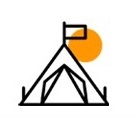
Cancellation Policy And More Information
I chose (after a lot of research) Trekmunk for my first trek - The Hampta Pass and Chandratal Trek. And I am so really glad I did so. The trekker needs to only focus on the trek and the beautiful landscape around him/her. The rest of everything is taken care of by Trekmunk from d ...
I was bored with my regular 9 to 5 schedule and then I decided to seclude myself from the chaotic city life. So, I went to Brahmatal trek last month along with a couple of my friends. We went with Trekmunk and it was a lovely experience. The trek guide, Ramesh was very polite and ...
I had the most wonderful experience trekking through the ranges of Chandrashila with Trekmunk. The small moments of achievement were phenomenal. Chandrashila is the most astonishing peak that I've ever trekked through; I've never been so fascinated. I think I am going to go for a ...
I chose (after a lot of research) Trekmunk for my first trek - The Hampta Pass and Chandratal Trek. And I am so really glad I did so. The trekker needs to only focus on the trek and the beautiful landscape around him/her. The rest of everything is taken care of by Trekmunk from day 1 till the end of the trek. Scrupulously managed logistics; no compromise on safety and security; experienced, intelligent and knowledgeable trek leaders; scrumptious meals; contingency and backup plans; etc. make Trekmunk an ideal choice to go trekking with. My trek was lead by Ashish Pathania, Prashant Reddy and Sanjay Thakur. The three are were thorough professionals. They were jolly, very helpful, experienced, knowledgeable, organized, and needless to say polite yet strict when needed. They played the most important roles in making sure our overall trekking experience was a wonderful one. Thank you Trekmunk for one of the most beautiful experiences I have had till date. Will see you guys soon.
I was bored with my regular 9 to 5 schedule and then I decided to seclude myself from the chaotic city life. So, I went to Brahmatal trek last month along with a couple of my friends. We went with Trekmunk and it was a lovely experience. The trek guide, Ramesh was very polite and helpful. The food and snacks were amazing. The activities in the campsite during our overnight stay is something that I am gonna cherish my entire life. I am waiting for my next trek with Trekmunk.
I had the most wonderful experience trekking through the ranges of Chandrashila with Trekmunk. The small moments of achievement were phenomenal. Chandrashila is the most astonishing peak that I've ever trekked through; I've never been so fascinated. I think I am going to go for another trek with Trekmunk soon enough! The kind of hospitality that is provided to us is worth appreciating. I made many new friends and have enjoyed each and every day of this trek to its fullest.
I had the best time of my life at Sandakhphu Phalut trek arranged by Trekmunk. Literally I felt like I was in heaven and I was soo very happy. I will recommend everyone to opt for Trekmunk. I was a solo woman traveler and was a bit worried, but things went very smoothly and I enjoyed it a lot. I miss my fellow trekkers too. I am very satisfied with their arrangements.
We were a group of 12 friends and booked a trek to Kedartal with Trekmunk, it was an amazing experience..even though it was our first trek to the Himalayas and Kedartal being a difficult terrain trek we were guided excellently by the Trekmunk team. They served us nutritious food, took complete care of our safety and health and gave us the right advice to overcome AMS. Eagerly awaiting our next trek with them.

"Trekmunk is changing the indian trekking industry"
"10 Most Promising Adventure Sporting and Trekking Companies - 2020"
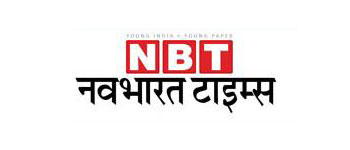
" Things you do for the Passion for Travel"
Hello there, How can we help you ?
Timing: 10 am to 6 pm IST (GMT +5:30)
Whats App Us

Deo Tibba Base Camp Trek
Deo tibba base camp, stunning views of the pir panjal mountain range and rohtang pass.

Short Itinerary
Day 1 drive from manali to bara hazar; and trek to chikka (10,500 ft) | trek: 2 - 3 hrs.
Early morning our vehicle will take you to the Bara Hazar and from there trek to Chikka
- Duration 2 – 3 hours of trek
- Altitude – 8850 ft to 10500 ft approximately
Day 2 Chikka to Seri (12795 ft) | Trek: 6 Km in 4 - 5 hrs
Today we have to trek for 6 Km along the river Jagatsukh and then proceed to a dense forest path marked with cairns and boulders along some rocks and a carpet of wildflowers. then overnight stay in Seri
- Distance – 6 km
- Duration – 5 to 6 hours
- Altitude gain – 10500 ft to 12800 ft approximately
Day 3 Seri to Deo Tibba Base Camp (13684 ft) | Trek: 4 km in 2 - 3 hrs
The Day starts with easy walking across the grassy meadows section towards Deo Tibba base camp. Once you reach the top then from there plain walk to the next campsite Distance – 4 km Duration – 4 to 5 hours Altitude – 12800 ft to 13680 ft
Day 4 Deo Tibba Base Camp to Chotta Chandartal (14698 ft) and back to base camp | Trek 3 km in 2 - 3 hrs
On this day we will remain at the same campsite we will day hike from there to Chota Chandartal at an altitude of 4485 meters then get back to the same base camp of
- Distance – 2 km
- Duration – 2 to 3 hours
- Altitude gain – 13680
Day 5 Deo Tibba Base Camp to Seri | Trek: 4 km in 2 - 3 hrs
Begin your journey back home, the trek begins with a flat walk on the grasslands followed by a river crossing and then through the grasslands to the campsite.
Day 6 Seri to Baara Hazar; and Drive to Manali | Trek: 2 - 3 hrs, Drive: 3 hrs
Today we get back to Baara Hazar and then drive back to Manali our journey of this trek ends here
Day 2 How difficult is the trek & what are the challenges?
Question related to deo tibba base camp, what is the height of deo tibba base camp trek.
The height of Deo Tibba Base Camp Trek is approximately 4,170 meters
How far is the Deo Tibba Base Camp Trek?
The total distance covered in the Deo Tibba Base Camp trek is approximately 37!
Where is Deo Tibba Base Camp?
It is in the town of Manali in the Kullu district of Himachal Pradesh
Is Deo Tibba Difficult?
The Deo Tibba Base Camp trek is a Moderate level trek
Where is the nearest ATM?
You will find a lot of ATMs in the main market of Manali. Once we were out of Manali there was no ATM on the way.
What is the best time to do the trek and how is the weather?
What are the top highlights of the trek.
There are no reviews yet.
Your email address will not be published. Required fields are marked *
Your review *
Name *
Email *
Save my name, email, and website in this browser for the next time I comment.
Deo Tibba Base Camp Trek Package inclusion
- Transportation from Manali to Manali.
- All Meals from Day 1 Lunch to Day 6 brerakfast
- Camping tents, sleeping bags, mattresse,
- Camping Charges,
- Mountaineering course certified Trek Leader
- cook, helpers, and porters for carrying common supplies
- Complete first aid kit including oxygen cylinder
- Your designated hotels may not reopen by the time you reach there. While we are making alternate arrangements, do understand that things may not be as “tip-top” as our designated hotels.
- The gurudwara, Hemkund Sahib may not be open. While we are trying to take permission to go to Hemkund Sahib, if it does not happen, then do understand that the pandemic has put restrictions beyond our control.
Deo Tibba Base Camp Trek Package Exclusion
- Any kind of personal expenses
- Anything not specifically mentioned under the inclusion head
- Any kind of Insurance
- Personal luggage with mass not exceeding 12 kg per bag per person can be carried by porters/mules @ Rs 500 per day per bag.
Upcoming Treks
- 17-07-2021 to 23-07-2021 open
- 17-07-2021 to 23-07-2021 close
Send Request
Your query has been successfully registered. we will contact you within 24 hours., something went wrong.try after sometime..
- [email protected]
- +91-9318840504

Deo Tibba Expedition
Manali, Himachal Pradesh
Rated 4.9/5.0 on TripAdvisor. 550 Reviews

- Preparation of Trek
- Things to Carry
- Inclusion & Exclusion
Key Highlights
- Altitute: 6001mtr
- Time : 13 Days - 12 Nights
- Region: Manali
- Best Time: June to October
- Distance: 60Kms
- Grade: Difficult
Located in the Manali valley in Himachal Pradesh's Pir Panjal range, the stunning peak of the Deo Tibba Expedition stands at an altitude of 6001 metres. Dome-like in appearance, it may be seen in Duhangan Nalla and Malana glacier, which consists of a large ice cap. Once you reach the edge of the ice plateau, you may access the real climb, which is a snow hump. It's stunningly located at a height of slightly over 6,000 metres, which will be a significant milestone for any dedicated mountaineer. The hike up Deo Tibba, a renowned summit, passes through the beautiful Himalayan foothills. At the peak, visitors might ponder whether or not the legend that all the Hindu gods used to hold caucuses atop this dome is grounded in reality. The top of this dome-shaped mountain, the second-highest in the Pir Panjal Range, provides a panoramic view of the surrounding snow-capped mountains.
Traveling the rocky paths leading to Chikkha while being accompanied by a winding stream will be a lot of fun. Chikkha is characterised by lush green pastures under clear blue sky; on our journey to Seri, we will pass through this area, and it will be a delight to stroll among its fields of wildflowers. The route winds its way upwards through forests of birch, pine, fir, and cedar. Amazingly beautiful sights like the Tenta Waterfall, Chandertal, and Jagatsukh can only be fully appreciated by being there in person. Chota Chandratal, high above Tenta, will serve as our base for the next several days. We'll start at base camp and acclimatise ourselves there before ferrying supplies to outlying sites. We'll start our ascent on the scree of Duhangan Col., continue over the vast ice field, and then continue up the ice cliffs. Your physical and mental fortitude will be put to the ultimate test as we make our ascent. Upon reaching our last destination, the peak of Deo Tibba, you will see its pristine magnificence in all its sweeping majesty. Once at the summit, you'll be able to take in breathtaking views of other mountain ranges and towering peaks in the distance, and you'll have a great sense of accomplishment. Carefully retreat from the top camp to the base camp and so on until you reach the trailhead. After a few days of camping in the wilderness, we have finally returned to the lush natural valleys of Kullu Manali. Now that we've travelled for what seems like forever, it's time to say our goodbyes and go home.
This journey spends 12 nights and 13 days exploring Mount Deo Tibba. You'll have plenty of time to adjust to the altitude on this lengthy trip. The spectacular trip is home to a peaceful and beautiful scenery that just enchants visitors into learning more about the rich history and culture of Himachal.
You can also explore Deo Tibba Base Camp Trek
Cost Per Person
- Preparation for Trek
Itinerary of Expedition
You will be welcomed by our agents when you arrive in Manali, and from there, you will be driven to the rest of your lodgings and activities. On this day, we will finish the paperwork and any other preparation that is necessary. Following completion of all of the tasks, one may go to Manali.
Travel from Manali to Duhangan via the winding roads that lead into the heart of Hampta. Once you have arrived at the end of the road, prepare for the journey that lies ahead by picking up your bags and leaving our vehicle behind. The first part of our hike will consist of very easy ascents along the creek that will take us into the deep woodland. We won't be in a hurry as we make our way up the route, so we can take in the untamed natural surroundings. As time goes on, the woodlands will begin to thin out, and the town of Chhika will begin to take shape. Chhika is a sacred location that is connected to the residence of the Nag Devta. At this location, there is a rock that has a naturally carved sculpture of Nag Devta, also known as the Snake Deity, that is as lifelike as it could have been produced at the time. This natural representation of the Snake Deity may be seen in close proximity to the temple grounds. The idol seems to be ascending towards the mountains and looks as natural as it can. There are huts available for devotees who choose to spend the night there. After we have some tea and some snacks, we will look about the region and then fix our campers. Tents will be used as lodging for the night.
Today, we will begin with a steaming cup of tea, followed by the delectable breakfast that has been prepared. Initially, the hike will only be a modest amount of work as it passes through the dense woodland beside the creek. The vegetation of the lowlands will gradually transition into the vegetation of the highlands, and there will be birch trees along the way. This shift is then followed by the appearance of plant species that evolved in highland meadows, such as alpine shrubs. Along the way, we will go past the fabled location known as Pandu Ropa, which was a paddy field where the Pandavas grew rice. Spending some time in this breathtaking setting is highly recommended. Moving further, we traverse the stones and plants of the highland area as we make our way beyond the Duddu Pathar. We are going to be surrounded by bushes and stones up to the point when we can see the vast and expansive meadows of Seri. Although there are a few steeper sections on the path, the distance may be accomplished in a leisurely fashion overall. After arriving at Seri, one is able to see the wonderful campground's expansiveness for themselves. The large, flatlands that are decorated with vibrant plant life and have a stream that flows in a zigzag pattern close to the camp are what give it its moment of vitality. The area is hemmed in on all sides by precipitous cliffs of the surrounding mountains, and there is a breathtaking waterfall right in front of it that cascades down the Tenta cliffs. Discover the broad flatland and come face to face with the horses as they roam freely all over the field during the twilight hours. Don't forget to look up at the night sky, the stars, the milky way, and the constellations that are clearly visible when you have the chance. Because the campground at Seri is often subjected to arctic winds, the evenings and nights there may be rather chilly.
During the early hours of the day, make sure to catch the stunning contrast created by the sun rising on one side of the mountains as it illuminates the other side from behind the mountains. After you've had some tea and breakfast, you may begin your hike through the vast flatlands of Seri. The level ground comes to an end, and after that there is a sharp ascent that has to be traversed. Therefore, the only vegetation that can be seen consists of grasslands and a few species of Himalayan herbs. In order to go over the cliff, you have to finish the winding track, which takes an hour, and additional modest stepping, but it leads you to the flowing torrent to cross. The water in the creek is ice cold, and there is a raging torrent to go through. After we have traversed it, we shall continue our trek on the other huge flatland. The steady ascent will remain the same, and the trek to our camping ground at Tenta will be taken at a leisurely pace. Tenta is an encampment that is mostly surrounded by the cattle that the shepherds care for. Tenta is not only a lovely spot but also a position from where one can observe the whole valley as well as the path that was taken before. One may get a good view of the huge Mt. Deo Tibba from Tenta, which is located in an elevated location above us. After a nutritious meal, you should spend the night in the campgrounds.
We will be resting for the whole day today and getting used to the higher altitude. It is possible to get used to the climbing strategies and gear that will be required in the future. Explore the area, don't spend the whole time inside the tent, and make an effort to go hiking during the afternoon.
A portion of our gear will need to be transported to the Advance base camp, so get up early. A trek with large backpacks containing all of our climbing gear, rations, and other necessities will serve as our acclimatisation. Climbers will have a better understanding of the challenges that lie ahead if they move load from one campground to the next. After leaving our belongings in the Advanced Base camp, we will make our way back to the Base camp. Take the opportunity to rest up for the day that lies ahead.
The portion of the ascent that takes place above ABC and through Duhangan col. is the most difficult portion. Even for climbers with previous experience ascending at altitudes higher than 6000 metres, the Duhangan col's combination of ice and scree is a difficult challenge. The trek up to the col is quite steep and difficult until you reach the summit. As a result of the loose stones and pebbles, the grade continues angling vertically, making it very tough to climb. In order to make it through this phase of pushing one's limitations, one has to be dedicated and well-prepared. The climbers need to be aware of their surroundings at all times since even the smallest step might cause a piece of loose rock to fall and hurt someone climbing behind them. Therefore, maintaining vigilance and being active is required throughout this section of the ascent. Climbing to the top of the Duahangan col takes roughly seven to eight hours on average. After climbing the challenging stretch, one will be able to glimpse a large ice field that extends well below the summit. As we make our way across the ice field, the sheer magnitude of it becomes apparent. The location of our overnight camp will be on this enormous expanse of ice.
In order to set up summit camp, you will need to get an early start. There are two different paths that may be used to get to summit camp, and both have been utilised by recent climbers. One possible path ascends the southeast piton ridge till reaching a steep snow ramp that leads to an additional ridge that connects the higher neve slopes. Climbers typically use the alternate path, which leads them to a gully that is composed of both snow and ice and is located to the southeast of the piton ridge. We have the ability to take any route by determining what the climbers or the scenario requires.
Today is the day that everyone involved in the climbing had been looking forward to the most. The ascent to the Deo Tibba Expedition peak will begin as soon as we are able to adequately prepare ourselves for the steep terrain. The path is a combination of snow and ice, and it ascends steadily all the way to the summit. It is a challenging endeavour, and you will need all of your efforts to be successful in order to reach the summit. Your years of hard work and dedication to improving your strength would be put to good use at a level of success that almost everyone aspires to attain. It is important that our goal be accomplished on time so that we may enjoy some moments of glory atop the mountain by taking pictures and raising the Indian flag. On the horizon, one could make out gigantic peaks and mountain ranges that extended out in the distance. Standing at the summit, high above the clouds, one would have the sensation of having won the battle against the formidable mountain and the exhilaration would last forever. Retrace your steps with great care in the direction of the summit camp. When you arrive, enjoy a steaming cup of tea and reminisce about happy occasions that brought you glory. After supper, we should get some rest and try to get a good night's sleep before we go back down.
This day is set aside in case the weather takes an unexpected turn or the climb for the Deo Tibba Expedition must be postponed owing to illness or any other cause.
Descend down the treacherous Duhangan pass in a safe manner, and arrive back at the base camp. The exquisite scenery, which has been absent for a few days, will make one feel valued and nostalgic. Enjoy the evening with a steaming bowl of soup while taking in the view from the summit at your own pace. Spend the night in one of the tents.
The wild flora and animals that we will encounter today, together with the verdant scenery that surrounds us, will invigorate and thrill each and every one of us once again. We retrace our steps and make our way to Chhika by the afternoon.
The last day has come, and with it comes the last opportunity for anybody to make it back to civilisation. After a two-hour hike, we will arrive at the Duhangan Project site, where our car will be waiting for us. Chhika is the starting point of our journey. We will get back in the car and go back to Manali. When in Manali, visitors are at liberty to go to any location of their choosing.
Enquiry For Group Bookings
➽ important note.
The itinerary serves as both a guide and a template, both of which are provided to you by us. This Rock Climbing Expedition is adaptable to accommodate your available time as well as specific needs. This hike's itineraries are subject to change depending on the schedule. Inquire with us or send an email to [email protected] for the most recent information and pricing on the expedition.
➽ Preparation for Expedition
As you well know, the great Himalayan expedition is one that requires careful preparation, a strategy that allows for enough flexibility to adapt to whatever challenges may arise.
Therefore, here are some things to consider before setting out on your Deo Tibba expedition:
⦿ Physically – You should start working out at least a month before signing up for a program if you want to be physically prepared for the rigours of a journey. Strengthen your legs by jogging and working out regularly to increase your stamina. To better acclimatise to the environment and increase your resilience on the walk, you should give up smoking and undertake breathing exercises twice a day. Engage in vigorous physical activity, such as playing sports, doing Yoga, or running.
⦿ Mentally –
Getting in shape physically is essential, but mental preparation is just as crucial for a successful walk. Take time to enjoy your regular activities, maintain a healthy diet and sleep schedule, and unwind before embarking on a hike. Predictions regarding the journey should not cause mental worry. Spend time with your closest pals to recharge your batteries and renew your spirit. Pre-trek preconceptions are unwarranted since the first contact with the other trekkers is certain to be a source of inspiration and energy. Conditions during the walk will contribute to the increase in mental readiness. The mental repercussions of physical disadvantages will not be ignored. So, when you hike, pay attention to different regions of your body and purposefully relax them. If you want to enjoy your hike, you should learn to loosen up a little, particularly in the hips. Think about your descent as a simple dance, and enjoy the natural rhythms that the path and your body can discover together gradually, whether you're on a flowing downhill route or a frightening slope. Try out a few new walking techniques to add some fun to your commute without worrying about getting somewhere in particular. Maintaining mental fitness mostly requires a willingness to relax and take in the journey, rather than subjecting oneself to undue stress.
➽ Things to Carry
- Good Trekking Boots: You need sturdy trekking boots with supportive high ankles. Don't bring your running shoes. U can carry extra floaters/flip flops also.
- Wear warm clothing, such three-layer coats, fleece upper, hollow fill or down-filled jackets. Carry full-sleeved T-shirt. Carry cotton hiking trek pants and warm pant for your lower body. Never bring shorts or jeans on a hike.
- Take top and bottom thermals with you.
- Quick dry towel with light weight and Personal toiletries. Suns cream lotion, sanitizer, tooth brush ad toothpaste, lip balm and antibacterial powder.
- Socks: Bring two pairs of regular socks and two pair of wool socks for wearing at night.
- A head torch is required.
- Sunglasses/ Goggle: UV-protected sunglasses are necessary to protect against sunlight and Snow Mountain.
- There should also be a woolen cap / balaclava, cap, neck gaiter cum face mask and warm fleece and waterproof summit gloves since it will be chilly. Keep waterproof gloves on hand since they become wet in the snow.
- Everyone taking part in the activity should have their own lunchbox, spoon, mug and water bottle/ hydration pack of 2 ltr.
- Raincoats/ponchos: Since snowfall and rain are frequent at high elevations, it is important to have one on hand so as to avoid getting wet.
- Trekking bag of 75 ltr with rain cover.
- Walking stick.
- Personal first aid box. Emergency ration, energy bars, dry fruit, electoral/Ors
- Personal technical gears list of mountaineering (on rent basis available)
- Climbing boot, Crampon, Sleeping bag (optional), Ice axe, seat harness, Rope and tape sling, helmet, Summit gloves, Gaiters, Carabineers 2 no (screw), figure of eight/descendor, Zumar (Ascendor),
- Required Documents: a) Registration Form b) Medical Certificate (signed by a licensed MBBS physician) c) NOC form (completed by the trekker) d) 2 passport-size photos e) ID Proof photo (not PAN) f) Basic Mountaineering Course certificate. g) Insurance upto 5 lac..
➽ How to Reach
How to reach Manali:
Delhi and Manali are linked nicely. You may travel from Delhi to Manali in 12 to 14 hours via overnight bus (approx 540 KMS). Online ticket reservations are available at www.redbus.in and www.hrtc.gov.in Tip: Given the distance between Delhi and Manali, the majority of Volvo private buses depart Delhi between 5 and 8 p.m. At 8.30 p.m., the final government bus departs from ISBT Kashmere Gate. Between Rs. 1,200 and Rs. 1,800 are charged by Volvo buses each sector from Delhi to Manali and vice versa. Delhi to Manali: Buses depart from Manali for Delhi between 4 and 8 p.m., same like the return trip. You should expect to arrive in Delhi any time between six and ten in the morning. Plan your subsequent trips just after midday, leaving ample time for bus delays.
How to reach Naggar:
Naggar is 18 kilometres from Manali, and there are several buses that operate every 15 minutes. Alternatively, one may get out at Patlikuhal, which is 5 kilometres from Naggar on the right bank highway. Between Kullu and Manali is Patlikuhal. To get to Naggar, you may take a cab or a local bus from Manali or Patlikuhal.
The closest train station is:
Ambala (350 miles) and Chandigarh are the closest railway stations (310 kms). Advice: From Chandigarh to Manali, regular buses and Volvos run in the evening. Volvo buses from Chandigarh to Manali and vice versa charge between Rs. 800 and Rs. 1,200 every sector.
The closest airport:
The closest airport to Manali is Bhuntar, which is 52 kilometres distant. From Bhuntar to Manali, taxi services are available and cost between Rs. 1500 and Rs. 2,500. Air travel between Bhuntar and Delhi is convenient. Airlines providing flights from Delhi and Chandigarh to Kullu include Indian Airlines, Kingfisher Airlines, MDLR Airlines, and Jagson Airlines.
➽ Trip Cost Includes
- Mountaineering (Instructor/guide) services provided by a highly trained, professional, and qualified Himalayan Adventure Trips staff.
- Certified local guide with extensive familiarity of the area.
- Climbing provides only vegetarian food (breakfast, lunch, and dinner).
- Staff include chefs, cooks, and helpers.
- High Altitude Force, Low Altitude Force, Porters, Mules for Common Equipment (Rations, Tents, Utensils, Central Climbing Equipment, etc.)
- Tents (to be shared), sleeping bags, air mattresses, and air pads are included. Inner
- We offer twin-share accommodations in dome, alpine, and high-altitude tents on all of our treks and expeditions. All necessary camping equipment, including air mattresses, a shelter for cooking and eating, a table and chairs, a stool, and more, would be supplied.
- Someone who can carry heavy items, set up high camps, repair ropes, etc. at high altitudes.
- Assistance from Guide All the Way to the Top
- High-altitude butane gas cooker
- The only meal offered at the hotel will be breakfast. All meals while on the walk will be supplied for you. Indian, Chinese, and Continental cuisines, all freshly cooked, will be on the menu.
- Tin-packaged food is what we'll eat at high altitude.
- A standard first aid kit with oxygen masks for the patient.
- Camping fees, wildlife fees, and forest permits.
- Taxes imposed by the state.
➽ Trip cost Excludes
- Climbers may hire individual porters to carry their gear.
- Airport transportation costs
- Expenses for carrying still/video cameras etc.
- Irregular/Personal costs, such as laundry, phone calls, and gratuities.
- Climbing equipment such as ropes, pitons, snow bars, crabs, etc.
- Your own personal mountaineering equipment and clothes, as well as any specialised foods you may need
- Inner Line Permit.
- Health coverage or the price of a rescue mission
- Expenditures of a more personal character (such as booze, soda, bottled water, mineral water, canned or bottled drinks, candy, canned or packaged dried fruits, etc.)
- Provisions/food to or from the starting point of the trek.
- Any expenses that are incurred as a result of natural disasters, human error, or other unforeseeable occurrences.
- Protect your trip with a travel insurance policy.
- Authorization, licensing, and enlistment with the IMF.
- Payment for Liaison Officer (included for foreign expedition only)
➽ Special Casual Leaves
Government employee can avail the benefit of special casual leave when u join us for a trekking expedition. As per the rule of the pay commission, special casual leave can be availed for up to 30 days in a calendar years for trekking and mountaineering expeditions through a register organization. Himalayan adventure trips are a register adventure tour operator register with Indian mountaineering foundation and Himachal Pradesh tourism. Candidates have to apply for leave at least 30 days before the trek/expedition start.
➽ Frequently Asked Questions
The Deo Tibba Expedition is located in the Pir Panjal range of the Indian Himalayas, near the town of Manali in the state of Himachal Pradesh, India.
The summit of Deo Tibba stands at an elevation of approximately 6,001 meters (19,688 feet) above sea leve
The typical starting point for the Deo Tibba Expedition is Manali, which can be reached by road from major cities in northern India. The nearest airport is Bhuntar Airport, about 50 kilometers south of Manali.
The best time to climb Deo Tibba is during the summer months, from May to September, when the weather is generally stable and the climbing conditions are optimal.
Climbing Deo Tibba is considered to be of moderate difficulty, requiring good physical fitness, some technical climbing skills, and experience with high-altitude trekking.
Yes, prior climbing experience, especially at high altitudes, is recommended before attempting the Deo Tibba Expedition. Familiarity with glacier travel, ice axe, and crampon techniques is beneficial.
Equipment required for climbing usually includes crampons, ice axes, ropes, harnesses, helmets, walking poles, & camping gear, but most of the things will be provided to you by us. You need proper clothing for extreme cold weather conditions. Many important things is already mentioned above on this page.
The main dangers include altitude sickness, crevasses, avalanches, extreme weather, and rockfall. Proper preparation, acclimatization, and caution are crucial to mitigate these risks.
The length of time taken to ascend & descend the peak usually takes 13–12 days
Climbing Deo Tibba solo is not recommended due to the technical nature of the climb, high altitude, and potential hazards. It's safer and more enjoyable to climb with an experienced guide or in a guided group.
Permits for climbing Mt. Nun can be obtained from the Indian Mountaineering Foundation (IMF) or the local authorities in Leh. But don't worry we will help you & do this task on your behalf.
ATMs are available in Manali , but facilities may be limited in remote areas near the base camps of Deo Tibba. It's advisable to carry sufficient cash from Manali for your expedition expenses.
Other popular treks and expeditions in the Manali Range include the Friendship Peak Expedition , the Hanuman Tibba Expedition , and the Beas Kund Trek . Each offers unique challenges and stunning scenery for outdoor enthusiasts to explore.
CAPTURED BY OUR TEAM
Testimonials, ➽ provided by the customers.
In July of 2018, I attempted to climb Mount Deo Tibba with Himalayan Adventure Trips. The expedition went well and according to schedule. The service was great, and we also had a good time. The native food was delicious, and the people were more than happy to assist me in any way they could. My plan is to join them on their future adventure without a doubt.
During my time with Himalayan Adventure Trips, I ascended Mount Deo Tibba. Our endeavour was fruitful, and everything went according to plan. The service was great, and we also had a good time. The native food was delicious, and the people were more than happy to assist me in any way they could. My plan is to join them on their future adventure without a doubt.
During my ascent of Deo Tibba We appreciate your assistance in getting us to the top of Mt. Deo Tibba; it's not an easy hike, but our guides' encouragement kept us going when we almost turned back when one of our party couldn't make it. Many thanks to the Himalayan Adventure Trips staff.
How useful was this post?
Click on a star to rate it!
Average rating 0 / 5. Vote count: 0
No votes so far! Be the first to rate this post.
Leave a Reply Cancel reply
Save my name, email, and website in this browser for the next time I comment.
➽ Other Related Expedition
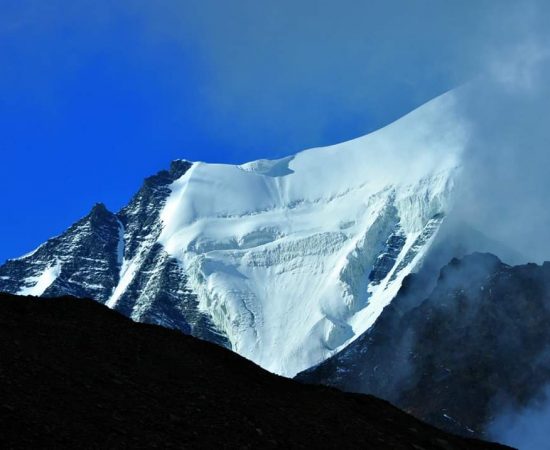
Mt. Black Peak
16d - 15n (uttarkashi).
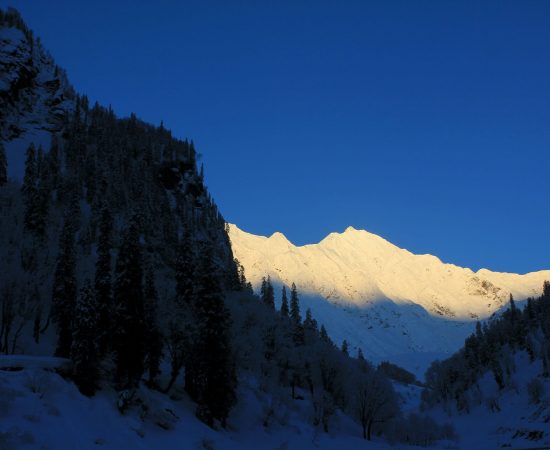
- Mt. Hanuman Tibba
12D - 11N (Manali)
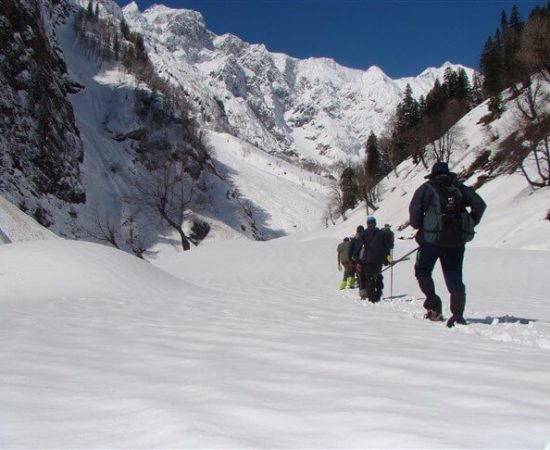
Mt. Friendship Peak
7d - 6n (manali).
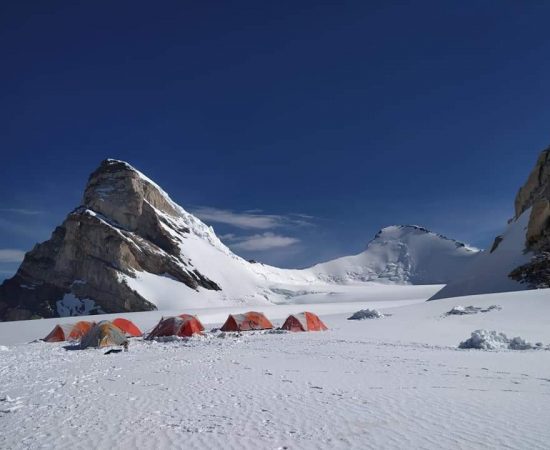
23D - 22N (Leh)
₹ 72,250 5% gst, recognition & association.
Recognised by Ministry of Tourism, Government of India as an Approved Adventure Tour Operator

Naggar, Manali, Distt. Kullu. (HP.)
Best Expediton of India
- Black Peak Expedition
- Mt. Nun Expedition
- Mt. Deo Tibba Expedition
- Mt. Friendship Peak Expedition
Information
- Terms & Conditions
- Privacy Policy
Subscribe Our Newsletter

DEO TIBBA TREK
6001 meters
Difficulty level
Best time to do.
May-June/Sep-Oct
Rs 13,000 per person
6 Days/5 Nights
Deo Tibba Base Camp Trek Overview
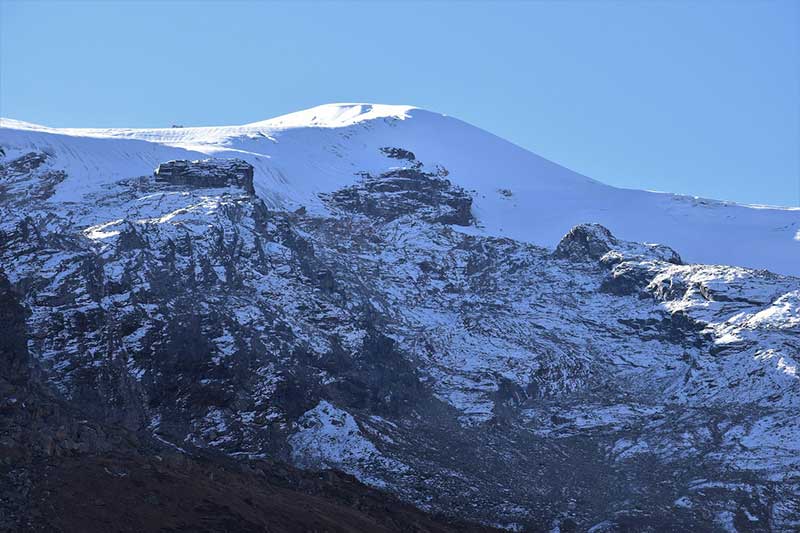
Standing tall at 6001 meters, Deo Tibba is one of the tallest mountains of Kullu district and its summit provides an amazingly beautiful view of the Pir Panzal mountain range. The trek is absolutely mesmerizing as you get up close and personal with the mighty Himalayas.
It starts from near Jagatsukh, a village near Manali, and crosses through charming forests, amidst mountains and ends at a blue glacial lake. While technical climbing is required to reach the summit of Deo Tibba, the trek upto its base can be done by all medically-fit people having some prior trekking experience.
Trek Itinerary
Arrival in kullu-manali.
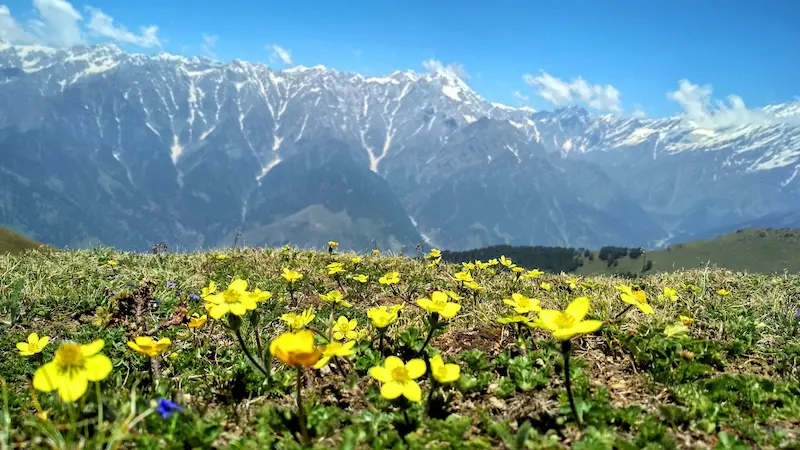
You arrive in Kullu-Manali and get some time to acclimatize yourself. You can stay at our partner hotels/ guesthouses/ huts/ campsites.
Jagatsukh to Khanool to Chhika
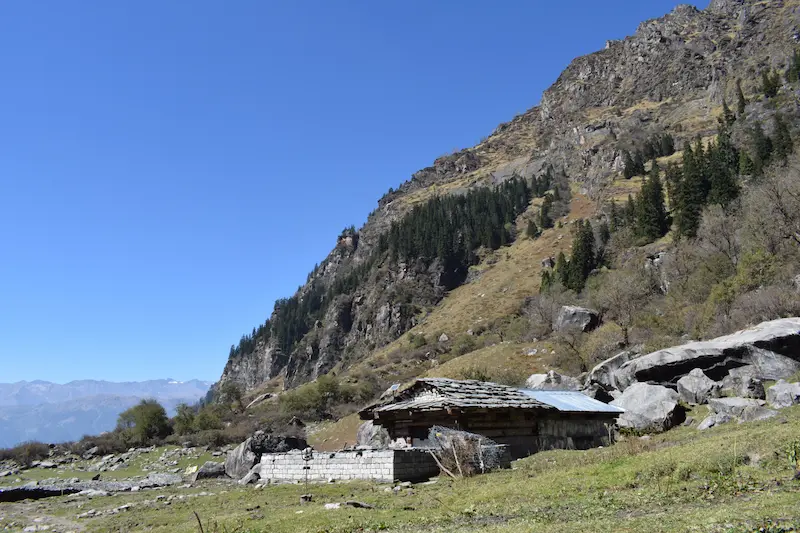
We meet in Manali and head for Jagatsukh, a beautiful small village located on the left bank of river Beas and some 7 kms from Manali. We take a dirt road from Jagatsukh and go up the mountain till we reach a water dam site in Khanool, which is some 12 kms from Jagatsukh. Our trek starts from this dam site. We trek along the Jagatsukh Nallah for at least another four to five hours (depending on the speed) to reach the picturesque Chhika. Night stay in the tents in Chhika.
Chhika to Seri
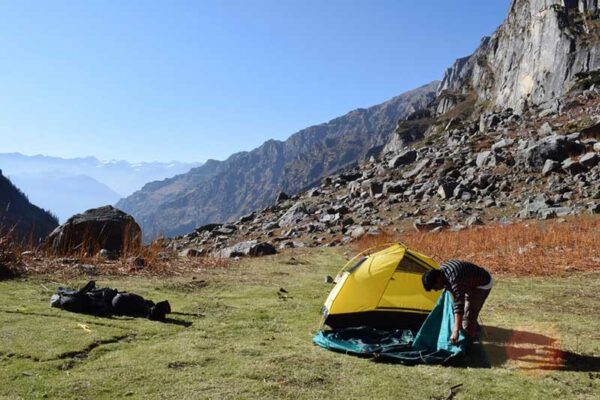
Next morning, after breakfast we resume our trekking. We trek along the Jagatsukh Nallah and in the middle of the mighty mountains and reach Seri before sunset. We stay here for the night and get further acclimatized to the rising altitude. It also starts to get a little windy up here and nights can get real cold here especially if weather turns to worst.
Seri to Tenta
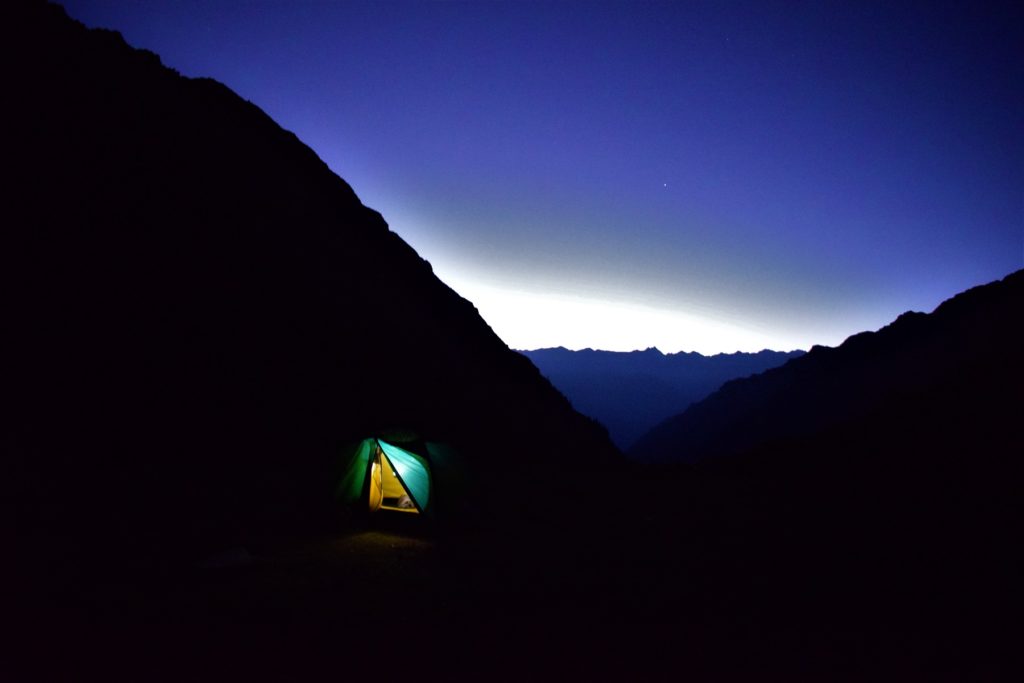
We start early after breakfast. We continue to ascend along the gushing rivulet and amidst closing mountain walls and reach Tenta by evening. We stay and rest here for the night in the tents. We are in complete wilderness.
Tenta to Deo Tibba and Back
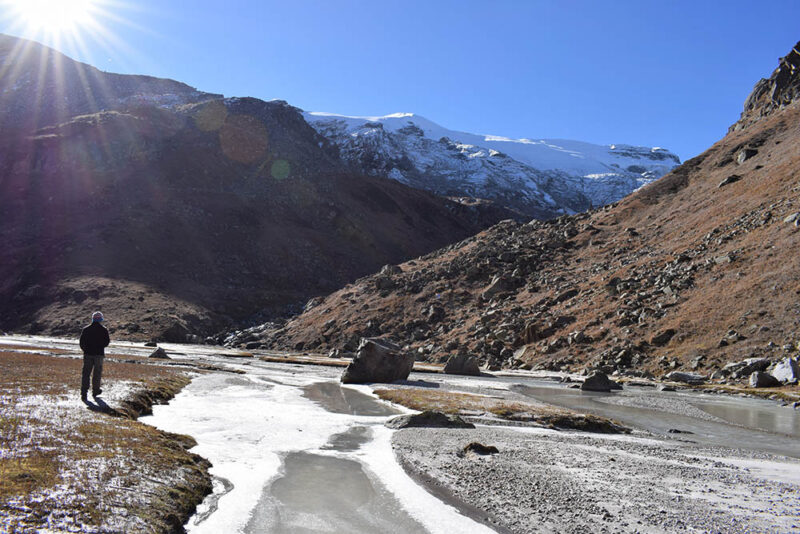
Next morning, we go up further along the white streams and reach the blue glacial lake known as ‘Chhota Chandertaal’. Standing by the lake, Deo Tibba is right above us. We stay here some time and return to Tenta. We spend the night in Tenta.
Tenta to Chhika
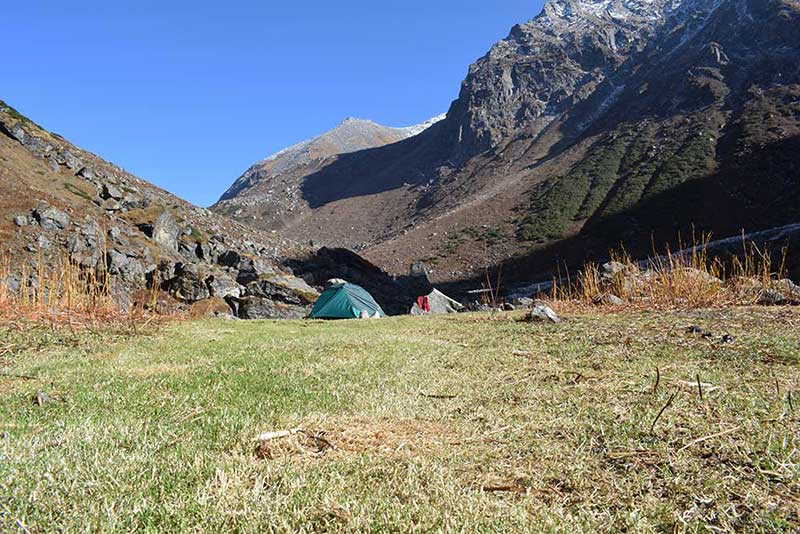
Next morning after breakfast we start descending and reach Seri by afternoon. We don’t stay here and reach Chhika by sundown. We stay in Chhika for the night.
Chhika to Khanool and back to Jagatsukh
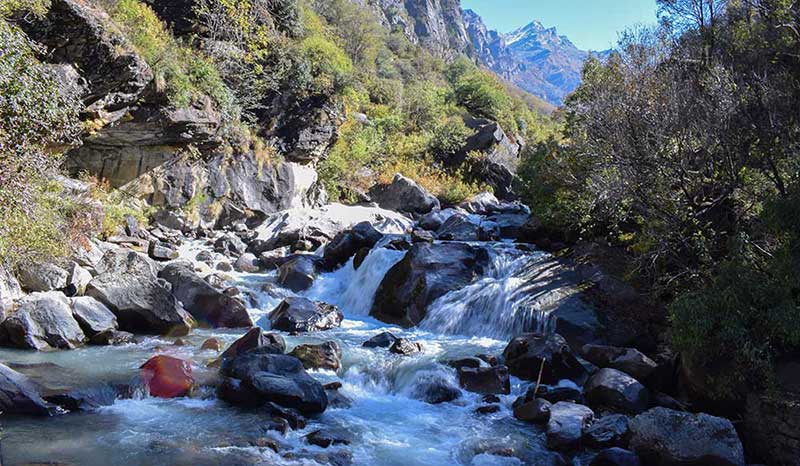
Today’s the last day of our trek. We start descending after breakfast and reach Khanool by afternoon. A vehicle is waiting for us here. We return to Jagatsukh/Manali.
Frequently asked questions and answers
Will i be refunded if i cancel a trek.
It depends on when you are cancelling it. This is our trek cancellation policy:
Total Refund: If cancelled a month before the beginning of the trek date.
75% cash refund: If cancelled 15 days before the start of the trek date.
50% cash refund: If cancelled within a week before the start of the trek date.
Why cancellation charges?
Because when a trek is booked, our team starts making arrangements like taking permissions from the local administrations to checking routes to setting up base camps etc. So, if a trek is cancelled nearer to the trek starting date, higher the cancellation charges or lesser the refund amount.
Do we cancel treks?
It’s extremely rare. The Wildcone will cancel a trek only and only due to extreme and unfavorable weather conditions or natural calamities or because of some other external factors like a government regulation etc which are not in our hands. We have not cancelled any treks so far. If we do, we will provide a voucher for the full trek amount. The voucher can be redeemed in any of our future treks.
What all do I need to bring along for a trek?
Depends from trek to trek. But a pair of good hiking shoes and warm clothes are a must for any trek. Once you have booked a trek, our team members will provide you all information and answer all your queries.
What’s the menu during a trek?
We serve three vegetarian meals — breakfast, lunch and dinner — everyday on a trek. Consumption of alcohol is not allowed.
Why trek with the Wildcone?
Because your safety and a hassle-free experience is our top priority. And this is ensured by our seasoned professionals, who are the most trusted trekking guides in the Kullu valley having decades of experience in mountaineering.
Book Deo Tibba Trek
Just fill in the simple form below and we will get back to you!
More Treks For You
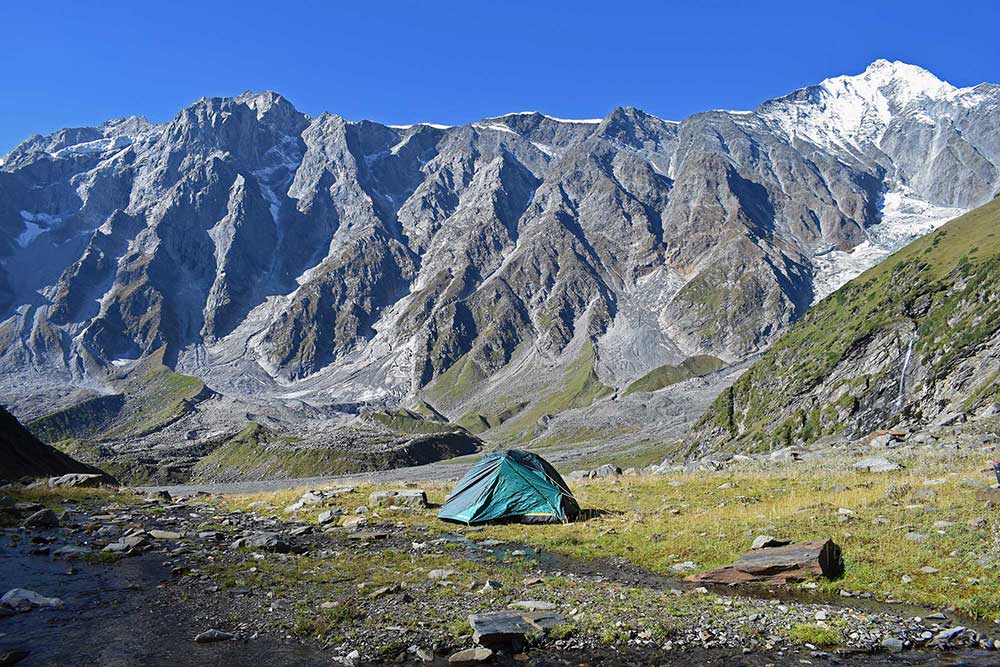
Beas Kund Trek
Trek the origin of Beas river in the mountains of Kullu-Manali.
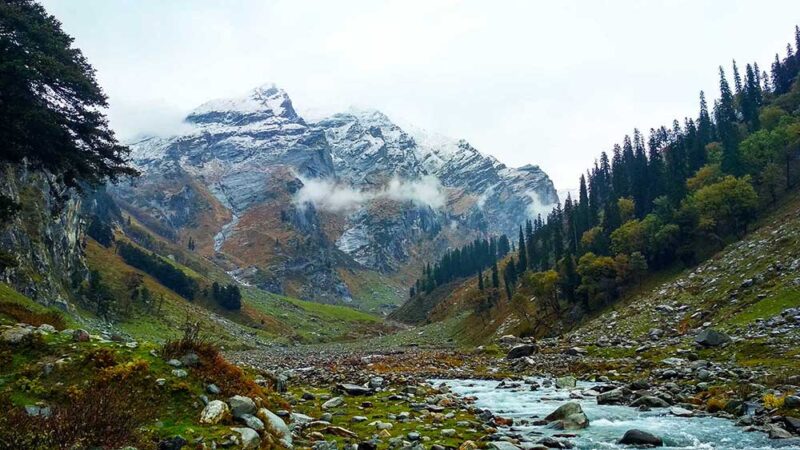
Hamta Pass Trek
The most beautiful trek that connects Kullu with Lahaul.
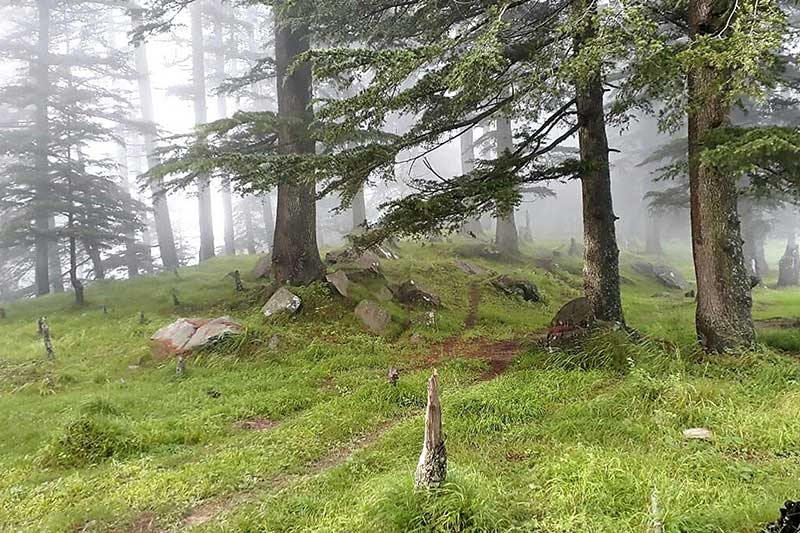
Bijli Mahadev Trek
An awesome trek from Naggar village to Bijli Mahadev, the God of lightning, in Kullu.
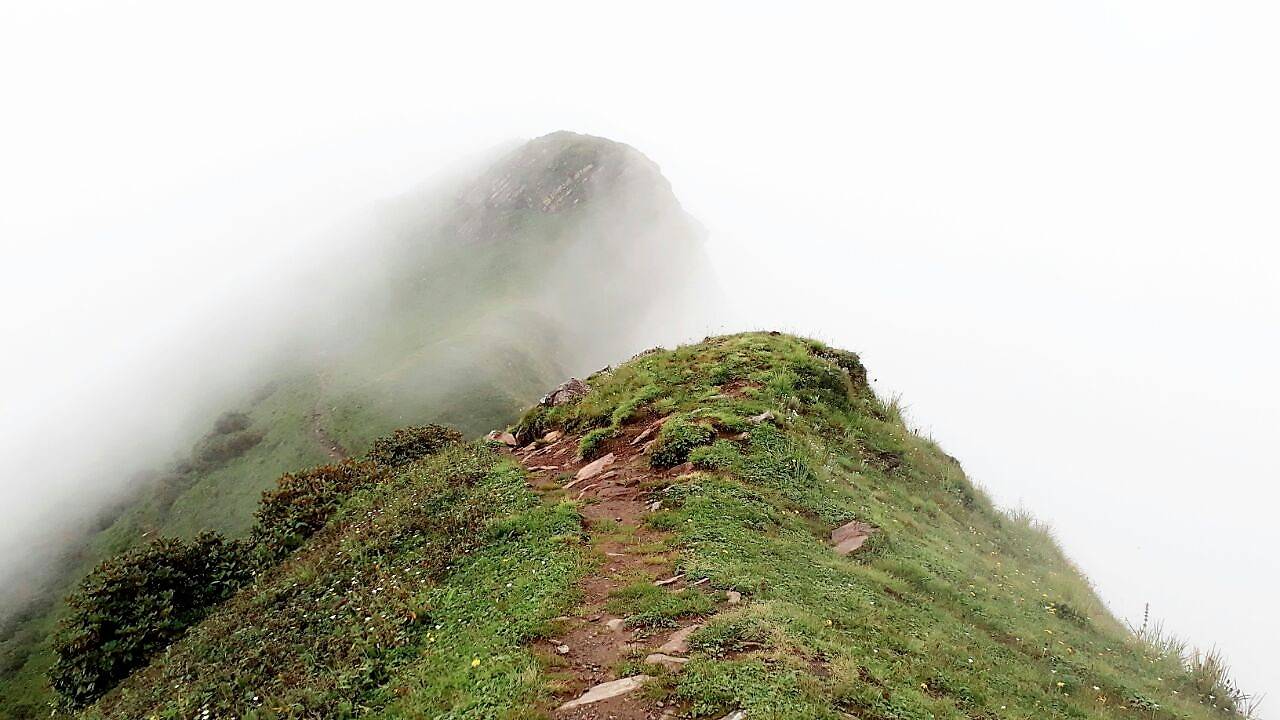
Malana Village Trek
Enjoy the old trek route from Naggar village to the mysterious Malana village in Parvati valley of Kullu.

FUNGANI TOP TREK
Enjoy this beautiful virgin trek near Manali few know of and even fewer have explored.
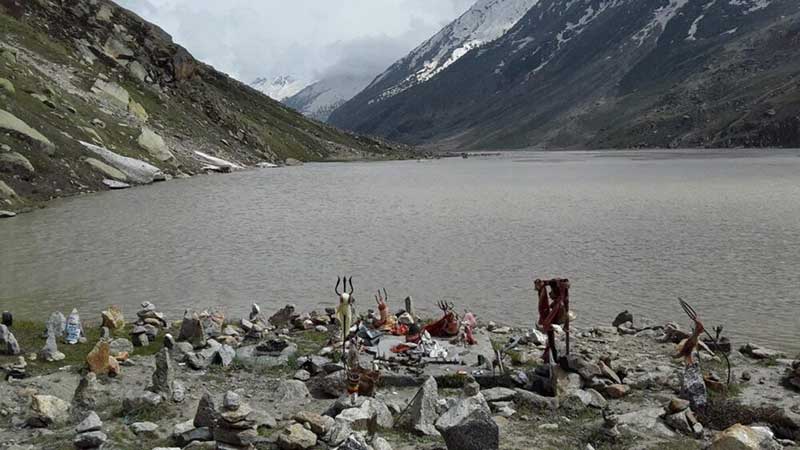
Mantalai Lake Trek
Trek up to the Mantalai lake, the source of mighty Parvati river in Kullu.
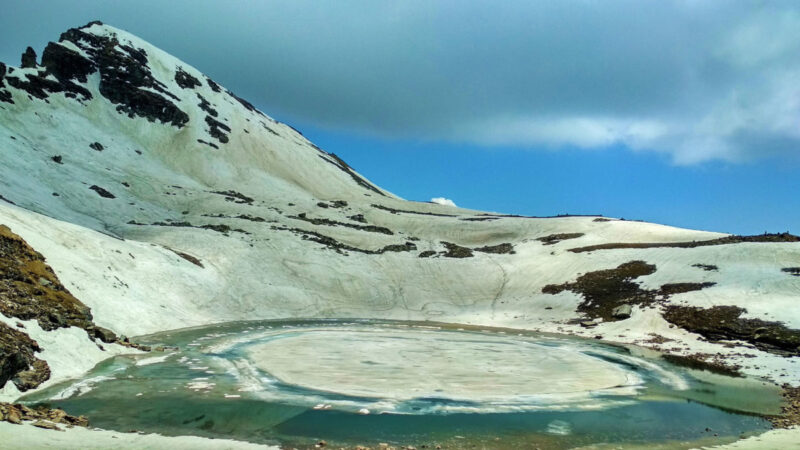
Bhrigu Lake Trek
An awesome trek that culminates at a Himalayan glacial lake.
Journey to the Sky: Explore the Mystical Deo Tibba Trek in Himachal Pradesh
The Deo Tibba Trek is a celestial journey into the heart of the Pir Panjal range in the Indian state of Himachal Pradesh. Nestled near the town of Manali, this trek is a symphony of alpine meadows, ancient forests, and breathtaking vistas.
Commencing from the village of Jagatsukh, the trail winds through dense pine and oak forests, revealing the splendor of the surrounding mountains. As trekkers ascend, the landscape transforms into open meadows, allowing panoramic views of the majestic Deo Tibba peak.
The highlight of the trek is reaching the pristine Chandratal Lake, situated at an altitude of approximately 4,480 meters. The turquoise waters of the lake mirror the grandeur of the surrounding mountains, creating a surreal setting that captivates the soul.
Deo Tibba Trek is not just a physical endeavor; it’s a spiritual communion with the Himalayas. The trail takes trekkers through ancient villages, where traditional Himachali culture thrives. The rugged beauty of the terrain, the serene ambiance of the high-altitude meadows, and the unparalleled views of Deo Tibba make this trek an unforgettable odyssey for those seeking the sublime beauty of the Himalayas.
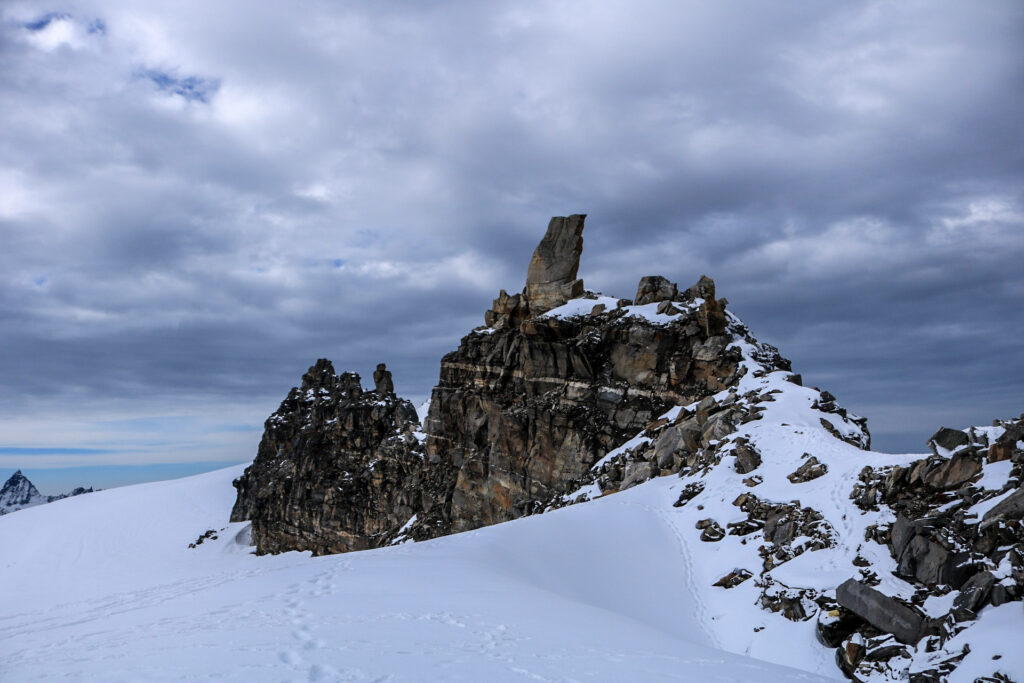
Upcoming Treks to Deo Tibba
Deo Tibba Base Camp Trek
The Chhota Chandratal Trek
Available Batches
August 2024, september 2024.
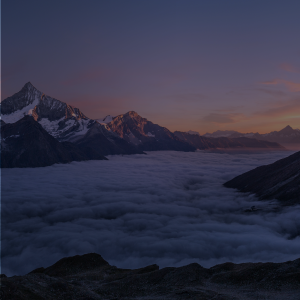
Brief Description
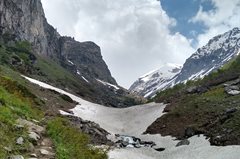
Brief Itinerary
Detailed itinerary.
Manali - Khanol (2700m) - Chikka (3200 m)
Distance: 12 kms
Duration: 2-3 hours
Report in Manali at 8 AM. After freshening up and breakfast in Manali, board a taxi for Khanol, the last village by road via Jagatsukh village. Reach Khanol in 1.5 hours. The trek starts from Khanol and follows a gradual ascent through the thick pine forest which opens at Chikka, our campsite for the day, which boasts of a Nag Mandir. Overnight stay in camps.
Chikka- Seri- (3600 m)
Distance: 6 kms
Duration: 5-6 hours
Today we trek along the bank of Jagatsukh river and then enter the thick forests giving way to boulders and carpet of wildflowers. With increasing elevation and declining tree line, we are introduced to the meadows of Seri which was once a glacial lake. The camping site has many small and big streams along with Tainta waterfall in the background. Overnight stay in camps.
Seri - Tainta (3900 m)
Distance: 3 kms
Duration: 3-4 hours
The day starts with easy walking across the flat section of the meadow followed by stream crossing which is the grub to Jagatsukh Nala. The trail now consists of the steep climb through the boulders and leads to the moraines field. This is the campsite for today, where we will get ample time to relax and acclimatize. As you explore around the campsite you will realize that it is hard to get clear views of Mt. Deo Tibba from here however you will get aesthetic views of Jagatsukh Peak. Overnight stay in the camps.
Tainta- Mini Chandratal (4480 m)- Tainta
Distance: 10 kms
Duration: 6-7 hours
Today we start early with our packed lunches and leaving behind our backpacks. We trek through the stretch of moraines. All this while Deo Tibba stays in your view standing in its majestic glory. After a steep climb, we get to see the high altitude lake with emerald blue water. After spending some time at mini-Chandratal we return to our campsite at Tainta. Overnight stay in camps.
Tainta- Chikka
Distance: 9 kms
We will retrace our way back to Chikka through the meadows of Seri. We halt at Dudu Pathar for lunch. Overnight stay in camps at Chika.
Chikka- Jagatsukh-Manali
Duration: 4-5 hours
Today we trek back to Khanol, where we board the vehicle which will drive us to Manali. Expect to reach Manali late in the afternoon.
What's Included
- Veg/Eggs Meals during the trek starting lunch on Day 1 till breakfast on Day 6
- Forest Permits/Camping Charges/Permits, Trek Permit Fee/IMF Permission (Upto the amount charged for Indian nationals)
- Camping tents, Sleeping bags, mattress
- Microspikes, gaiters, seat harness, carabiners, helmet as required
- Mountaineering course certified Trek Leader with Wilderness Emergency Responder
- Experienced Local guide, cook, helpers
- Porters or mules for carrying common luggage
- Transportation from Manali to Manali.
What's Not Included
- Meals during road journeys
- Any kind of Insurance
- Any expense of personal nature
- Any expense not specified in the inclusion list
- Carriage of personal rucksack
- Meals during Hotel Stay, if any
Are you Eligible for this Adventure?
Max Altitude

BRS Level Required
Deo Tibba Base Camp Trek is a level 4 adventure on the Bikat Rating Scale.
This makes it mandatory for you to have high-altitude experience of preferably multiple treks marked at level 3 on the BRS. The altitude, the terrain, and the nature of the climb demand a certain level of endurance and a need for you to be aware of how your body reacts to the various features of the high-altitude environment.
If you do not know what level of BRS trek would suit you best, worry not! Fill out this Form:

we will send you a progression chart to help you comfortably get out of your comfort zone in order to level up and ultimately reach your highest potential in the big, bad world of outdoor adventure.
Packing List
This is a list of essential items for individuals doing the trek with Bikat Adventures. This list contains only those items which the participants are required to bring with them. The list excludes those items which are provided by Bikat Adventures on the trek. We have divided the items into five categories. All the items in the list are essential except for those marked as optional.
Trekking Gear
- Ruck sack bag with rain cover. Qty -1
- Day Pack Bag - Recommended for treks with summit day
- Head Torch with spare Batteries. Qty -1
- U V protection sunglasses. Qty -1 Here is how you can choose the best sunglasses for trekking.
- Water Bottles: 2 bottles of 1 liter each
- Non-skid, deep treaded, high-ankle trekking shoes Qty -1
- Pair of light weight Slipper/Sandals Qty -1
- Quick Dry Warm lower or Track Pants. Qty - 2
- Full sleeves T-shirts/ Sweatshirts. 1 for every 2 days of trekking
- Pair of thick woolen socks. 1 pair for every two days of trekking
- Thermal Body warmer Upper & Lower. Qty-1
- Undergarments. Qty - 1 for every day of trekking
- Warm jacket closed at wrist & neck .Qty-1
- Full sleeves sweater. Qty -1
- Rain wear ( Jacket & Pants ) . Qty-1
- Pair of waterproof, warm gloves. Qty-1
- Woolen cap. Qty-1
- Sun shielding Hat. Qty -1
- Personal toiletries kit (Small Towel, Toilet paper, paper soap, Bar soap, toothbrush, toothpaste, cold cream, etc.)
- Sun screen lotion small pack. Qty -1 Here is your Sun Protection 101 to stay safe in the bright sunny outdoors.
- Lip Balm small pack. Qty-1
- Small size, Light weight & Leak proof lunch box. Qty-1
- Plate. Qty- 1
- Spoon.Qty-1
- Tea/Coffee (plastic) Mug.Qty-1
Miscellaneous
- Camera (Optional)
- Carry your medicines in plenty in case you have any specific ailment. Consult your doctor before joining the trek.
- Dry fruits, Nuts, Chocolate bars (Optional)
Frequently Asked Questions
Eligibility, is this adventure good for me, what’s a good fitness benchmark for this adventure, what skills do i need to complete this adventure, what is the minimum and maximum age limit, about the activity, where is it located, what are some of its highlights, what are some of its challenges, what is the best season for this, what is the accommodation type, what is the temperature like here, is it technically challenging, connectivity, how do i reach the starting point, is there cellular network available throughout, where is the nearest atm, if i choose to travel to the base with you, what is the pick-up point, what time is the drop-off on the last day, what are the nearby attractions that i can explore, equipment & gear, what equipment is provided to us, what can i rent from you, where will i receive the rented items, where do i have to return the rented items, what gear do i need to bring, are there local shops to rent/buy equipment, facilities & additional services, can i offload my bag, can i leave any extra luggage i carry at the base of this adventure, what are the meals like, what are the washroom/ toilet facilities like, what should i do if i get my period on this adventure, what are the medical facilities available to me on this adventure, are there any electricity charging points on this adventure, mandatory documents, what documents do i need to carry, do i need insurance for this, do i need a permit for this, certification, do you provide a certificate of completion, when and how will i get the certificate of completion, international travel, will i need a visa, when should i apply for the visa, what kinds of insurance do i need to travel here, what is the specialty of this when compared to other mountain ranges, till which month can i make a booking for this, what is the qualification of the outdoor leader provided to us, how do you choose your outdoor leaders, is it safe for women, what is the ratio of outdoor leader to participants, what do you do in case of an emergency, what are the rescue options on this adventure, how do you choose your equipment, can i attempt this adventure if i have a specific medical condition, sustainability, what kind of camping do you practice on your outdoor adventures, why are you against fixed camping in the outdoors, how do you manage overcrowding on certain trails, what are some things to remember when using a dry toilet, why should i avoid wet wipes in the outdoors, where should i dispose of my sanitary waste if i am on my period, why should i carry my own utensils on an outdoor adventure, booking process, what happens after i make the payment, do you create a whatsapp group of participants before the start date of the activity, do i need to submit a medical certificate, do i need to submit an undertaking form.
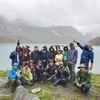
Small Group Size
Our batch sizes are capped at 15 for smaller treks with the trek leader and trekker ratio of 1:8. This ratio, in our years of experience, has proven to deliver the best trekking experience for individuals as well as groups. Capping the size of the group ensures individual attention to each trekker so that no signs of distress or need during the trek go unnoticed. It also helps to form a more cohesive cohort with better group energy which helps define the rhythm and pace of days on the trek. As you go higher up on the BRS scale, since the stakes are higher, expeditions have an even smaller group size with the ratio of expedition leader to climber set at 1:2.
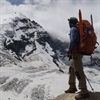
Qualified Trek Leaders
We follow a rigorous regime of hiring and training our experts in the field. Each trek leader is a certified mountaineer with years of experience in the field. In addition to their qualification, they also go through practical and situational training to tackle any and all kinds of sudden conditions that may present themselves on the ground. Being unpredictable is the core nature of the mountains but being ready for any circumstance as best as possible is a controllable asset that we try to nurture. Our field experts are also trained in basic medicine and first-aid response. Watch: Forerunners - The Making of A Trek Leader At Bikat Adventures
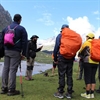
Guided Progression
Since Bikat Adventures is a learning-based organization, we help you climb up the ladder of difficulty within the sphere of outdoor adventure systematically. Our on-ground training modules are designed to handhold you through the upskilling process so that you are ready to take on bigger challenges.
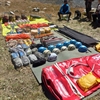
Equipment Quality and Check
All the gear used on our treks and expeditions is tried and tested, maintained for good quality, and is overall top-notch in quality and condition. We are continually looking to obtain the best of everything there is in the market so as to ensure optimum safety.
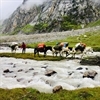
Support Systems
Along with the staff you see on-ground, we have a team of superheroes working in the background to give you the best experience possible. Our background team also comprises local staff from each area who know the region best. Having local support helps with studying the area, pre-planning, execution, and in receiving timely support in case of emergencies in these remote locations.
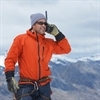
Communication
Our on-field staff is in constant contact with our teams based in primary locations so as to eliminate any avoidable delay in reaching additional help and support when required. We try to use the best tools for communication available, including satellite phones, in regions where they are not restricted.
What our customers Say

Cancellation Policy
Cash refund
Cancellations up to 30 days prior to departure date
5% deduction
Cancellations between 30 days to 15 days prior to departure date
50% deduction
Cancellations within 15 days prior to departure date
Voucher refund
Cancellations up to 5 days prior to departure date
No Deduction
Cancellations within 5 days prior to departure date
- Cash refund is applicable only in case of bookings made without using any promotional offer code or vouchers
- This is only a brief of cancellation terms. For finer details please refer Detailed Cancellation Policy.
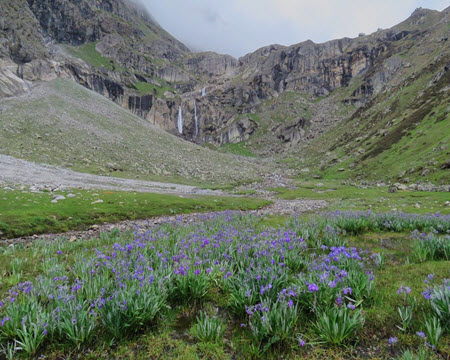
Subscribe for latest updates & offers
Similar adventures.

Hampta Pass Trek
An enchanting cross-over from manali to spiti.
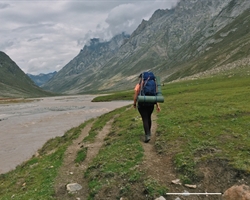
Miyar Valley Trek
The yosemite of the himalayas.

Ghepan Ghat Lake Trek
Hidden gem of himachal, enter your email, events by categories.

Mountaineering

Scuba Diving
Events by months.
- January July
- February August
- March September
- April October
- May November
- June December
Events By Nights
- 5 & More Night
- Environmental Policy
- Privacy Policy
- Term & Conditions
- Work With Us
- Address: 303, 3rd Floor, Tower B4, Spaze Itech Park, Sector 49. Gurgaon
- Pre Sale - 8448680062 , Post Sale - 8588878499, 9667639126
Bikat Adventures
- Cancellation & Refunds
- Content Sharing
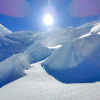
© 2024 Bikat Adventures - All Rights Reserved
Powered by: novel knett software solutions, submit enquiry.

IMAGES
COMMENTS
Deo Tibba is a 6000-er peak and is the second-highest peak of the Pir Panjal Mountains. It is in the Kullu valley and the trek to Deo Tibba starts from Manali. There is a local belief that Gods assemble on the top hence the name Deo Tibba. The peak is climbed during many Mountaineering Courses expeditions by the ABVIMAS institute because it has ...
Height: 6000 m. About Deo Tibba. Deo Tibba is a beautiful 6001 m high peak in the Pir Panjal range of the Himalayas in Manali, Himachal Pradesh. The Hindu religion believes that Deo Tibba is the assembly site of the Gods, and the Devtas are believed to sit on this peak, while the Lord of War & Weather (Indra), carries out a meeting from his ...
The trek to the summit of Mt. Deo Tibba is a challenging expedition that takes you through a variety of terrain, including forests, meadows, and glaciers. ... The Himalayas house the tallest mountains in the world and have long been a treasure trove for all adventure enthusiasts. The variety in terms of beauty, terrain, landscape, geography ...
Duration: - 6 Nights 7 Days from Manali to Manali. Base camp: - Bara Hazaar base camp. Summer Temperature: - 13°C to 18°C and Night: 0°C to 7°C. Pin Bhabha Pass Trek- Altitude: - 4171 m. Best Time: - May to June and September to October. Trek Level: - Moderate. Trek distance: - On foot 30Km - By taxi 24km.
Deo Tibba Expedition is a mountain in the Pir Panjal Range of Himalayan Mountains in Kullu District, Himachal Pradesh, India. At a height of 6,001 meters, it is a popular trekking destination among enthusiastic trekkers. The peak is distinctive in how the summit is a snow dome, similar to an ice cap, with a flat summit plateau rather than a ...
The Complete Guide to Deo Tibba Trek. Deo Tibba base camp trek is a beautiful trek in the Manali region. You go through lush green forests of pine, spruce, fir, oak & silver birches set against a dazzling landscape. Trekkers can enjoy splendid views of many snow-capped mountains like Deo Tibba (6001m), Norbu Peak (5226m) & Jagatsukh Peak (5050m).
The trek offers magnificent view of snow-clad peaks of Deo Tibba (6001 m), as well as the glaciers of Jagatsukh & Deo Tibba. The trekking course goes by Seri, which was a glaciated lake once upon a time, but is now a pasture laid with an incredible province of the alpine flowers.
Deo Tibba is a mountain located in Kullu District, Himachal Pradesh, India at a height of 6001 metres. [1] It is situated in the Pir Panjal Range of mountains. It lies to the southwest of Manali above Jagatsukh village. The first reconnaissance of Deo Tibba was made by General Bruce's guide, Furrer, who reported that one of its ridges looked ...
Nestled in the heart of the Himalayas, the Deo Tibba Expedition with Himalayan Adventure Trips is an extraordinary odyssey that beckons intrepid souls to. Skip to content. [email protected] +91-9318840504; Chat Now. Home; About Us. Blogs; Rescue Course; Rescue Team; Tours. Package Tours.
Quick Facts of Deo Tibba Base Camp Trek. Maximum Altitude: The Deo Tibba trekking takes participants 4480 meters above sea level. Grade: Medium to Difficult. Duration: 6 days and 5 nights. Trekking distance: 35 km. Trail type: High altitude with scenic landscape and awe-inspiring views of constantly changing terrain and the trail is steep and ...
Deo Tibba Base Camp Trek. Deo Tibba is a beautiful 6001 m. high peak situated in the Pir Panjal range of mountains in the Manali valley of Himachal Pradesh.It is located at Duhangan Nalla and Malana glacier. Deo Tibba consists of an extensive ice cap the actual climb being a snow hump accessible once the edge of the ice plateau is reached.
Detailed Itinerary. Day 1 : Report to Jagatsukh in Manali; Drive to Khanol & Trek to Chikka. The base for the Deo Tibba Base Camp Trek is scheduled at Manali. Report to Manali early in the morning. We tend to pick you up early in the morning from the Manali bus stand. Post breakfast and refreshments, we drive to Khanol via Jagatsukh village ...
Deo Tibba Base Camp Trek is a beautiful and challenging trekking destination located in the Kullu district of Himachal Pradesh. The trek takes 6 days to complete and provides stunning views of the Himalayan mountains. The trek begins in the beautiful town of Manali and takes you through lush green forests, meadows, and glacial streams.
Deo Tibba expedition is an adventurous ride into the mountains. It allows you to experience nature like never before. ... it was an amazing experience..even though it was our first trek to the Himalayas and Kedartal being a difficult terrain trek we were guided excellently by the Trekmunk team. They served us nutritious food, took complete care ...
Wish to go to a serene place undisturbed by the hustle and bustle of crowds of tourists? Go for the Deo Tibba Base Camp Trek. The trek begins in Jagat Sukh and will take you through flower-laden valleys, gushing brooks, verdant pastures, and a rugged bridge. Stunning views of the Pir Panjal mountain range and Rohtang Pass will also accompany you for a while along the way, propelling you onwards.
One of the most stunning treks in Himachal Pradesh's Manali area is the Deo Tibba Base Trek, also known as the Chota Chandratal Trek. This trek's route is quite diversified and is home to a wide variety of flora and species. ... The hike up Deo Tibba, a renowned summit, passes through the beautiful Himalayan foothills. At the peak, visitors ...
Standing tall at 6001 meters, Deo Tibba is one of the tallest mountains of Kullu district and its summit provides an amazingly beautiful view of the Pir Panzal mountain range. The trek is absolutely mesmerizing as you get up close and personal with the mighty Himalayas. It starts from near Jagatsukh, a village near Manali, and crosses through ...
Deo Tibba Trek is not just a physical endeavor; it's a spiritual communion with the Himalayas. The trail takes trekkers through ancient villages, where traditional Himachali culture thrives. The rugged beauty of the terrain, the serene ambiance of the high-altitude meadows, and the unparalleled views of Deo Tibba make this trek an ...
Take off on a once-in-a-lifetime adventure with Himalayan Adventure Trips' Deo Tibba Expedition. The beautiful Deo Tibba, which is tucked away in the heart of the Himalayas, rises lofty and…
Embark on an unforgettable adventure with the Deo Tibba Base Camp Trek, a 6-day journey through the breathtaking landscapes of the Indian Himalayas. This trek is suitable for adventurers of all skill levels, offering stunning views of the Himalayan mountain range, glacial lakes, and alpine meadows. Along the way, you'll immerse yourself in the unique local culture, interact with the local ...